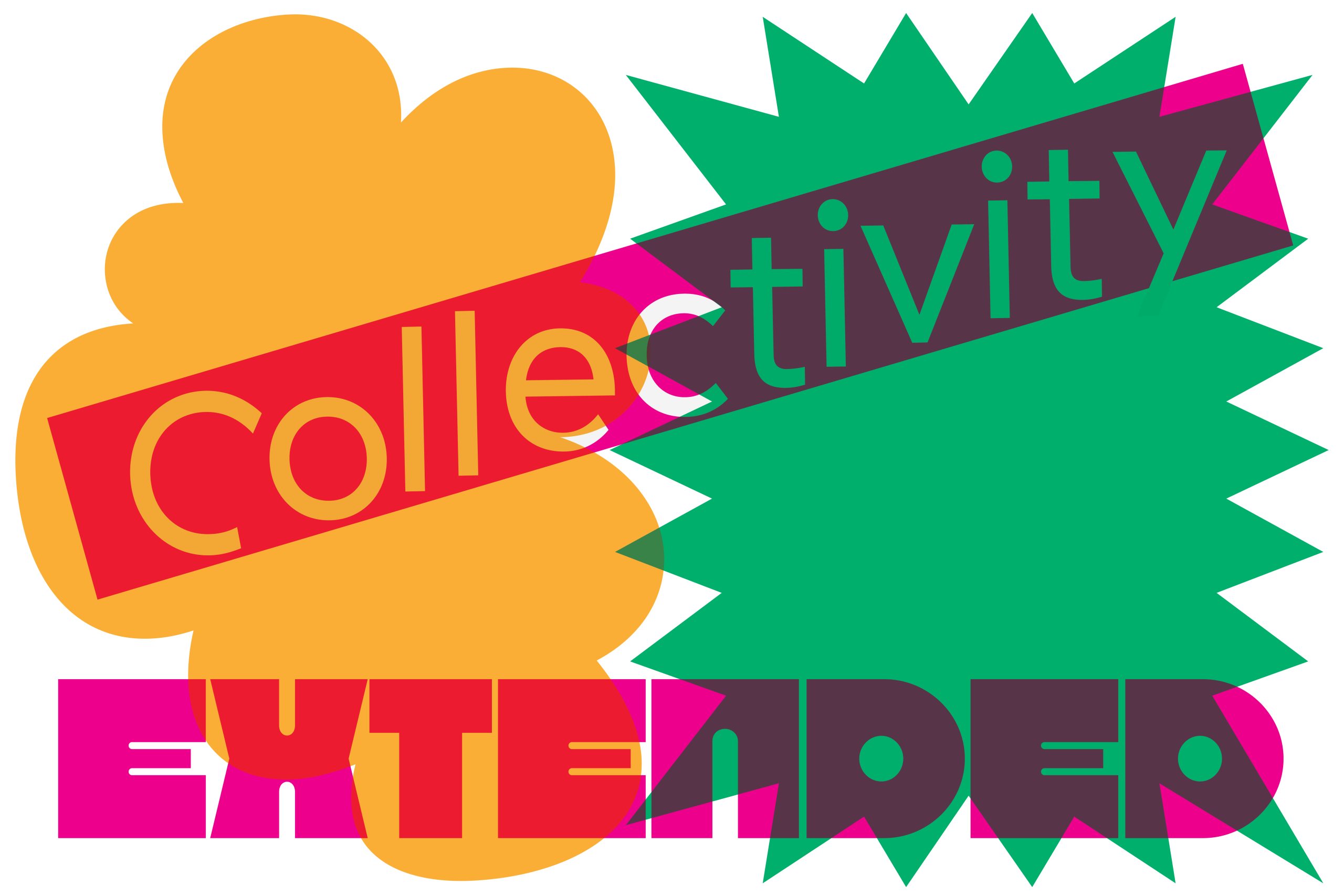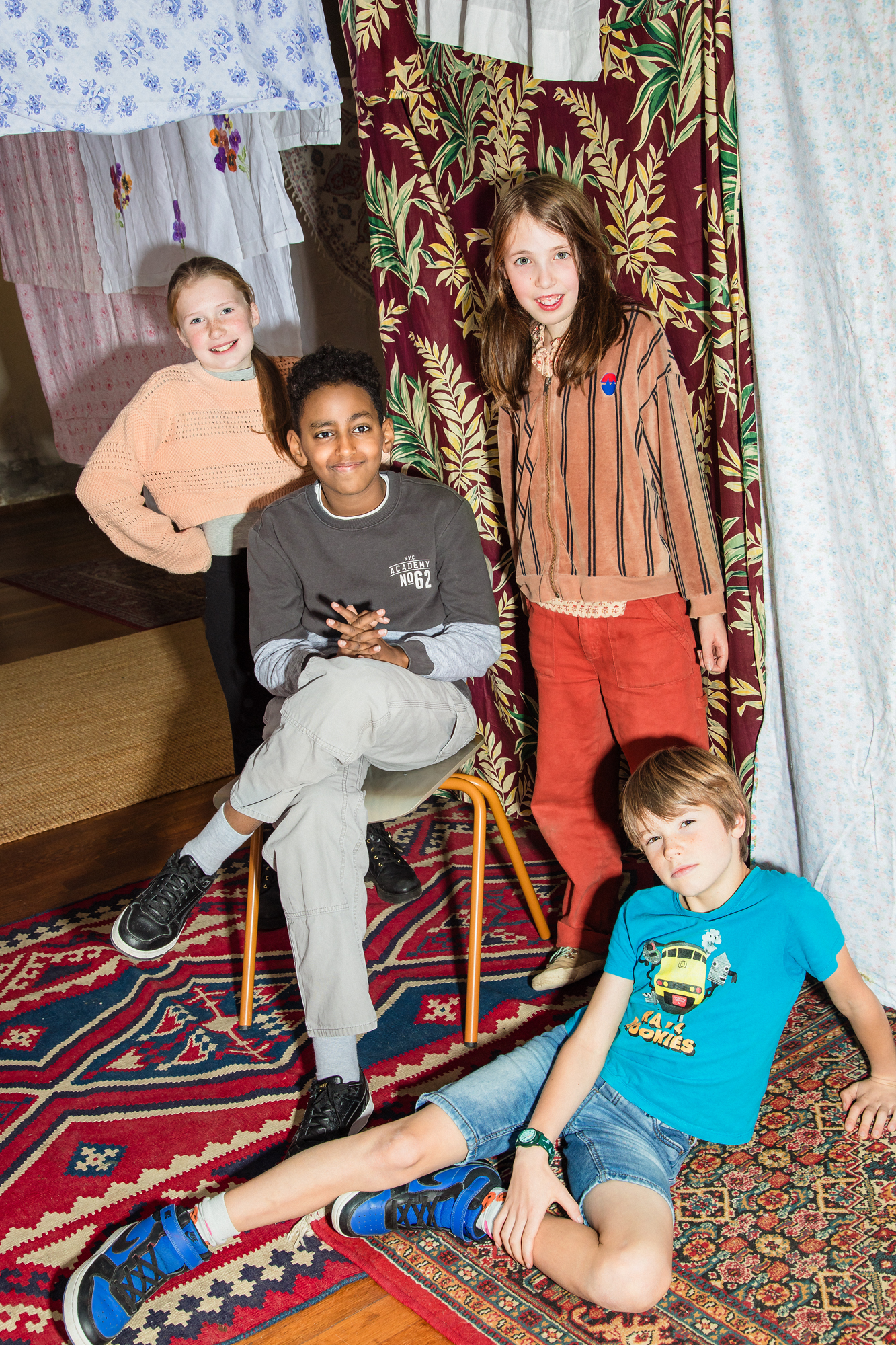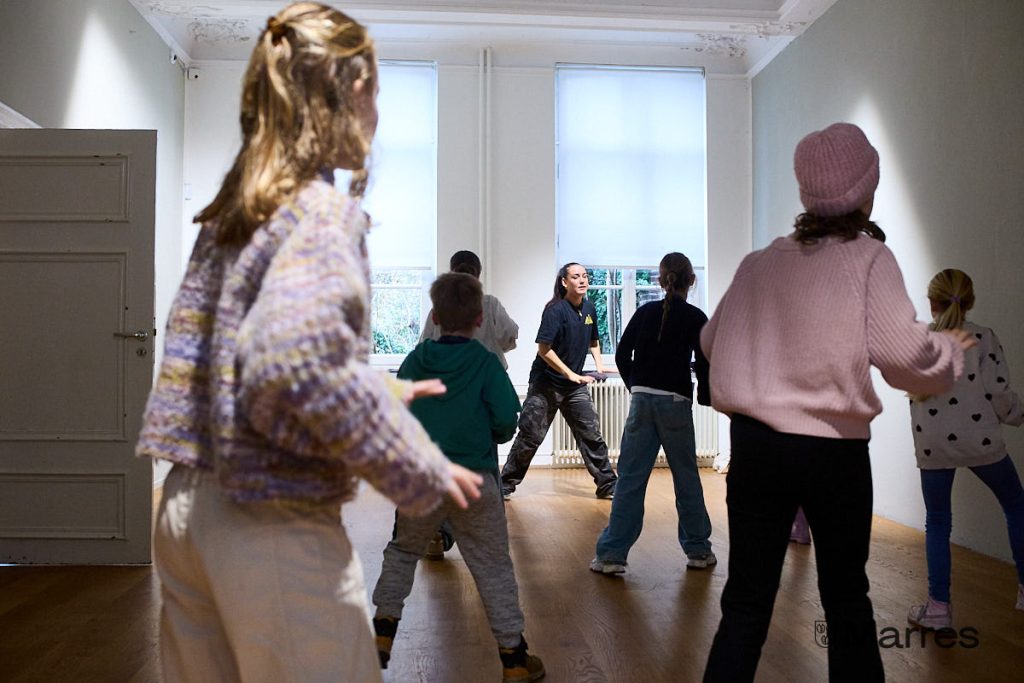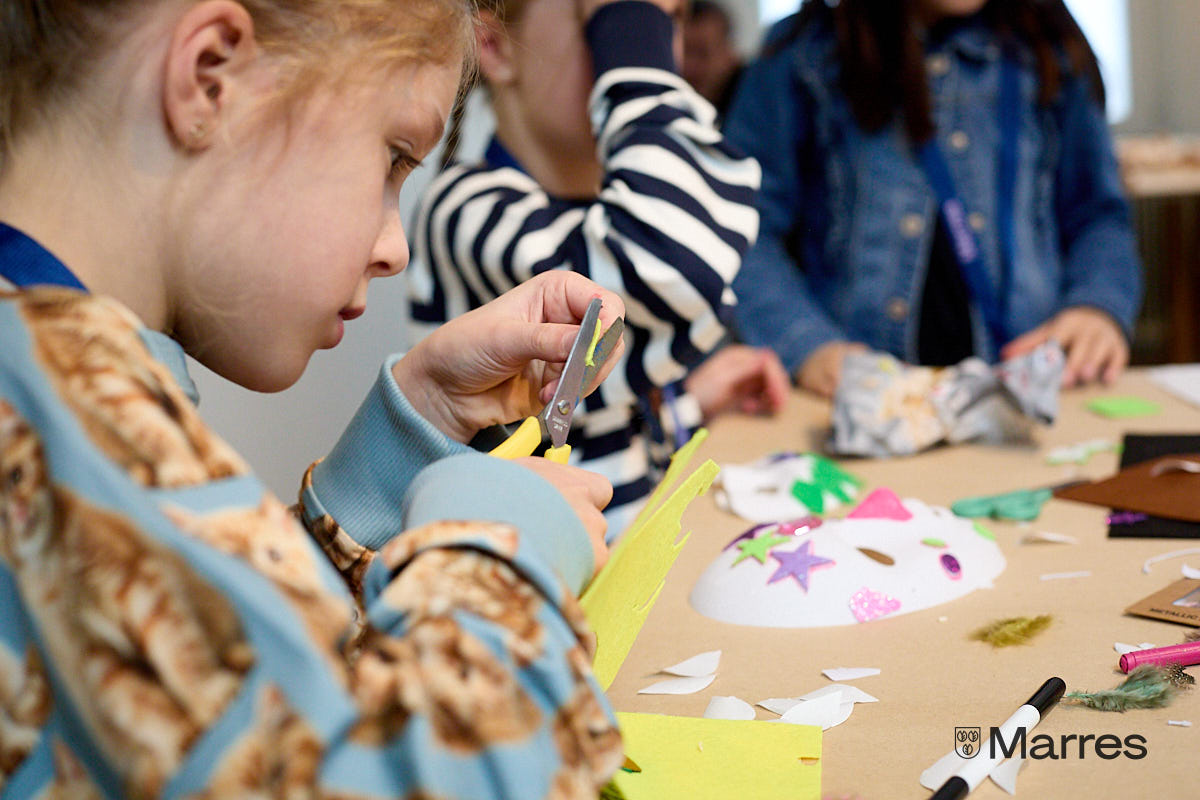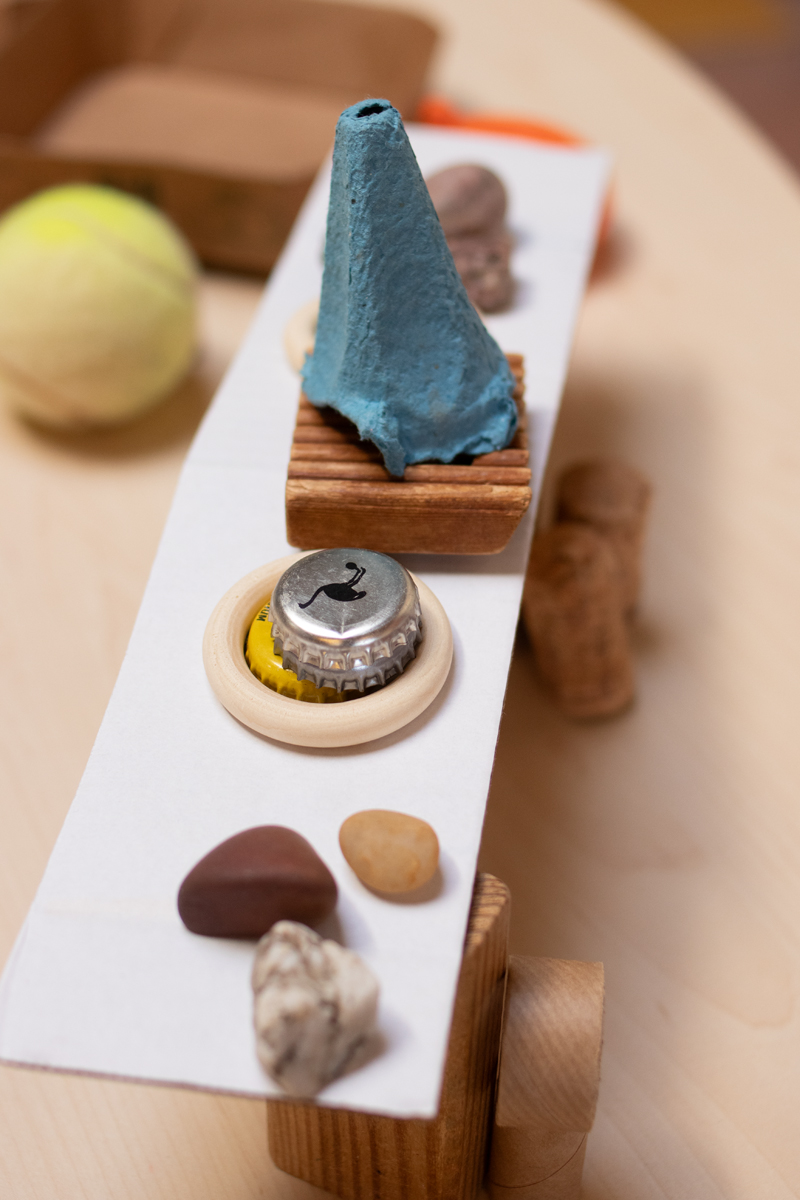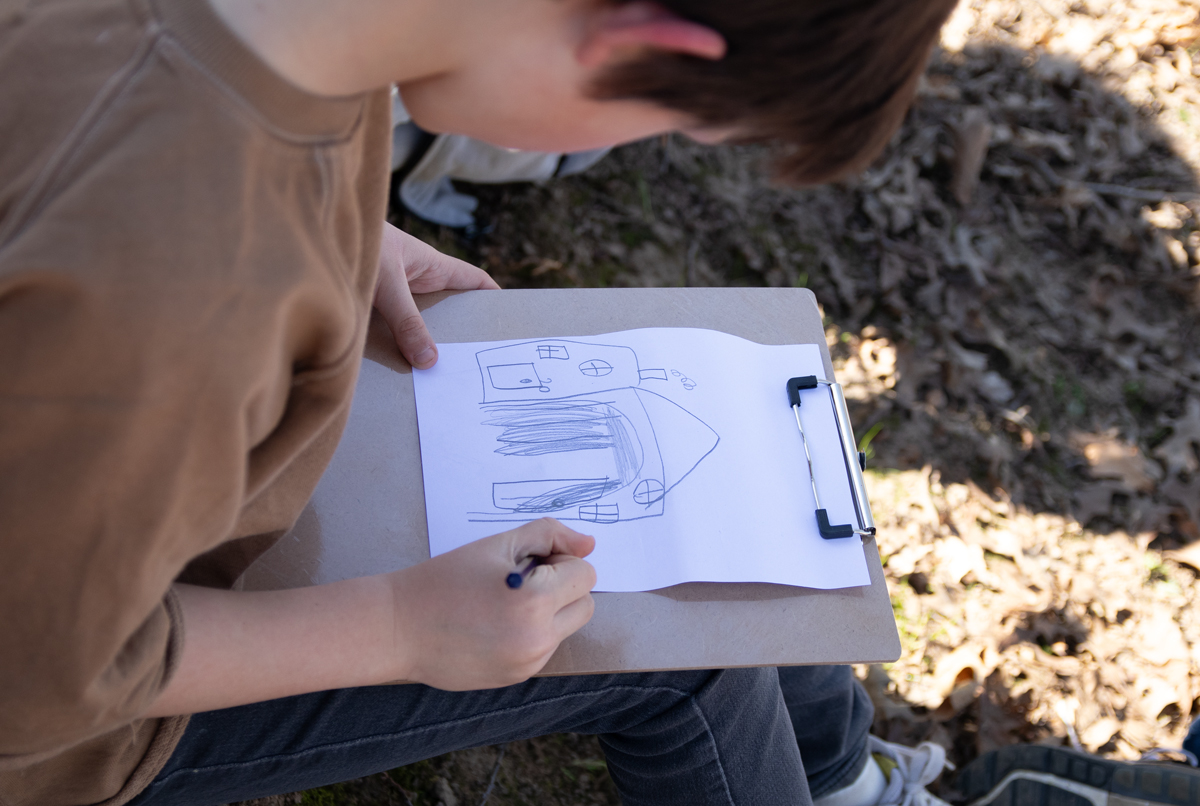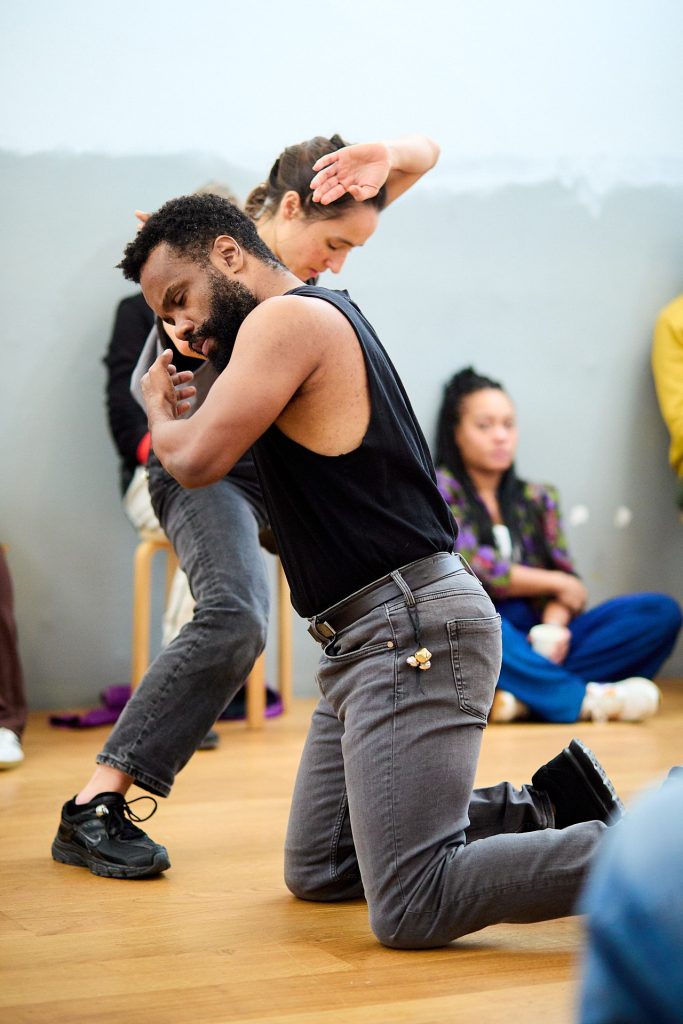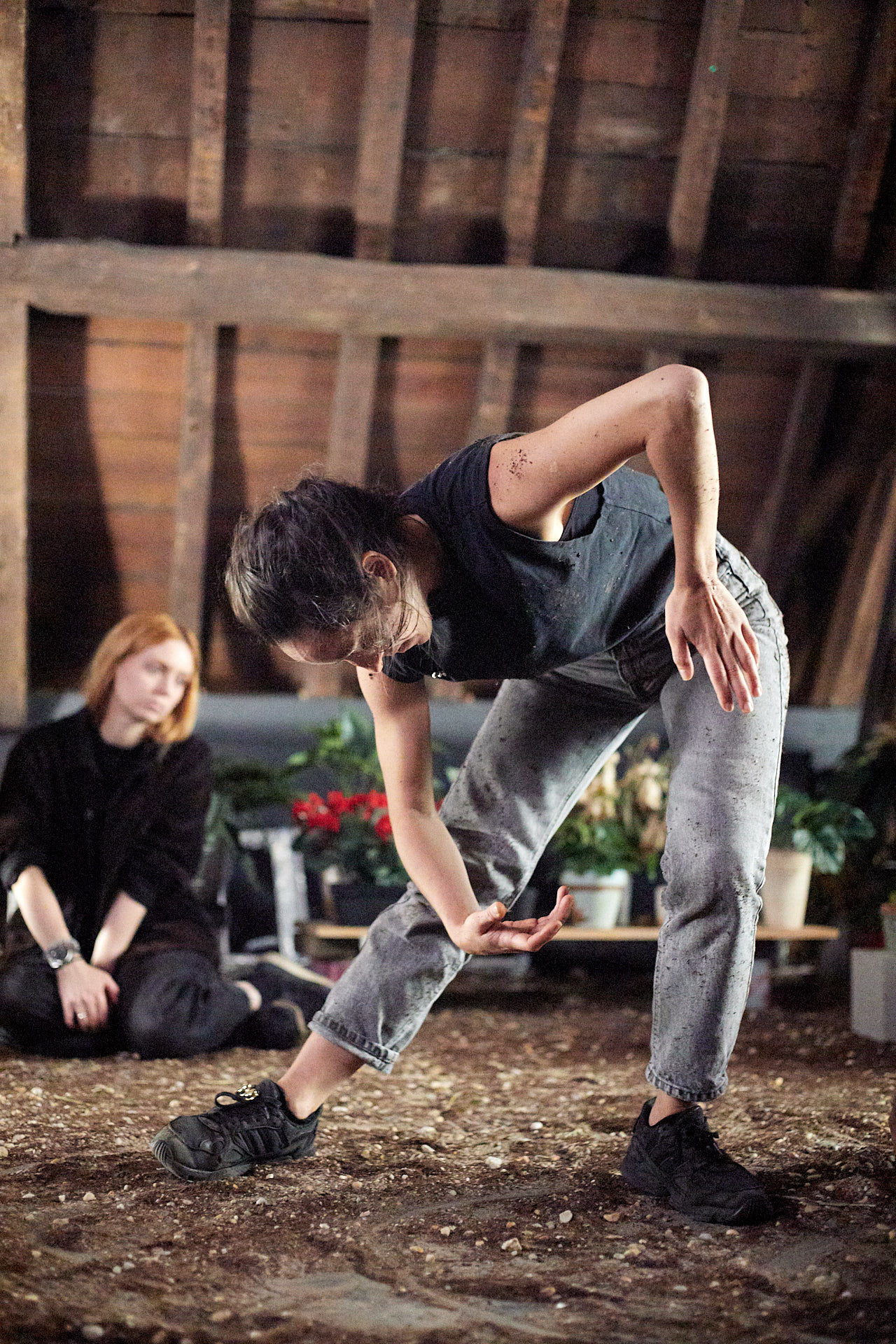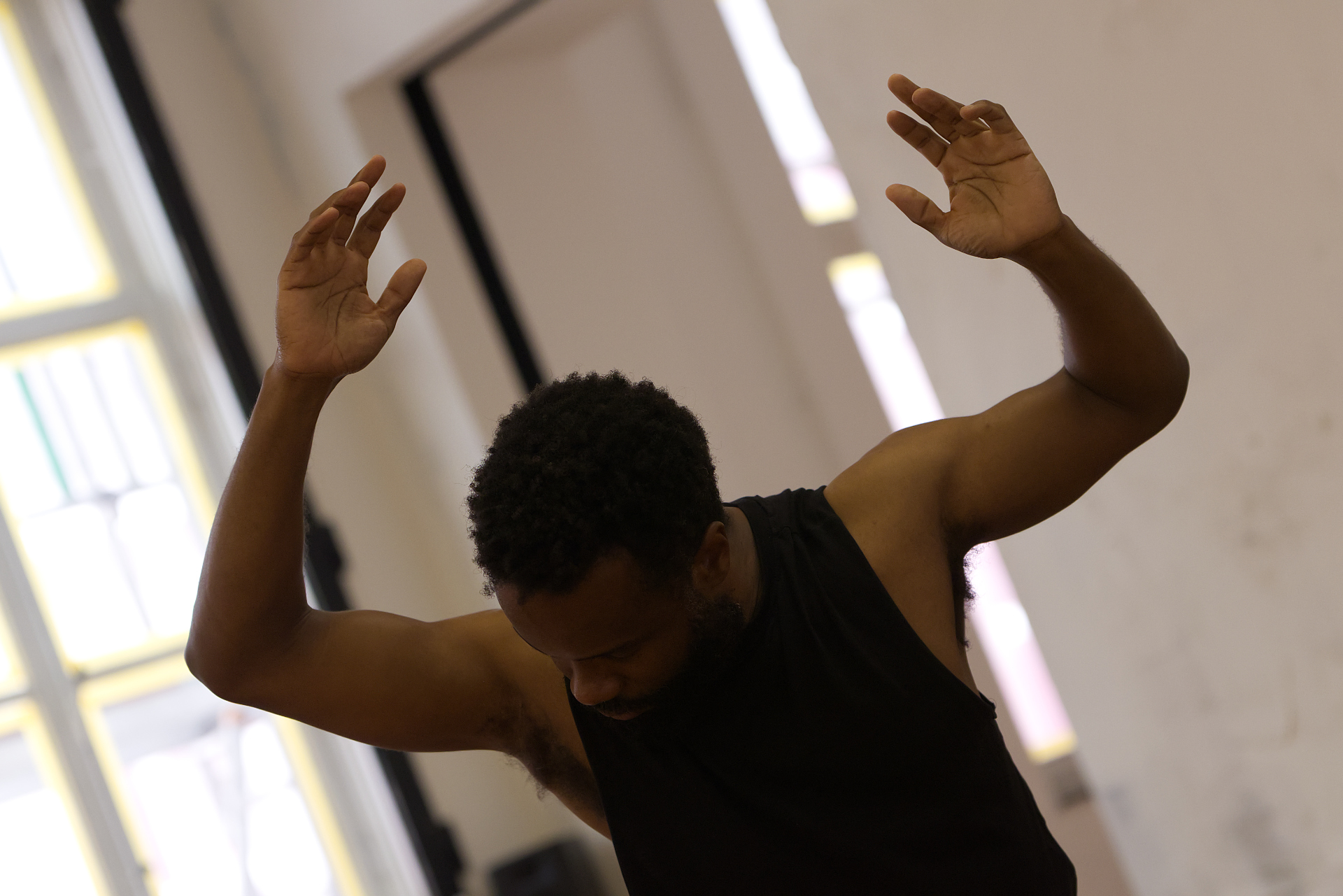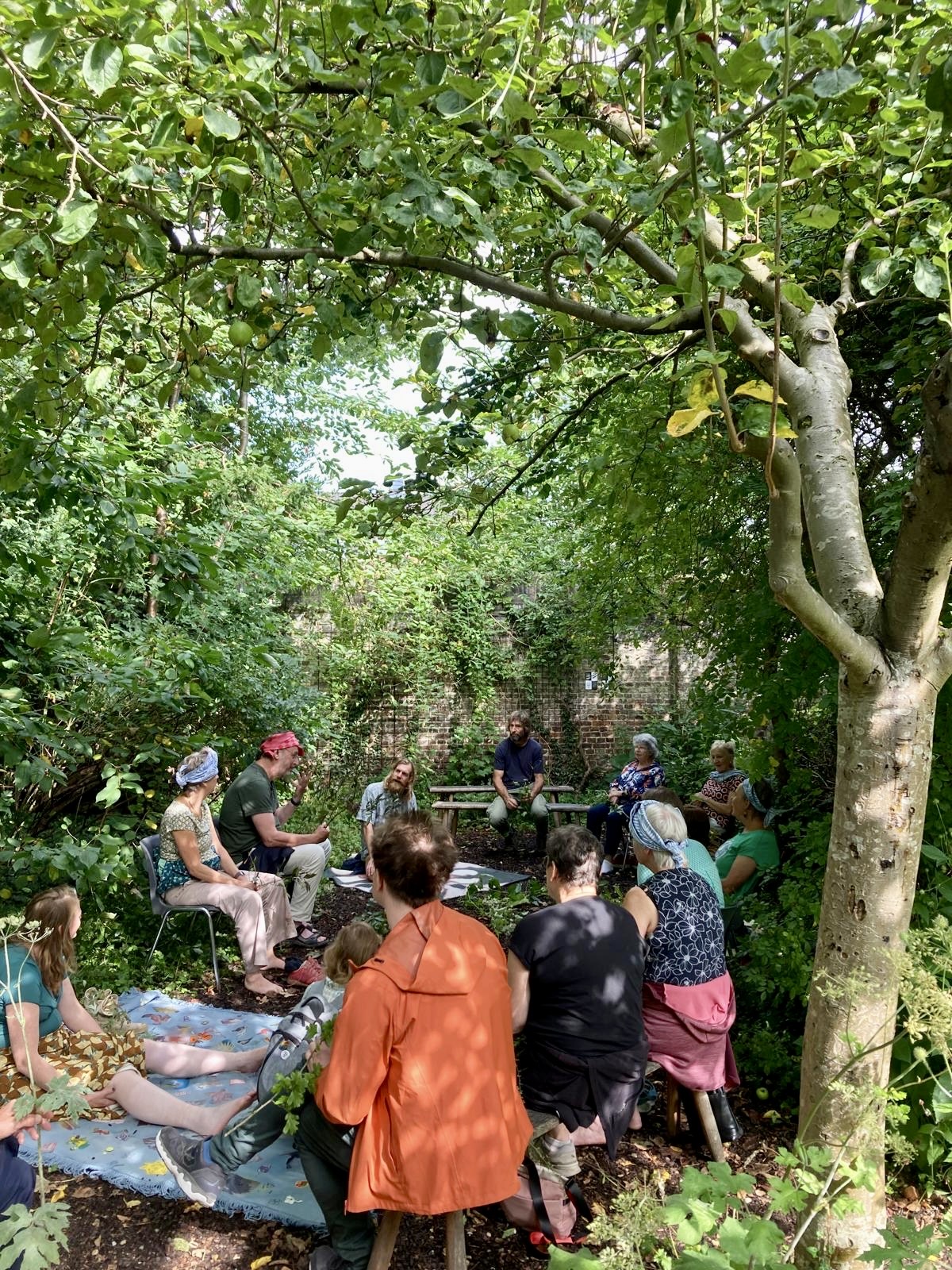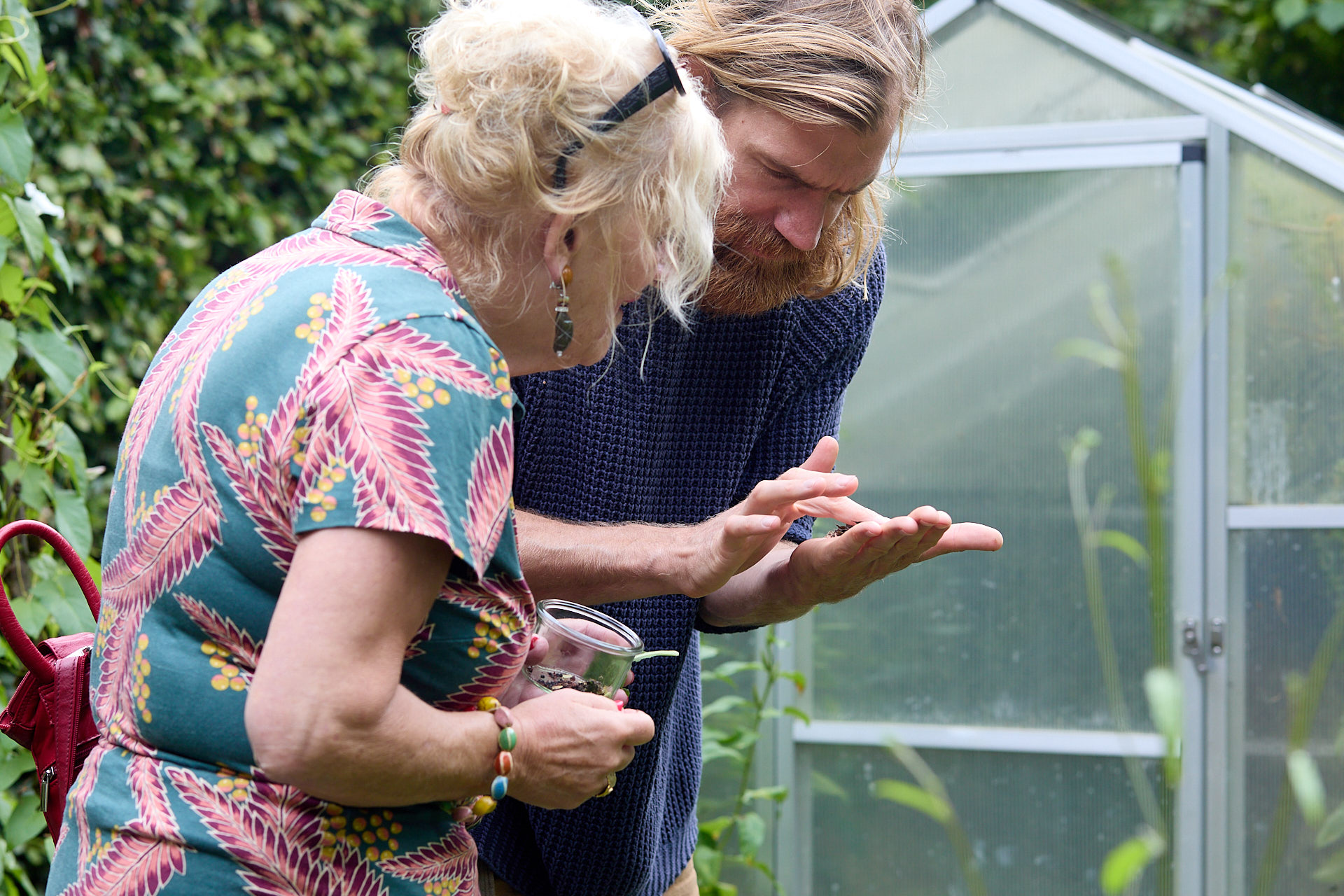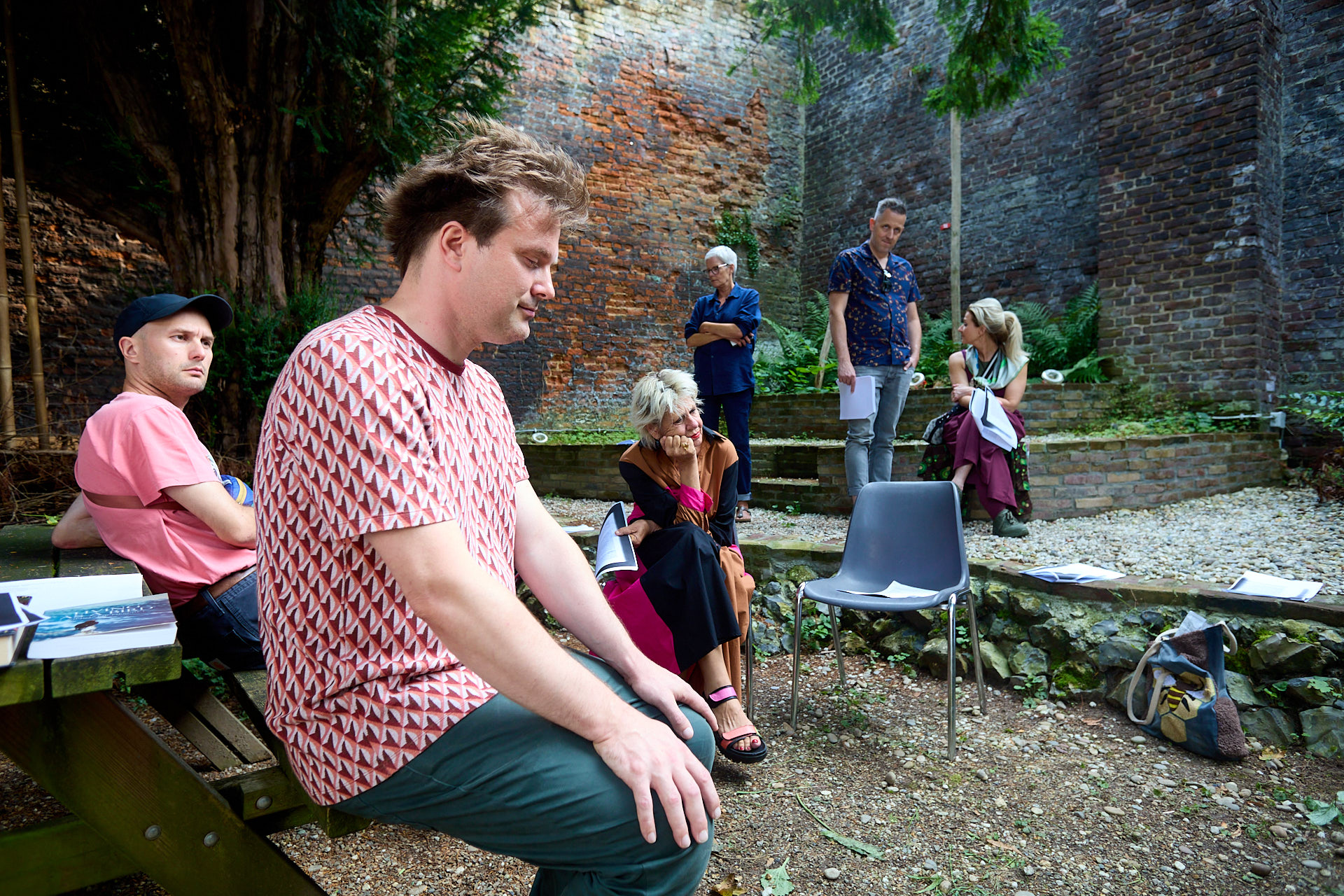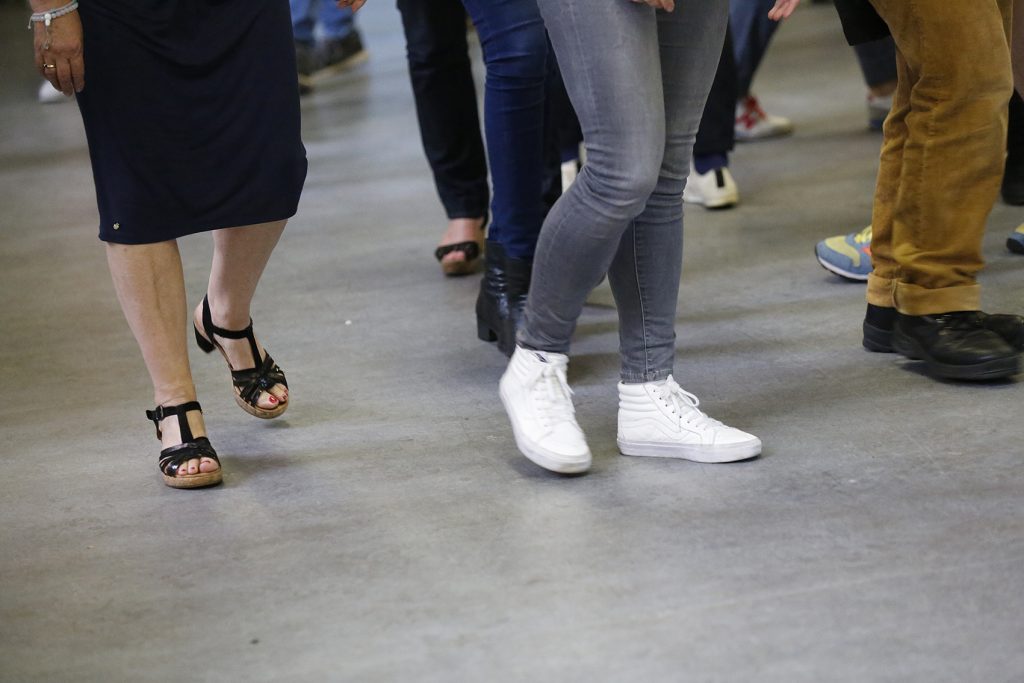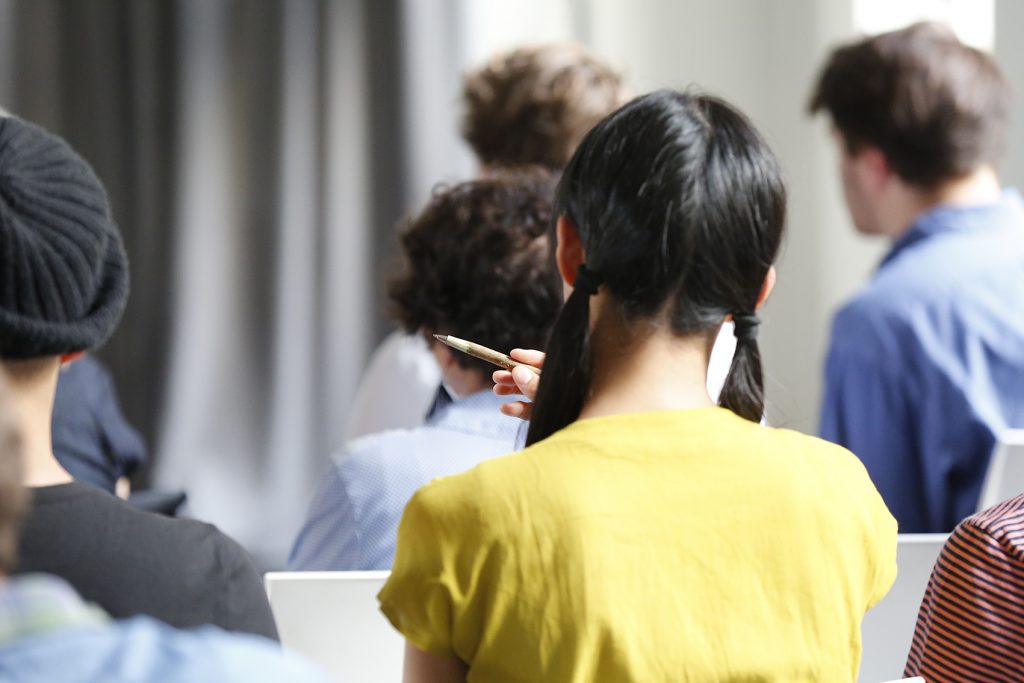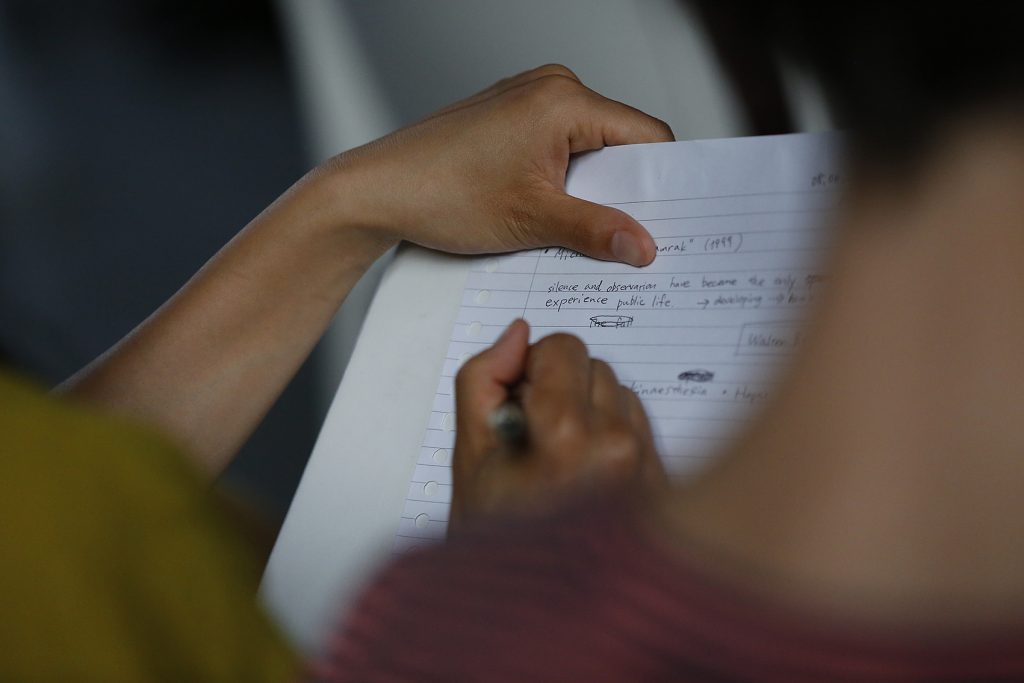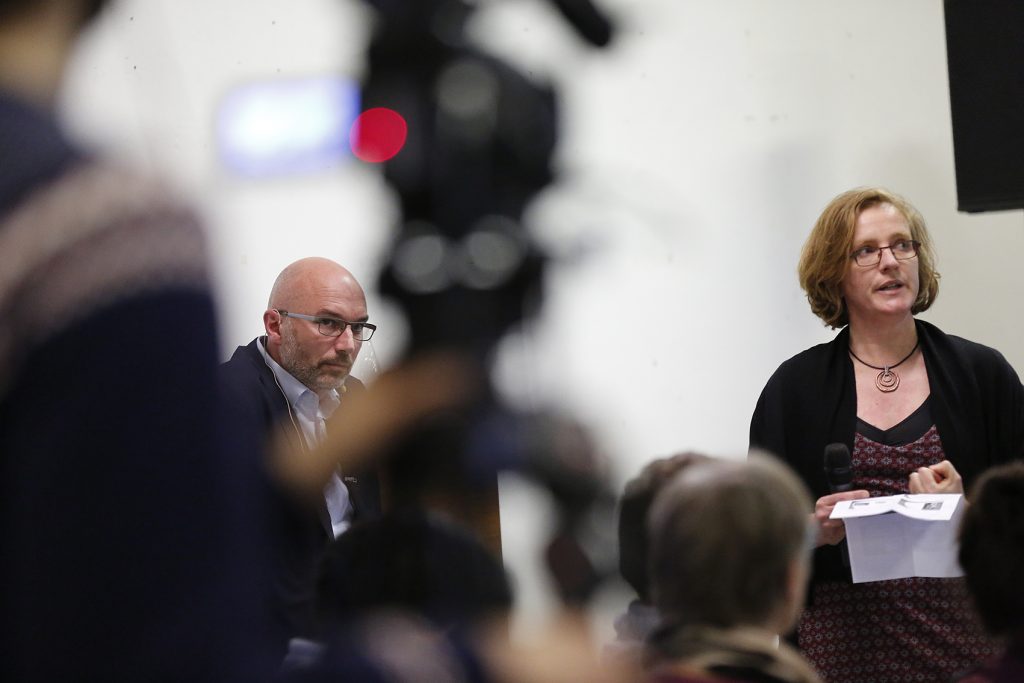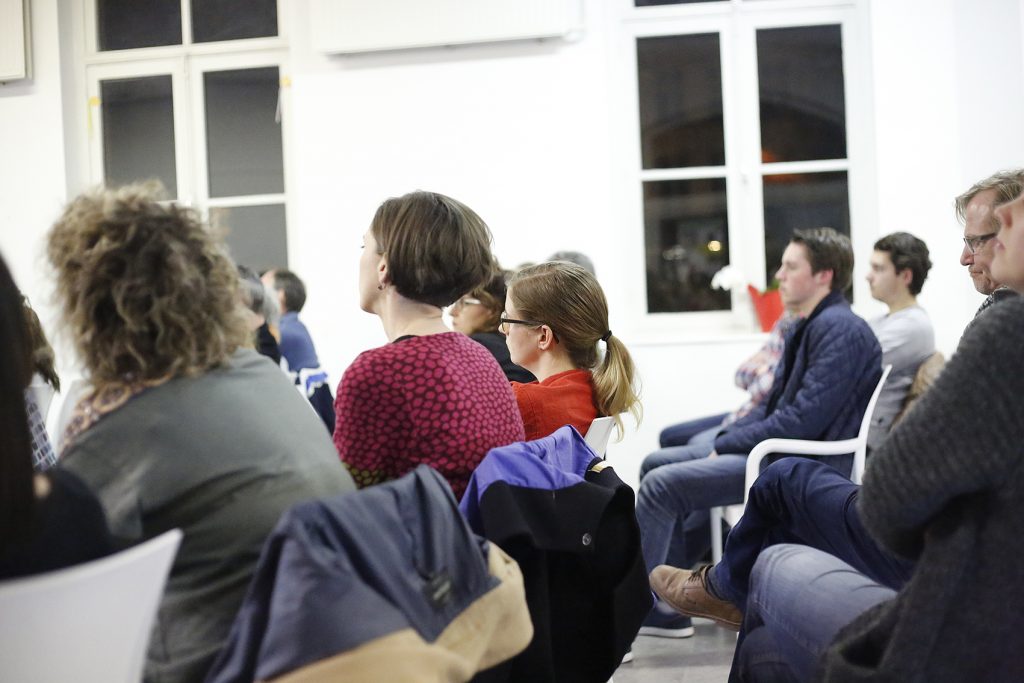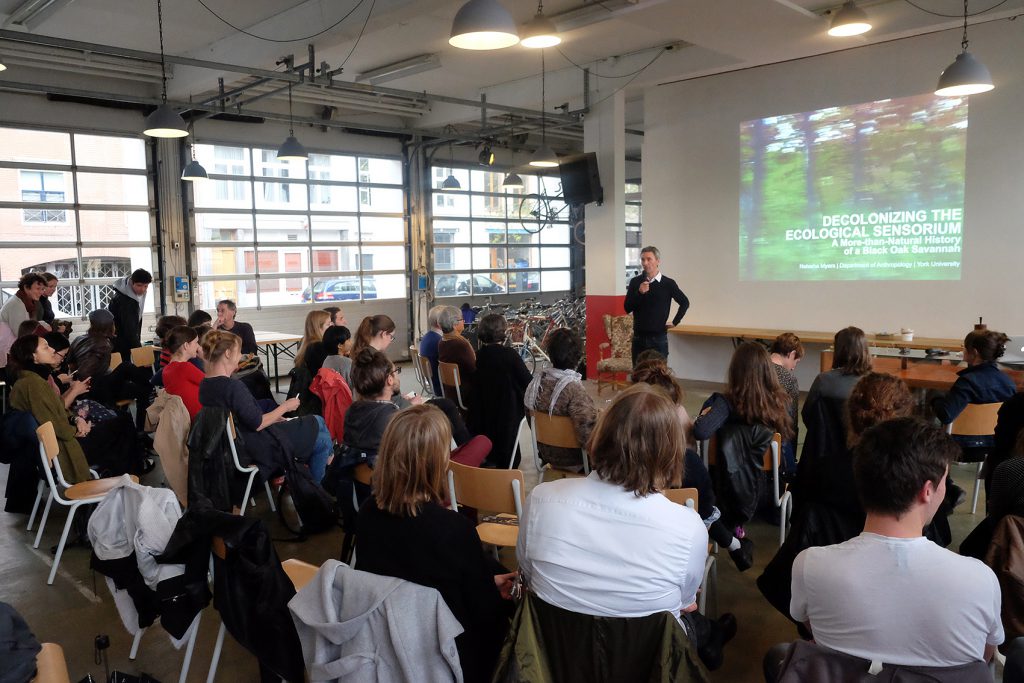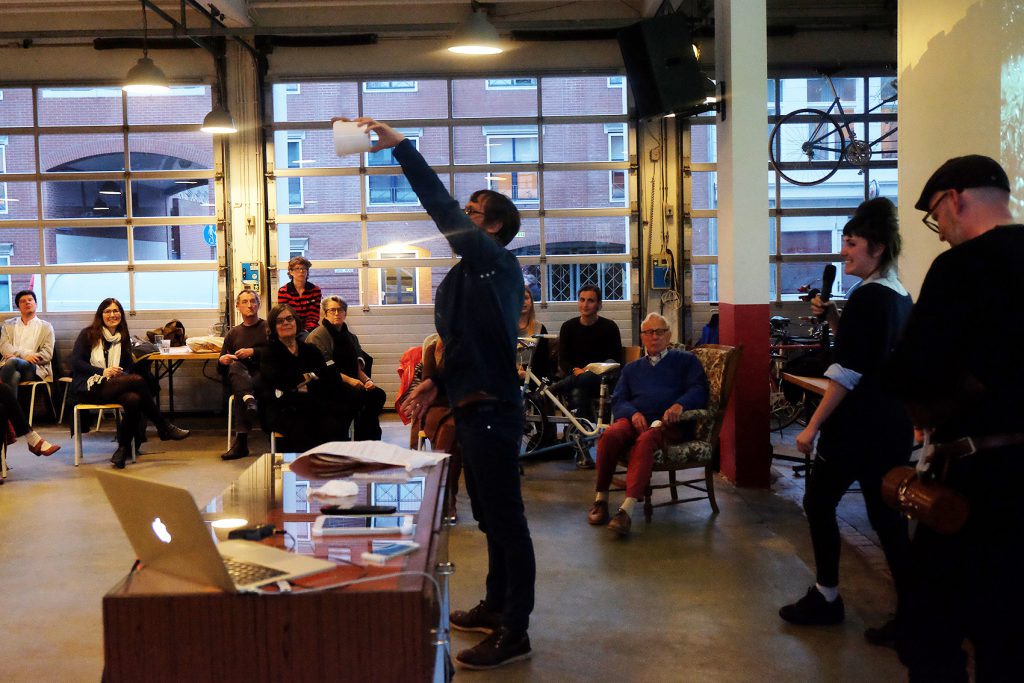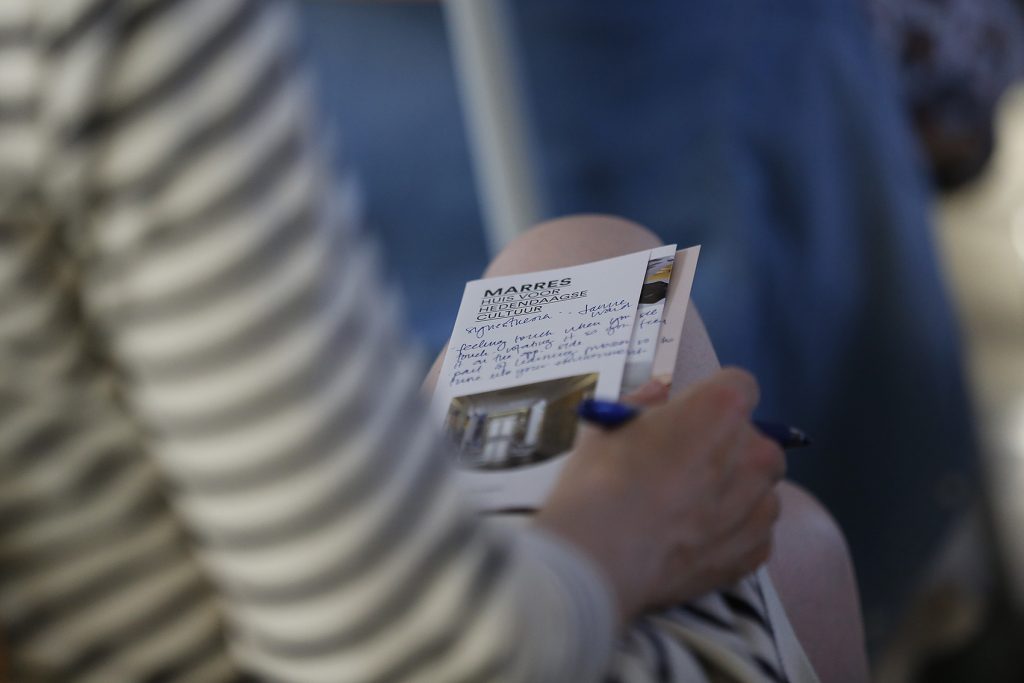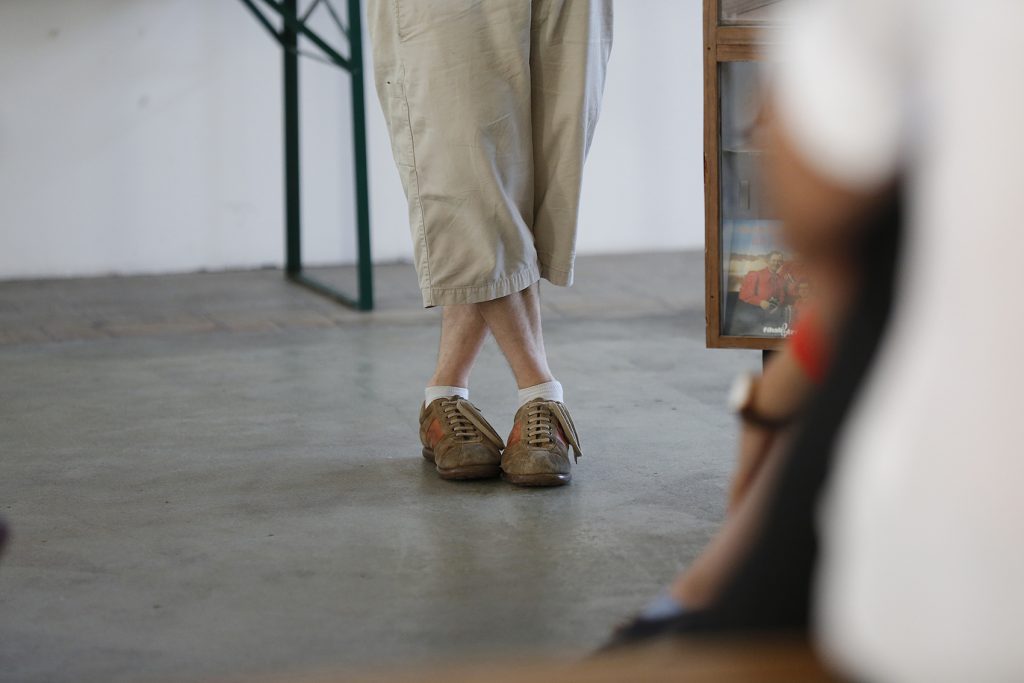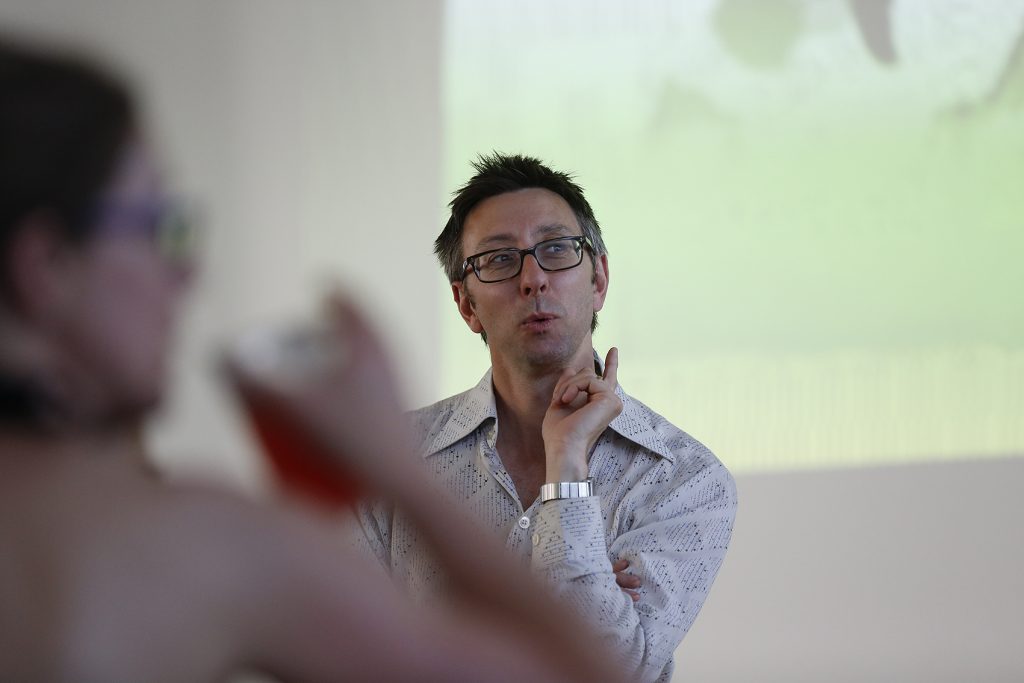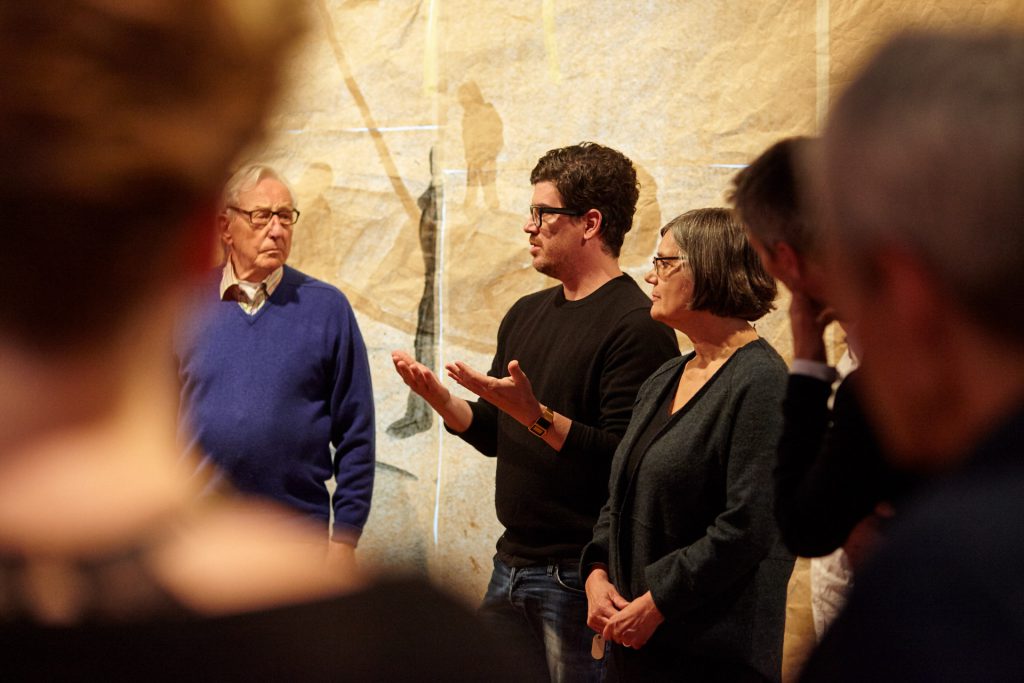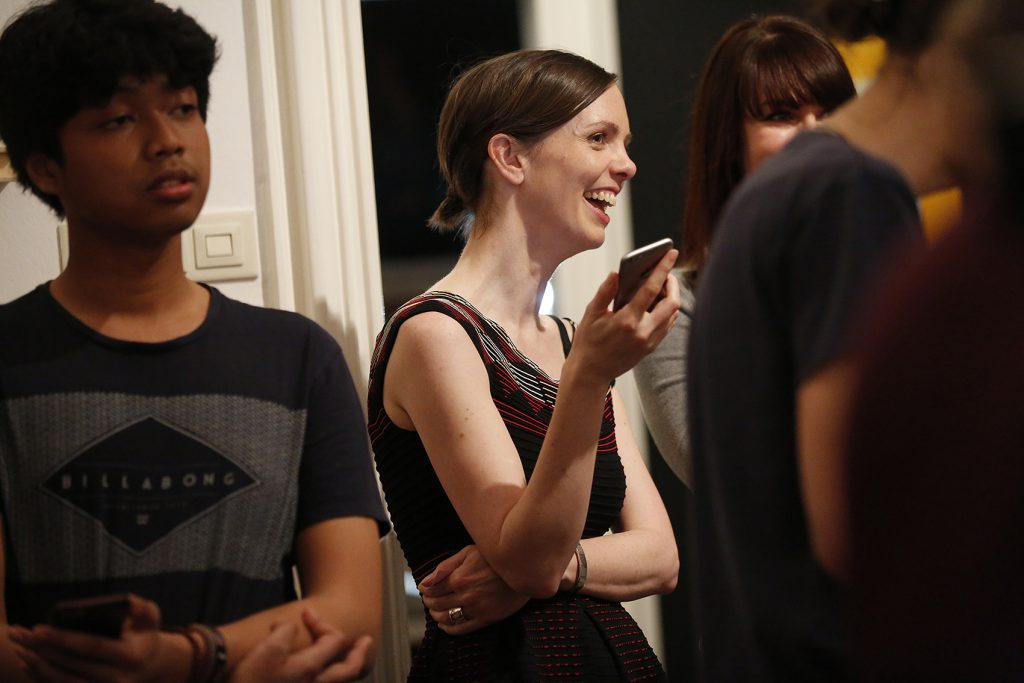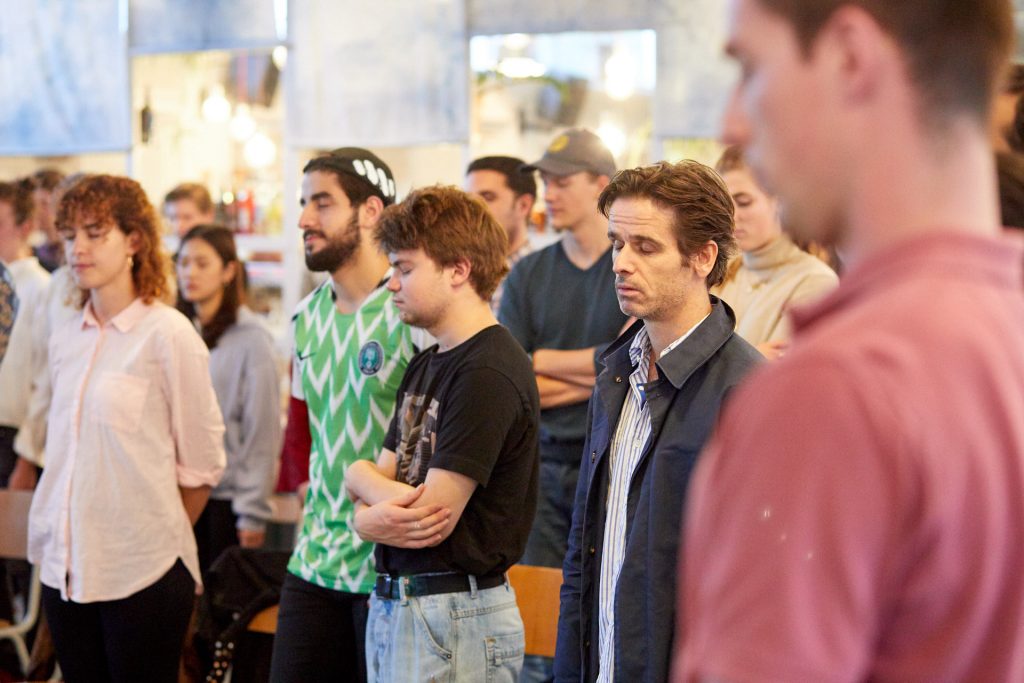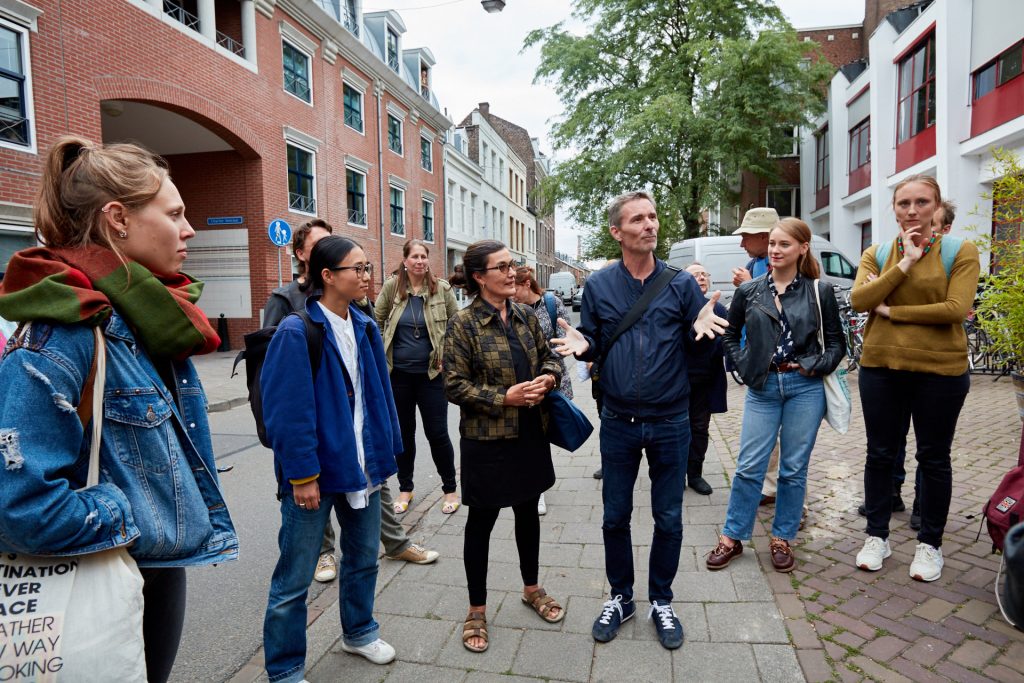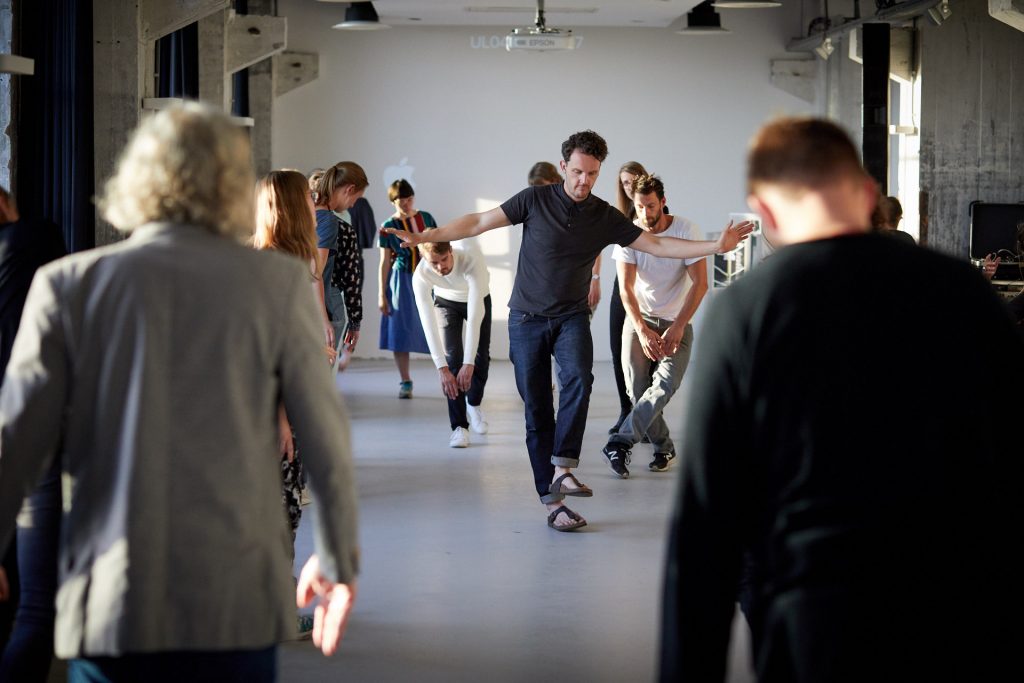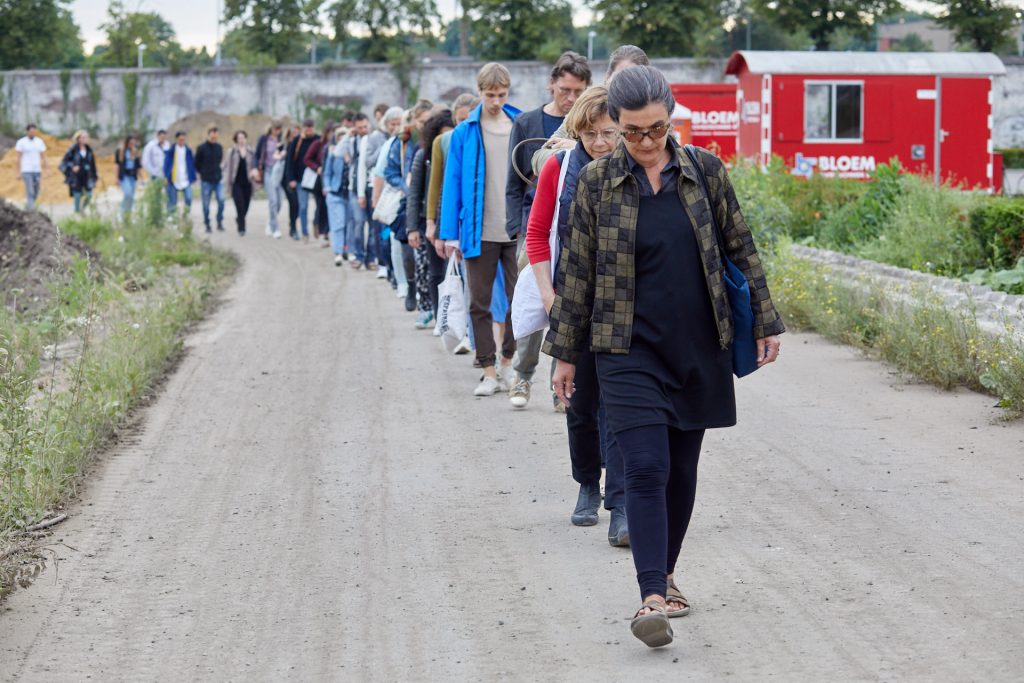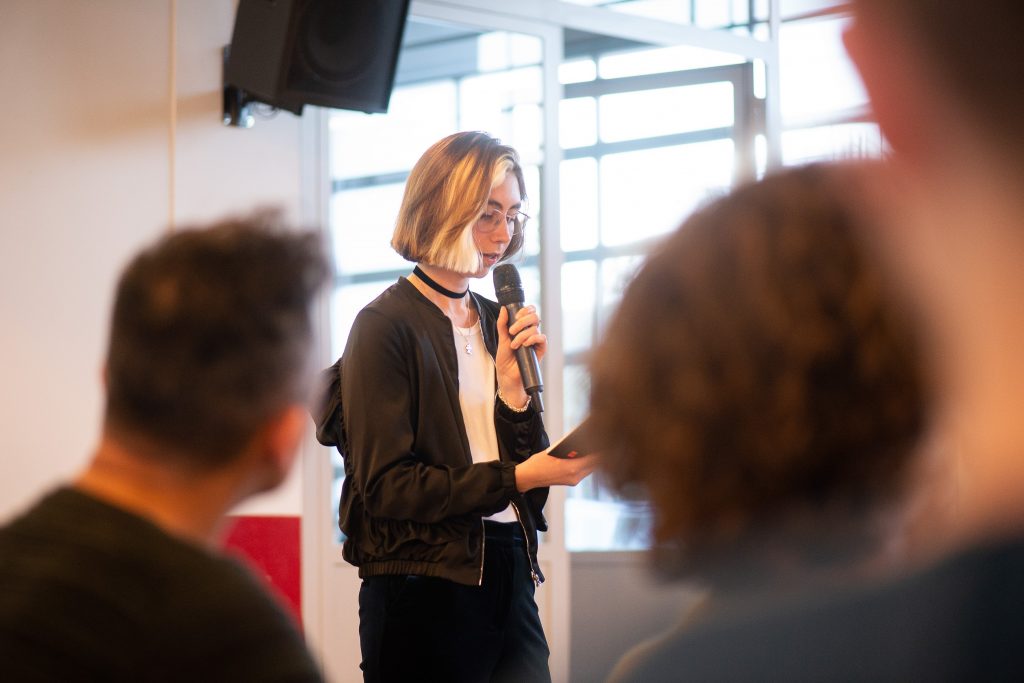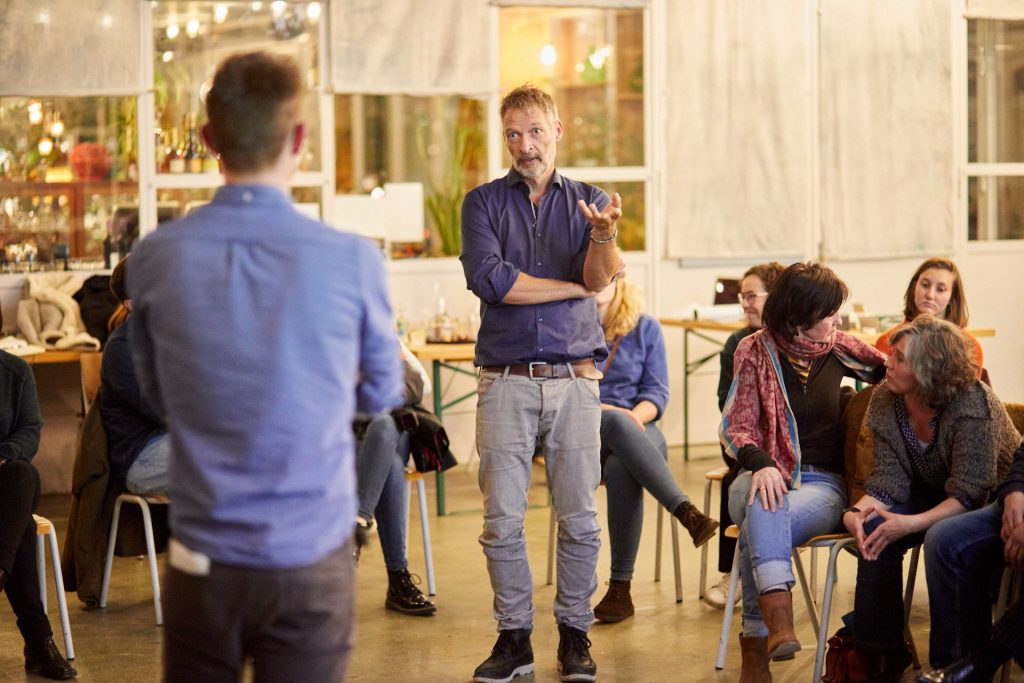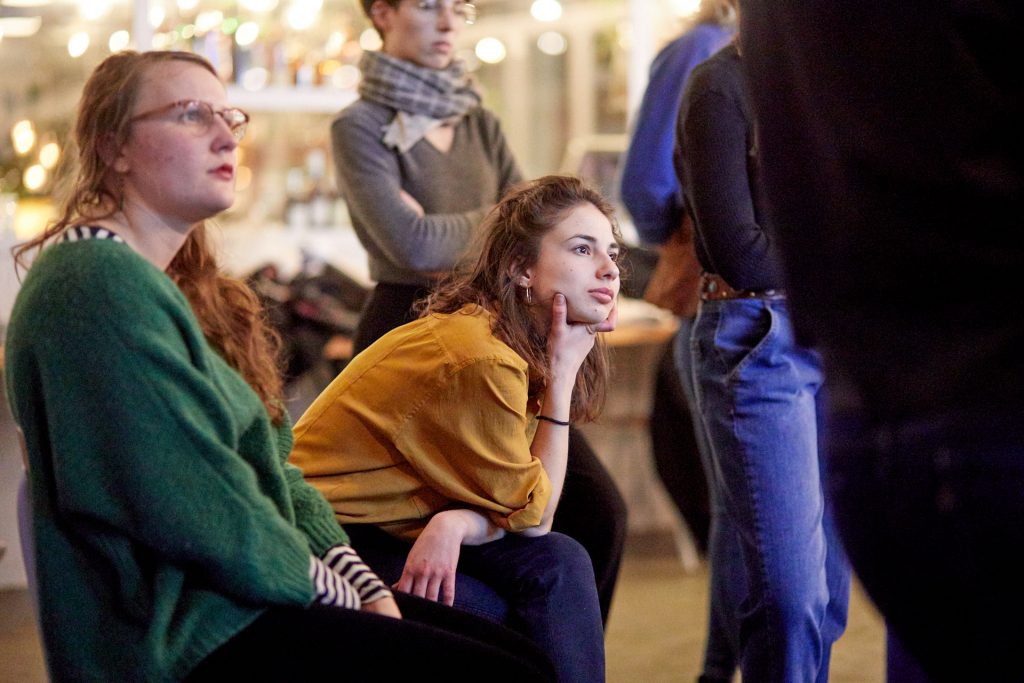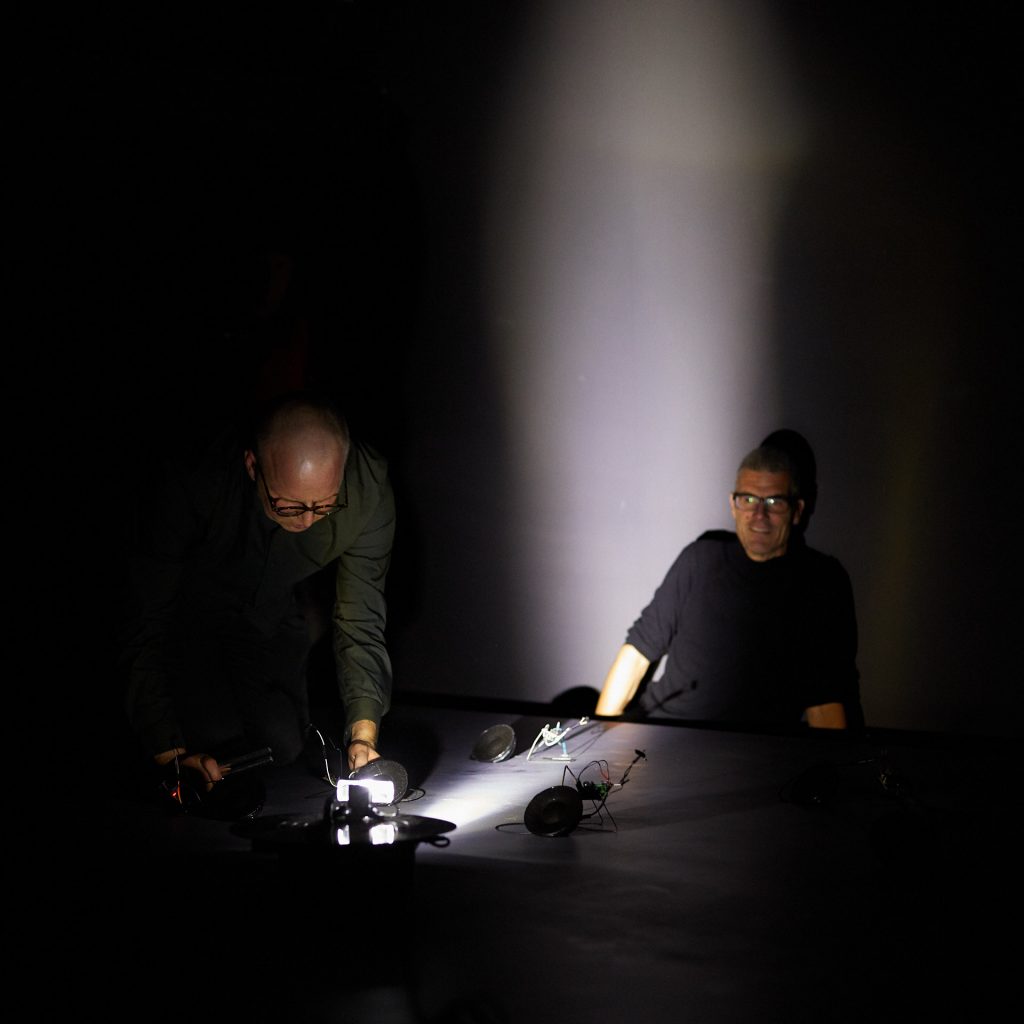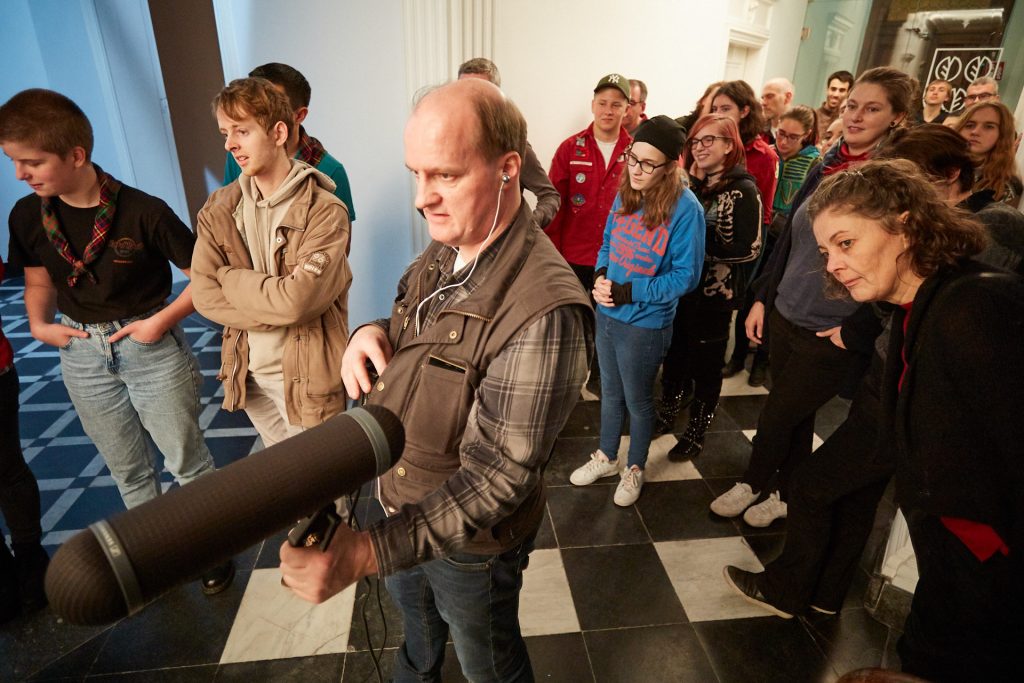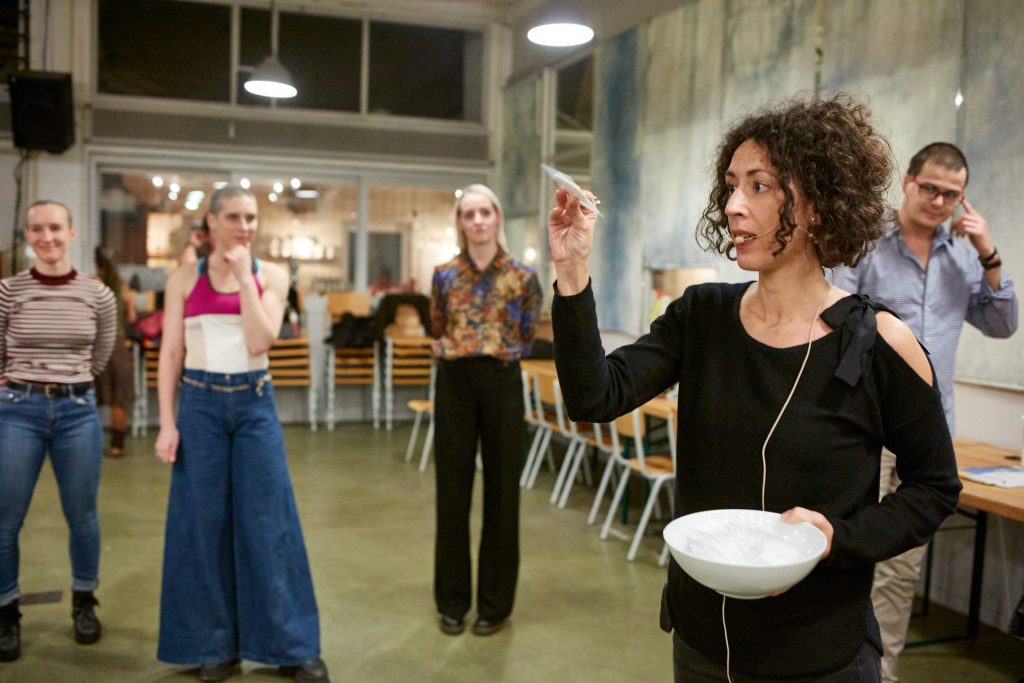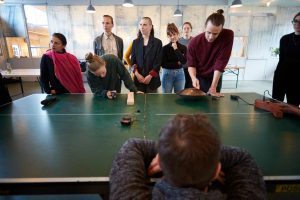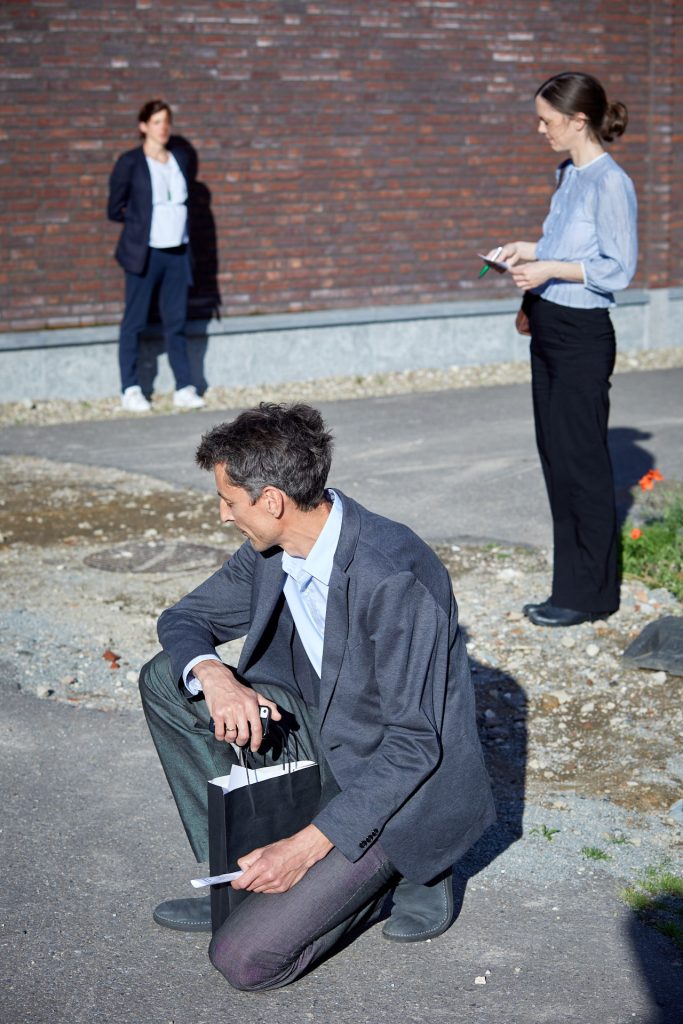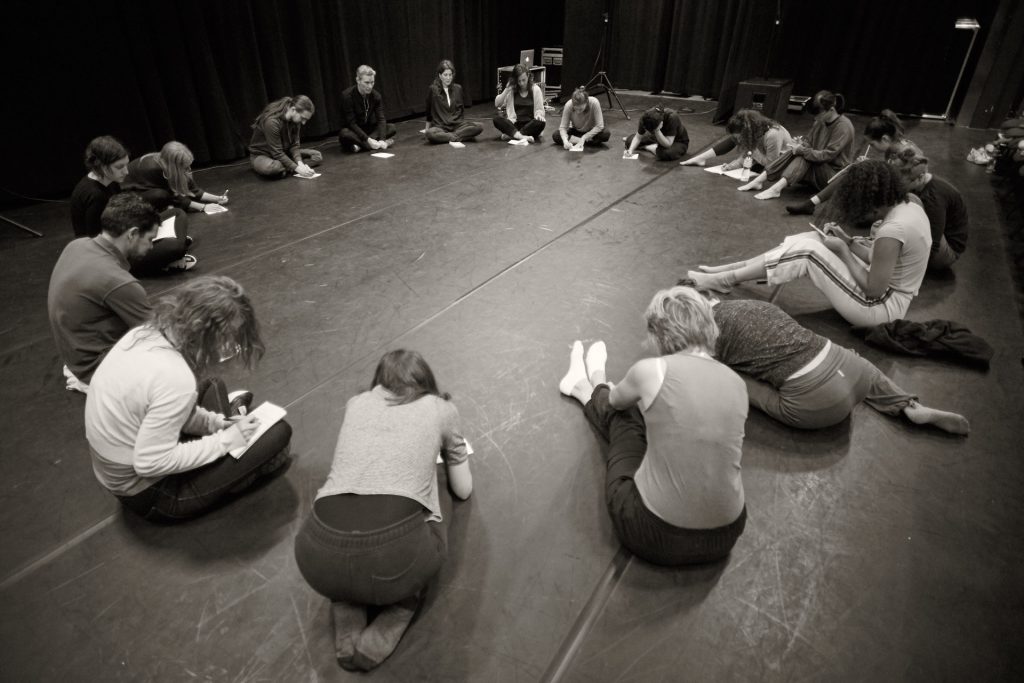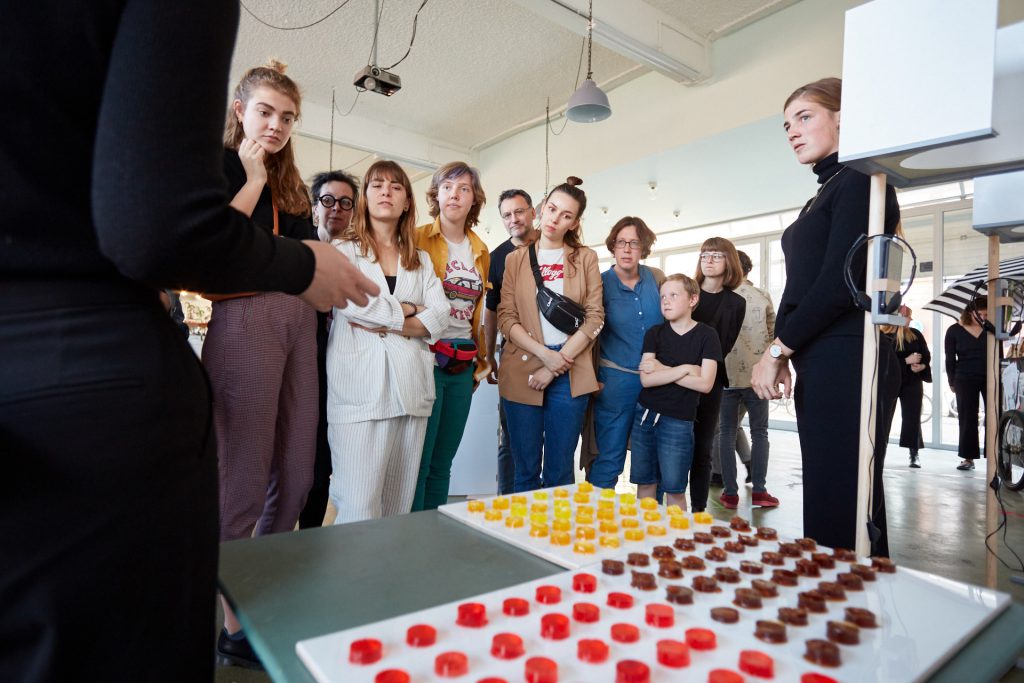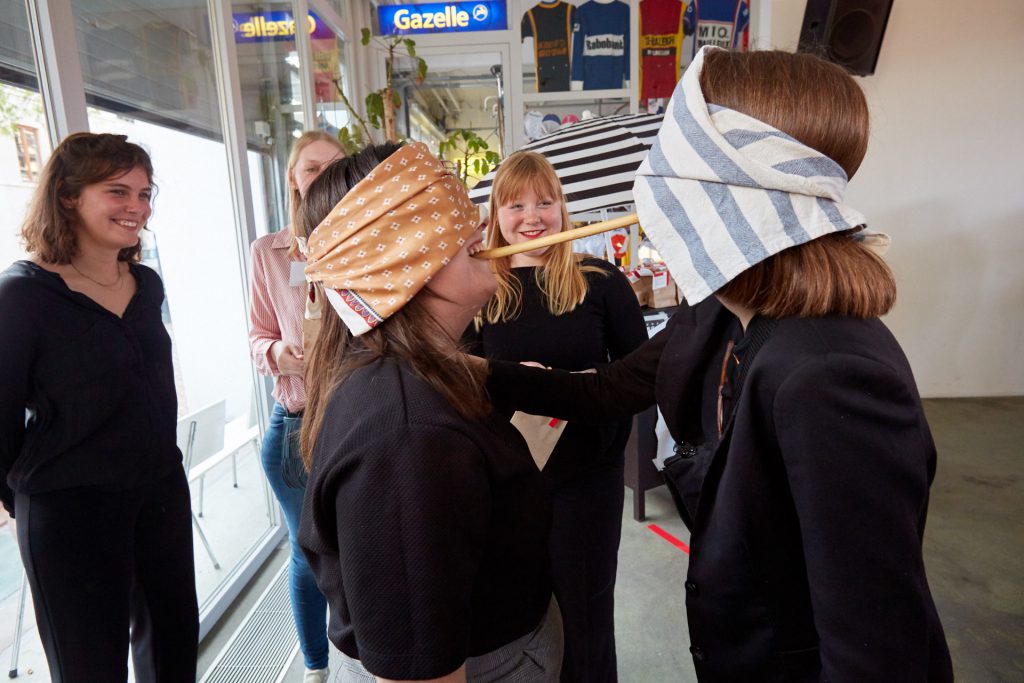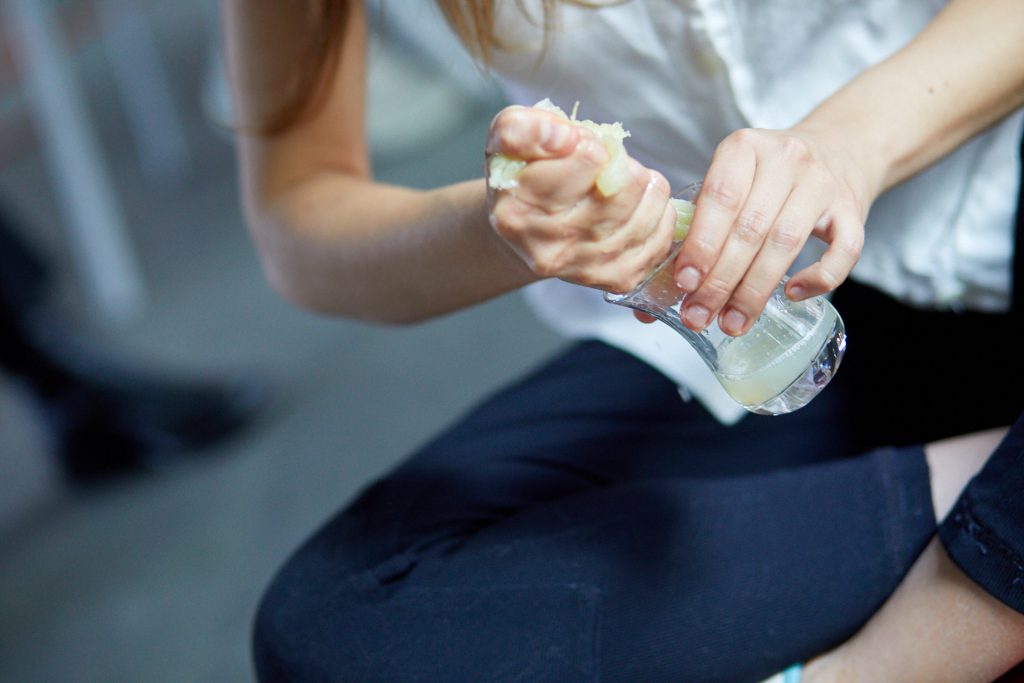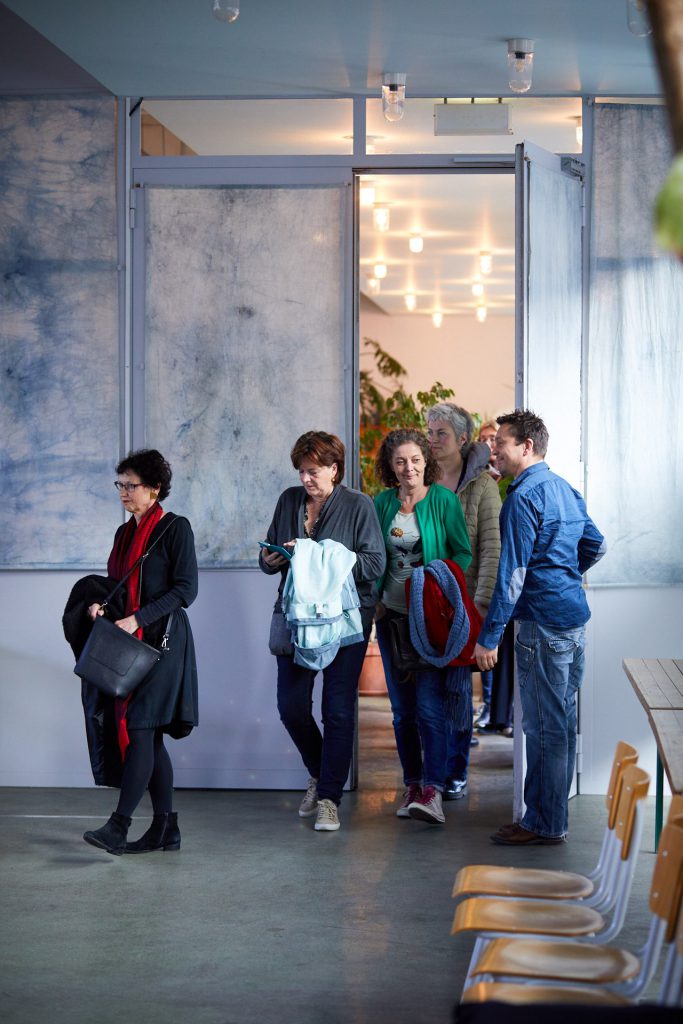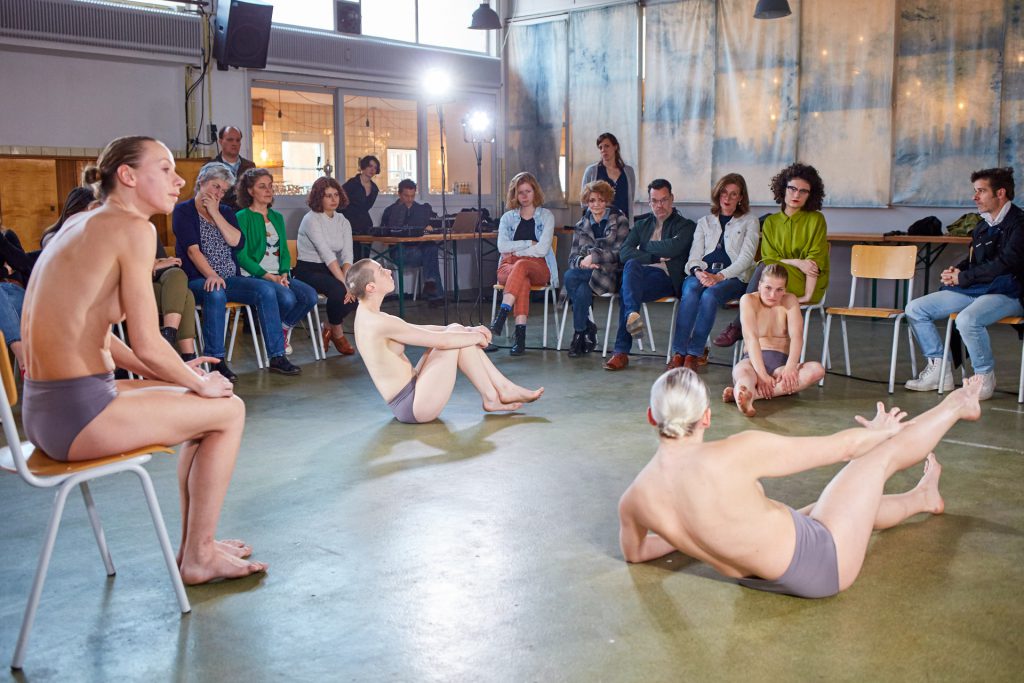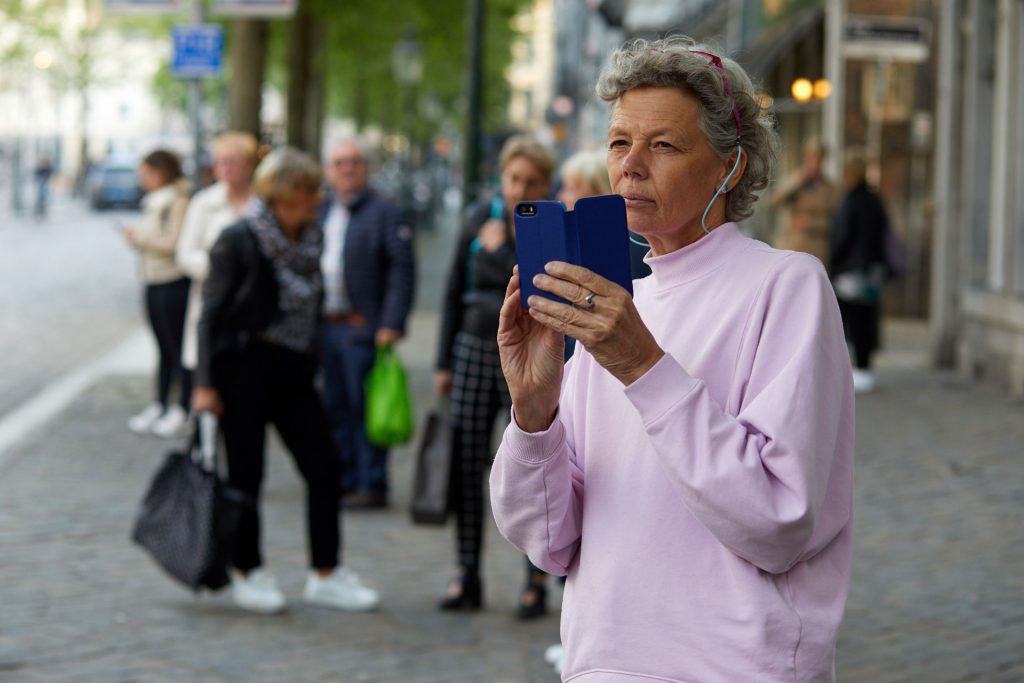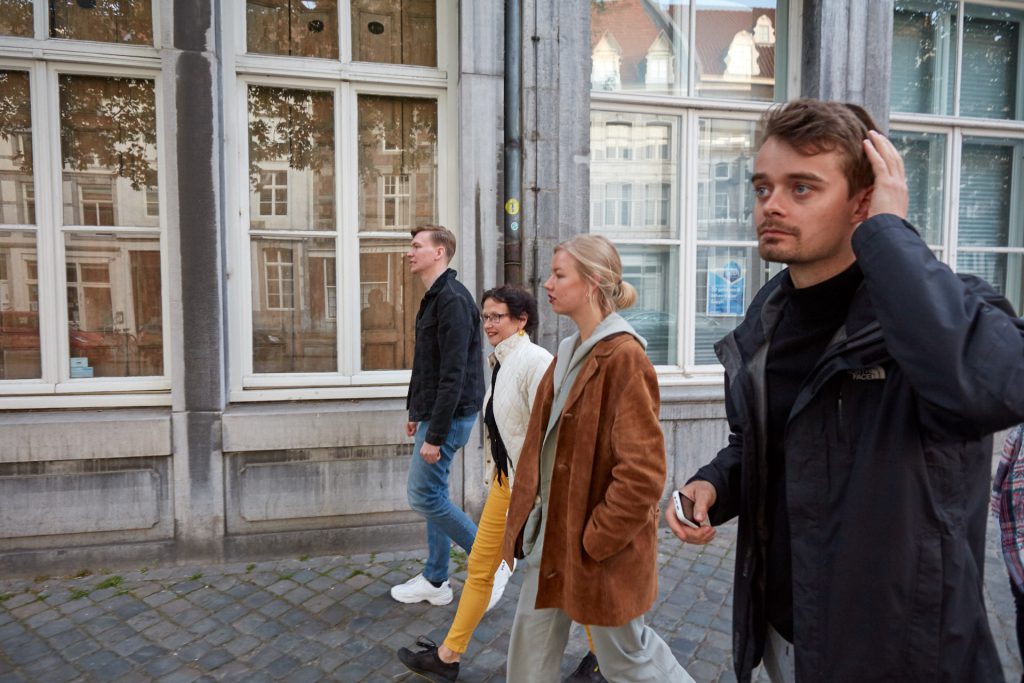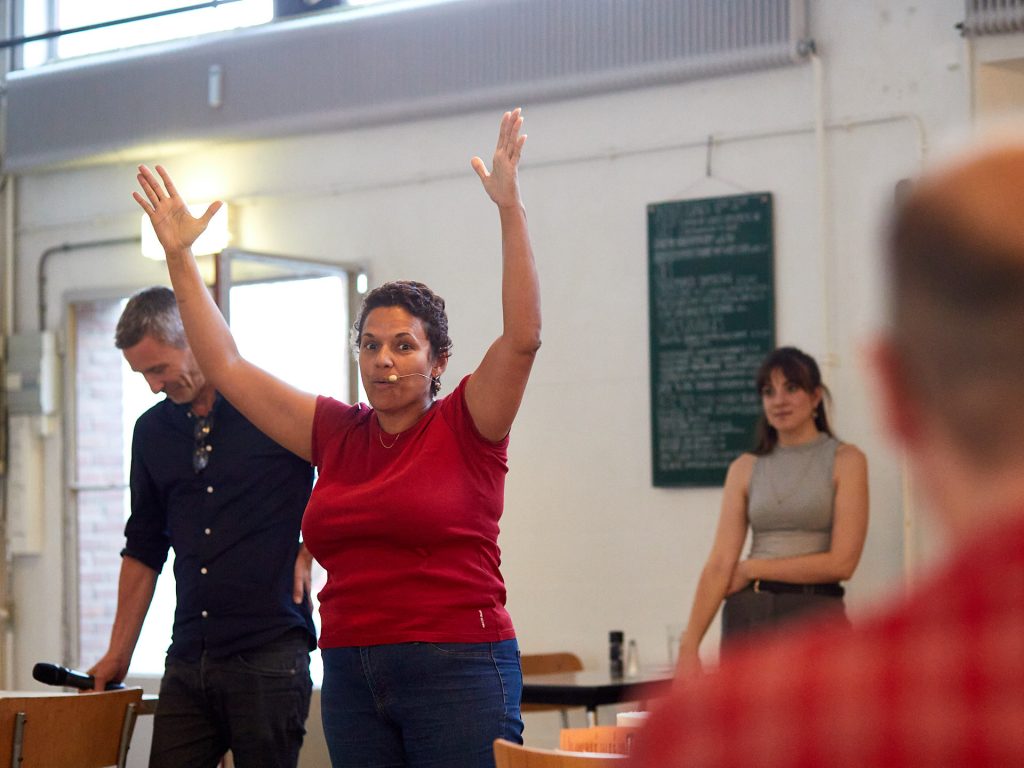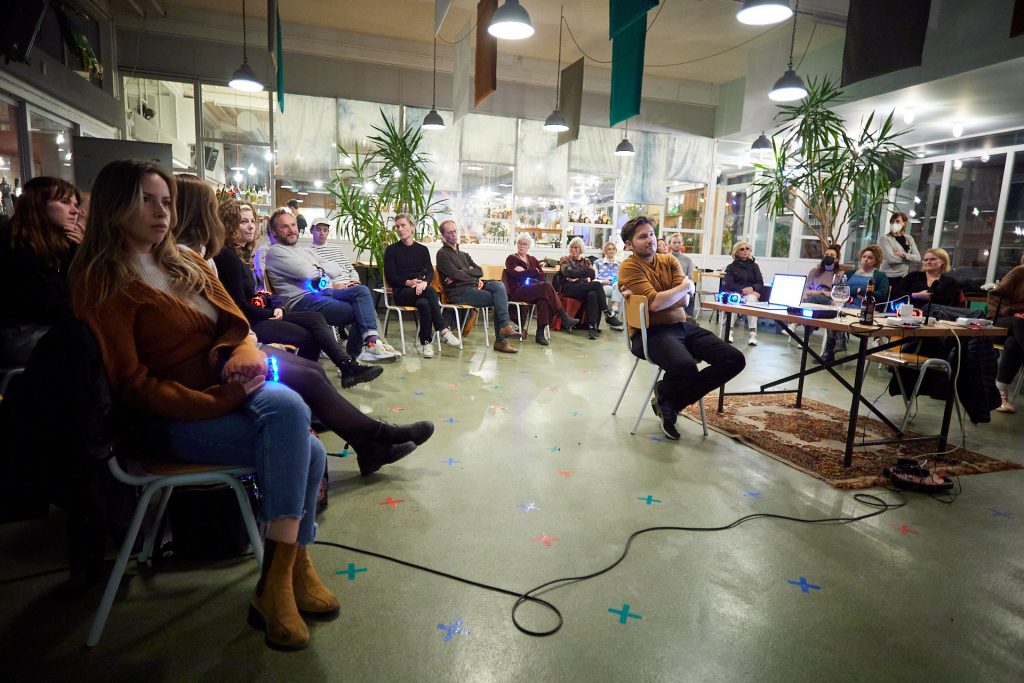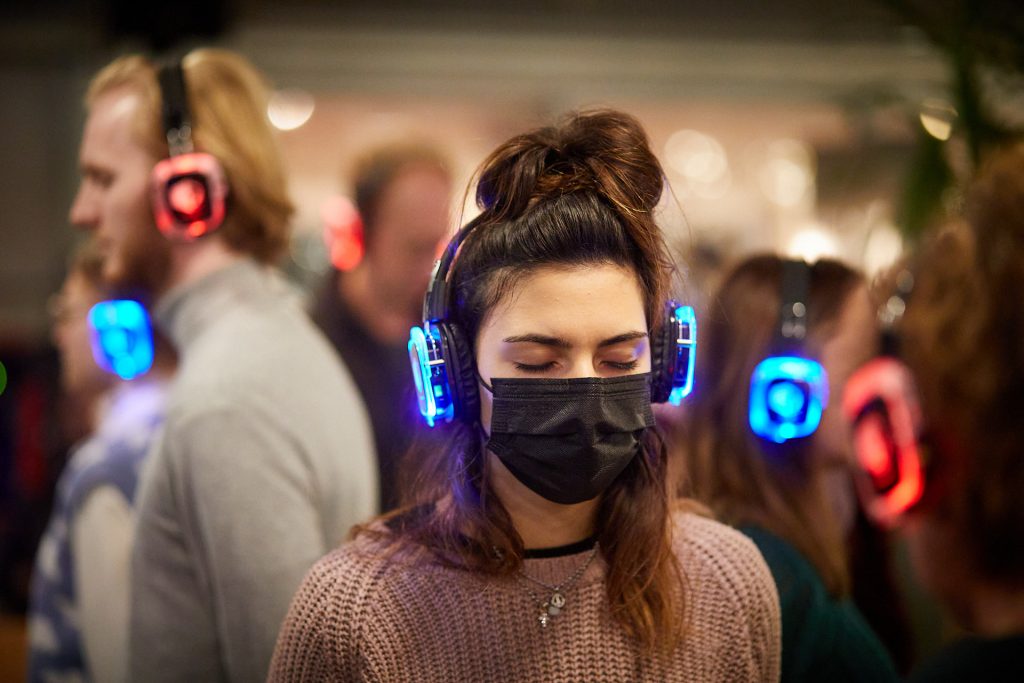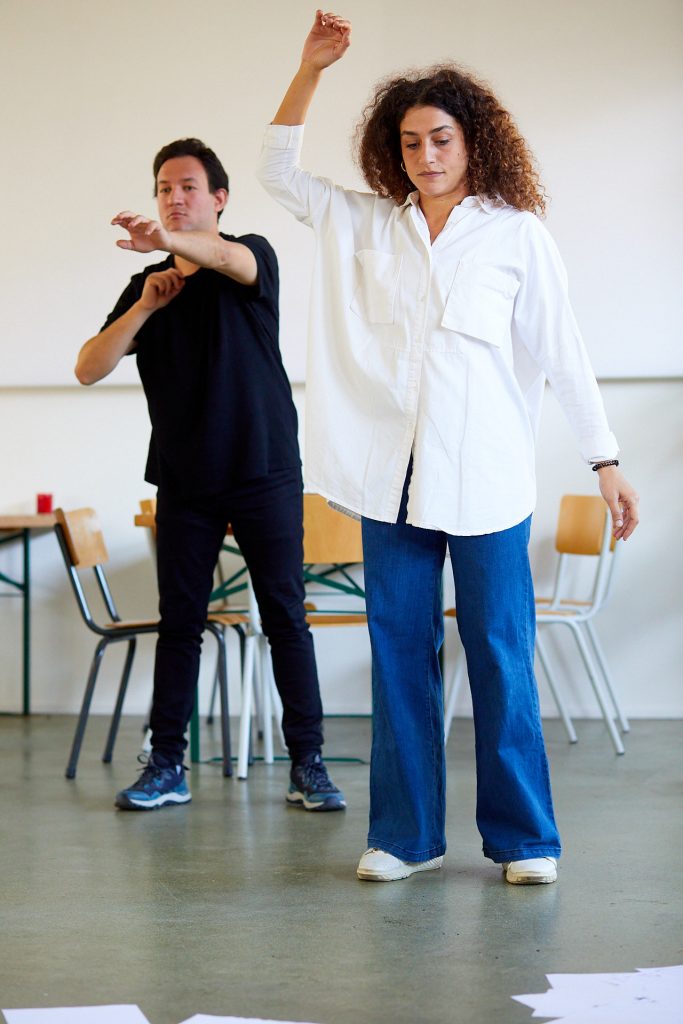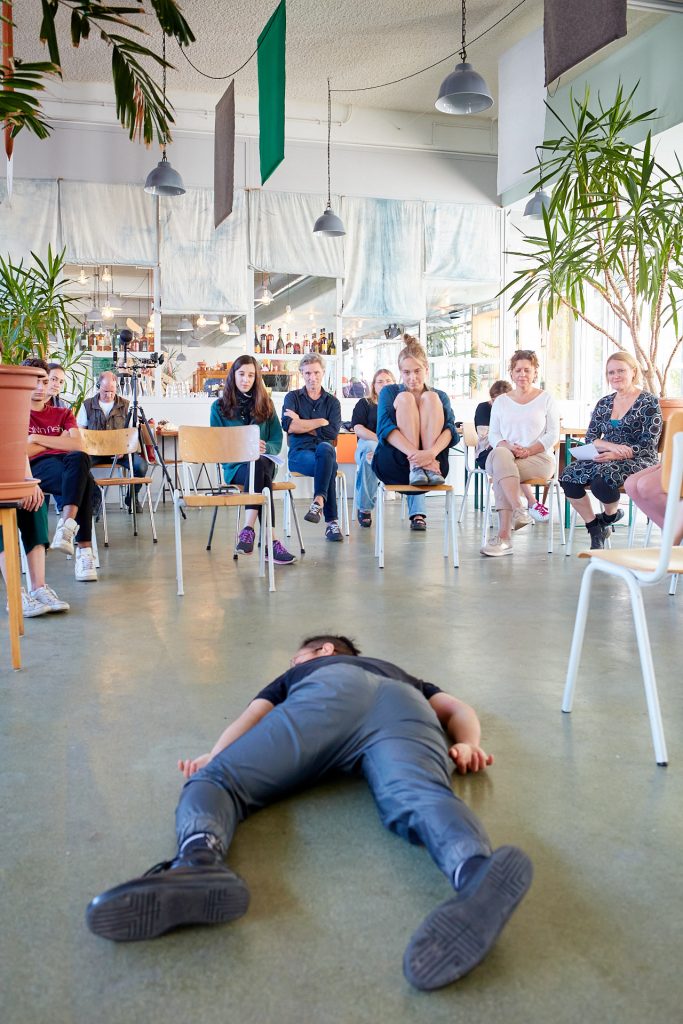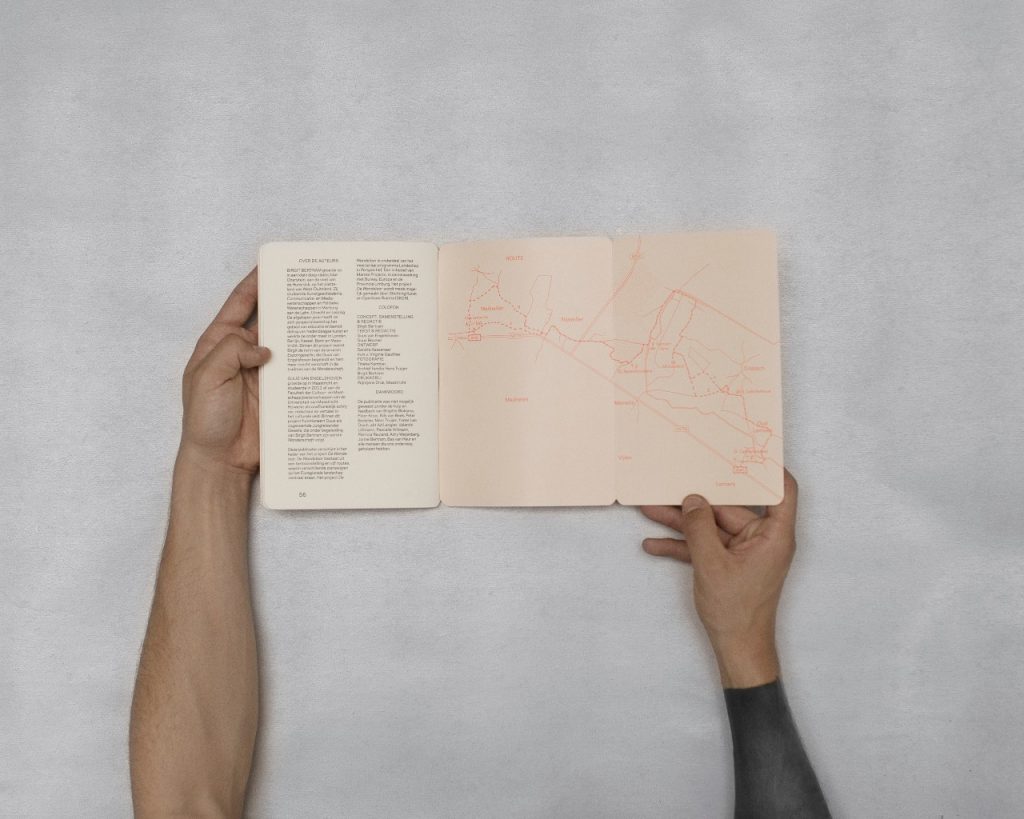Categories: Workshop
Extended: Collectivity

Are you up for something different on Saturdays? EXTENDED, the youth collective of Marres and the Jan van Eyck Academie, is kicking off a new edition on October 25 — and you can join in!
Together with other young people, you’ll get to work directly with artists, dive into their creative worlds, and discover what really goes on behind the scenes of a cultural institution. Each week you’ll explore themes like migration, diaspora, and community (linked to the exhibition Porous Grounds, Sacred Codes at Marres), while trying out workshops, visiting exhibitions, and building towards your very own project that will be shown during Museumnacht 2026.
Oh, and yes — you’ll also earn some money while doing it. Every Saturday from 12:00 to 14:00, you’ll be part of a group that’s curious, creative, and ready to experiment.
Sound like your thing? Sign up before 20 October 2025 — we’d love to have you on board!
Kinderdag Festival Celebrate YOU!
SOLD OUT!
The Children’s Day Festival is OSCAM’s annual kids’ celebration, all about creativity and self-expression. This year, three locations are participating: Marres in Maastricht, HipHopHuis in Rotterdam, and OSCAM in Amsterdam.
During the festival, children have the freedom to follow their own creative path. They can take part in a wide range of workshops and activities, such as a hip-hop dance workshop by Oxygen, storytime with books from Centre Céramique, crocheting with Maasstitch, crafts, building forts, comic drawing, a poetry workshop, and of course, tasty snacks and drinks!
The Children’s Day Festival is also co-organized by the Children’s Museum directors, who, together with a youth coach, help design and run parts of the program. This gives children a unique opportunity to get involved in the museum world, take the lead, and have a special experience shaping an art festival.
Date:
Sunday 7 December 2025
Time:
12:00—16:00
Location:
Marres
Capucijnenstraat 98, Maastricht
Free entrance
Children’s Day is specially for kids. Parents are welcome, but unfortunately cannot take part in the workshops. Fewer adults = more space and more fun for the kids!
Partners / Thanks:
Partners: OSCAM, Amsterdam and HipHopHuis, Rotterdam

Thanks you to Centre Céramique, Maasstitch, Oxygen Academy of Dance, Lee Janssen, Lola Coenders
Marres & OSCAM are looking for Children’s Museum Directors
Would you like to be a Children’s Museum Director?
Are you between 9 and 14 years old and bursting with creative ideas? Do you want to share your thoughts, take action, and make a difference in the world of art and culture?
For the Kinderdag Festival on December 7, 2025, Marres is looking for Children’s Museum Directors! As a young director, you’ll be an important part of our team. Together with other kids, you’ll take part in an inspiring program full of art, culture, creativity — and responsibility. For five Wednesday afternoons in a row, we’ll meet for an hour or so to prepare the Kinderdag Festival Celebrate YOU! Marres organizes this program together with OSCAM.
What will you do?
- Contribute ideas for Marres’ education program
- Work with other young directors on new ideas
- Help organize the Kinderdag Festival: Celebrate YOU!
- Take part in creative and inspiring workshops
- Share your voice about what matters to you in art and culture
You can sign up until October 25, 2025.
Questions? Send an email to educatie@marres.org!
Bewegingsworkshop Amparo González Sola

On Friday, 26 September, from 6—7PM, Amparo González Sola offers an insight into the research Gestures as Portals.
Through simple movement exercises and the activation of the senses, we will explore how gestures can open doors to new ways of perceiving and experiencing.
Participation is easy and accessible: no prior experience in dance or performance is required.
Admission is free between 5–8PM and everyone is welcome!
In the film room, the film Holding Gestures will be shown continuously — where gestures and movement once again take center stage, this time on the screen.
Fall Program: free entrance on Friday Nights
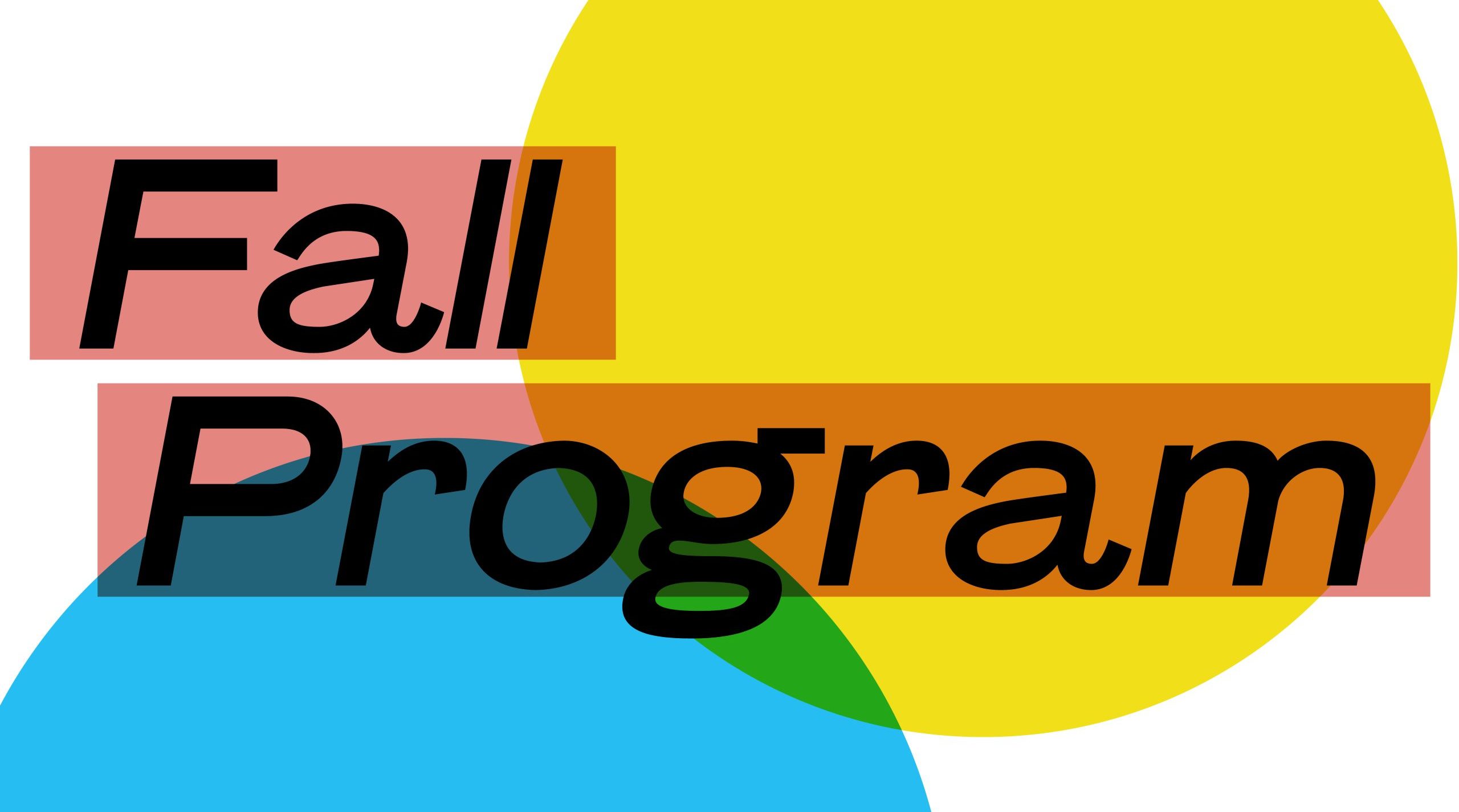
This fall, Marres is open ONLY on Fridays with a special program and free admission. Bring your friends, family, or date for a cultural start to your night out.
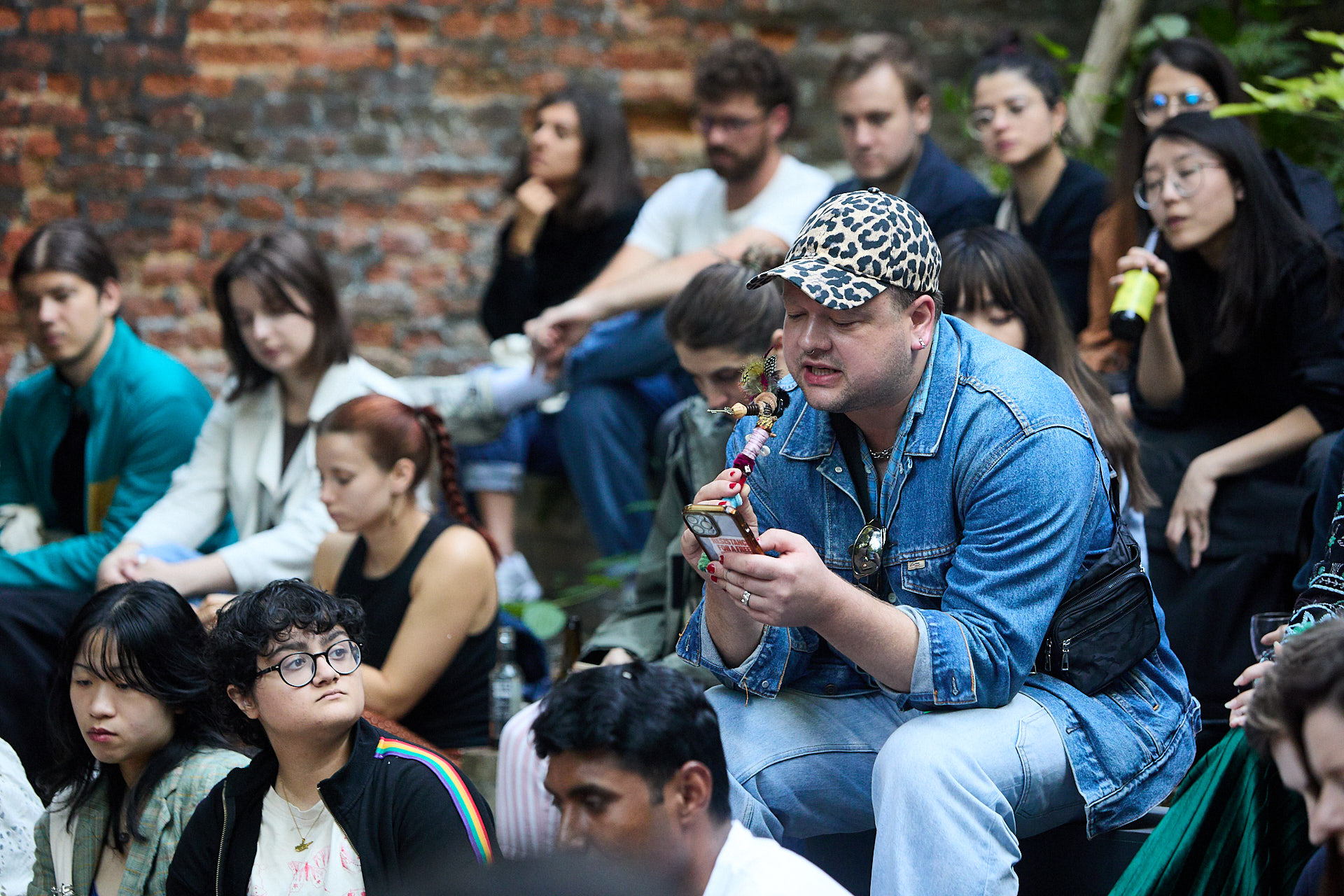
Storytelling Night
Marres x Queer Art Club
10 October 2025
Marres and Queer Art Club are hosting a storytelling evening on Friday evening, 10 October 2025.
We invite you to gather around a campfire in Marres’ intimate city garden and listen to stories with “queer” as the theme.
With:
Marc Boas
Pia Breuer
Brunei Deneumostier
Frida Roper
Date:
Friday evening, 10 October 2025
Time:
inloop vanaf 18:00
storytelling: 18:30—20:30
Location:
Marres garden
Capucijnenstraat 98, Maastricht
Free admission
Please reserve a spot via reserveringen@marres.org. There’s a maximum of 50 visitors. The event is in English.
Beginner’s Crochet workshop by Maasstitch
17 October 2025
This workshop is fully booked!
In October, Maasstitch will host a beginner’s crochet workshop at Marres. Maasstitch is a Maastricht-based craft club focused on crochet and knitting, centered around coming together, creating, sharing, and relaxing with like-minded makers. The group meets regularly to crochet, chat, and inspire one another—whether you’re a total beginner or a seasoned pro. Open to all ages!
Date:
Friday evening, 17 October 2025
Time:
5PM
Location:
Marres
Capucijnenstraat 98, Maastricht


Performance: Terms & Conditions van Ingrid Berger Myhre
31 October 2025
Spoken language is always accompanied by gestures. We emphasize our words or soften them, we extend their meaning or brush it off. The silent contract between language and movement is the subject of the engaging performance titled Terms & Conditions by Ingrid Berger Myhre.
Etymology is the part of linguistics that deals with where words come from. It looks at the connections between concepts and meanings, and how these have changed over time depending on context and use. Etymology can be seen as a kind of map of the movement and relationships of words, both formally and semantically. We use this as a framework to think about how language moves choreographically. Using game structures and choreographic assignments we will explore the literal and metaphorical, embodied cognition, associative trains of thought, related meaning, formal shifts and puns.
Behind the scenes tour with Leopold Emmen
Free entrance
In November, Marres will host the recordings for The House Where We Used To Live by filmmaker Nanouk Leopold and visual artist Daan Emmen (Leopold Emmen). Their installations explore the boundary between film and space: not a conventional screen, but an experience that physically surrounds you.
Part 1: 7 November 2025
On Friday, 7 November, Nanouk Leopold and Daan Emmen will give you a sneak peek behind the scenes of their film project at Marres, just before filming kicks off the following week. As a visitor, you will take part in the first test takes!
Part 2: 14 November 2025
Then, on Friday, 14 November, once the cameras have stopped rolling, you can explore the set yourself while they share the stories and insights from the shoot.
Leopold Emmen explore the different characteristics of a house and its inhabitants, and how external forces can put people’s lives under pressure. The film tells the story of two women living together in a house, until one day a large group of strangers enters and decides to live there as well. The work will be on view at Marres in 2027.
Date:
Part 1: Friday evening 7 November 2025
Part 2: Friday evening 14 November 2025
Time:
doors open 5:30PM
start 6PM
Marres closes at 8PM
Location:
Marres, Maastricht
Free admission, but capacity is limited. Email reserveringen@marres.org to reserve a spot. Please mention your preferred date.
NEWS
Nanouk Leopold’s latest film, Whitetail, recently premiered at the Toronto International Film Festival.



Beginner’s Sashiko workshop by Textile Textiel
21 November 2025
This workshop is fully booked!
This workshop is a hands-on class where participants learn the traditional Japanese stitching technique called Sashiko, which means “little stabs” in Japanese. Historically used to mend, patch, or strengthen worn clothing—especially workwear. Over time, it evolved into a beautiful form of textile art known for its white geometric patterns stitched onto indigo fabric.
The workshop will be led by Becky Doonan, a freelance textile conservator and seamstress with a strong background in textile crafts and dressmaking. Her work covers a broad spectrum, from creating made-to-measure garments and conserving antique textiles, to teaching textile craft workshops and giving sewing lessons. She has a longstanding fascination with traditional textile craft techniques, which she explores through activities such as embroidery, weaving, and other handicrafts.
Bring your own jeans!
Date:
Friday evening, 21 November 2025
Time:
5—7:30PM
Location:
Marres, Maastricht
Pinch Pot Workshop by Farbod Ceramics
28 November 2025
This workshop is fully booked!
Create your own pinch pot during a workshop led by Farbod Nael.
Farbod Nael is a ceramic artist and designer based in Maastricht. Rooted in the slow, tactile rhythm of working with clay, Farbod combines ancient techniques with contemporary storytelling. Through hand-building, slip casting, and wheel-throwing, they explore themes of diaspora, identity, and collective memory—shaping vessels not just as functional objects, but as carriers of emotion, culture, and care.
Through their project Farbod Ceramics, they create small-batch collections and lead community-based workshops that center healing, heritage, and queer joy.
Your pot will need about 2.5 weeks to dry—pick it up before the holidays and gift someone a unique, handmade present!
Date:
Friday evening 28 November 2025
Time:
5—7:30PM
Location:
Marres, Maastricht

Movement workshop Amparo González Sola

Friday September 26, from 6 to 7PM, Amparo González Sola offers an insight into the research Gestures as Portals.
Through simple movement exercises and the activation of the senses, we will explore how gestures can open doors to new ways of perceiving and experiencing. Participation is easy and accessible: no prior experience in dance or performance is required.
Admission is free between 5–8PM and everyone is welcome!
In the film room, the film Holding Gestures will be shown continuously — where gestures and movement once again take center stage, this time on the screen.
Beginner’s Crochet workshop by Maasstitch

THIS WORKSHOP IS FULLY BOOKED!
In October, Maasstitch will host a beginner’s crochet workshop at Marres. Maasstitch is a Maastricht-based craft club focused on crochet and knitting, centered around coming together, creating, sharing, and relaxing with like-minded makers. The group meets regularly to crochet, chat, and inspire one another—whether you’re a total beginner or a seasoned pro. Open to all ages!
Date:
Friday, 17 October 2025
Time:
5PM
Location:
Marres
Capucijnenstraat 98, Maastricht
Partners / With thanks to:
Made possible by Cultuurmakers Maastricht

Marres receives structural support from the Ministry of Education, Culture and Science, the Province of Limburg, and the Municipality of Maastricht.

Pinch Pot Workshop by Farbod Ceramics

This workshop is fully booked!
Create your own pinch pot during a workshop led by Farbod Nael.
Farbod Nael is a ceramic artist and designer based in Maastricht. Rooted in the slow, tactile rhythm of working with clay, Farbod combines ancient techniques with contemporary storytelling. Through hand-building, slip casting, and wheel-throwing, they explore themes of diaspora, identity, and collective memory—shaping vessels not just as functional objects, but as carriers of emotion, culture, and care.
Through their project Farbod Ceramics, they create small-batch collections and lead community-based workshops that center healing, heritage, and queer joy.
Your pot will need about 2.5 weeks to dry—pick it up before the holidays and gift someone a unique, handmade present!
Date:
Friday 28 November 2025
Time:
5—7:30PM
Location:
Marres, Maastricht
Made possible by the support of Cultuurmakers Maastricht
Partners / With thanks to:
Made possible by Cultuurmakers Maastricht

Marres receives structural support from the Ministry of Education, Culture and Science, the Province of Limburg, and the Municipality of Maastricht.

Beginner’s Sashiko workshop by Textile Textiel

FULLY BOOKED!
This workshop is a hands-on class where participants learn the traditional Japanese stitching technique called Sashiko, which means “little stabs” in Japanese. Historically used to mend, patch, or strengthen worn clothing—especially workwear. Over time, it evolved into a beautiful form of textile art known for its white geometric patterns stitched onto indigo fabric.
The workshop will be led by Becky Doonan, a freelance textile conservator and seamstress with a strong background in textile crafts and dressmaking. Her work covers a broad spectrum, from creating made-to-measure garments and conserving antique textiles, to teaching textile craft workshops and giving sewing lessons. She has a longstanding fascination with traditional textile craft techniques, which she explores through activities such as embroidery, weaving, and other handicrafts.
Bring your own jeans!
Date:
Friday, 21 November 2025
Time:
5—7:30PM
Location:
Marres, Maastricht
Partners / With thanks to:
Made possible by Cultuurmakers Maastricht

Marres receives structural support from the Ministry of Education, Culture and Science, the Province of Limburg, and the Municipality of Maastricht.

Marres Garden program

The garden of Marres is, at around 1,000 square meters, the largest public city garden in Maastricht. In August, Marres invites you to take part in workshops exploring all the beauty this hidden piece of nature has to offer.
Drawing workshop De Verborgen Taal van de Tuin (The Hidden Language of the Garden)
by Gladys Zeevaarders
Marres x Kasteel Wijlre Estate
How can you capture the essence of a place in a drawing? And how much space do we actually include when we draw a scene? In this special drawing workshop, we’ll dive into the garden of Marres and uncover its hidden language—a language of shapes, memories, and wonder.
You’ll receive a handmade field guide as your starting point, inviting you to set off on an adventurous pencil journey through the garden. This field guide will serve as the foundation for a personal archive we’ll build together, filled with sketches, mementos, and stories.
We’ll use this collection to question and explore the space and to create a visual narrative without words—told entirely through shapes and images. Inspired by old botanical illustrations, you’ll combine your own sketches with fragments of photos and stories from the past and present of the Marres garden.
With a variety of drawing materials and visual examples, Gladys will show how wordless visual stories can come to life. Explore books on forgotten plants to help shape a unique, personal interpretation of this walled garden.
This workshop is an invitation to slow down, to feel, and to connect deeply with the nature around us through drawing.
Date:
Saturday 23 August 2025
Times:
You can sign up for one of the two workshops:
12—2PM (Fully booked)
3—5PM (Last tickets!)
Admission:
€5,00 per person
Language:
Dutch
Group size:
Maximum of 12 persons per workshop
Location:
Marres
Capucijnenstraat 98, Maastricht
Materials included:
- Handmade field guide printed with Riso
- A4 Arches 640gsm paper for the visual narrative
- Various pencils and drawing materials
- Collage paper
- Botanical books (reference material)
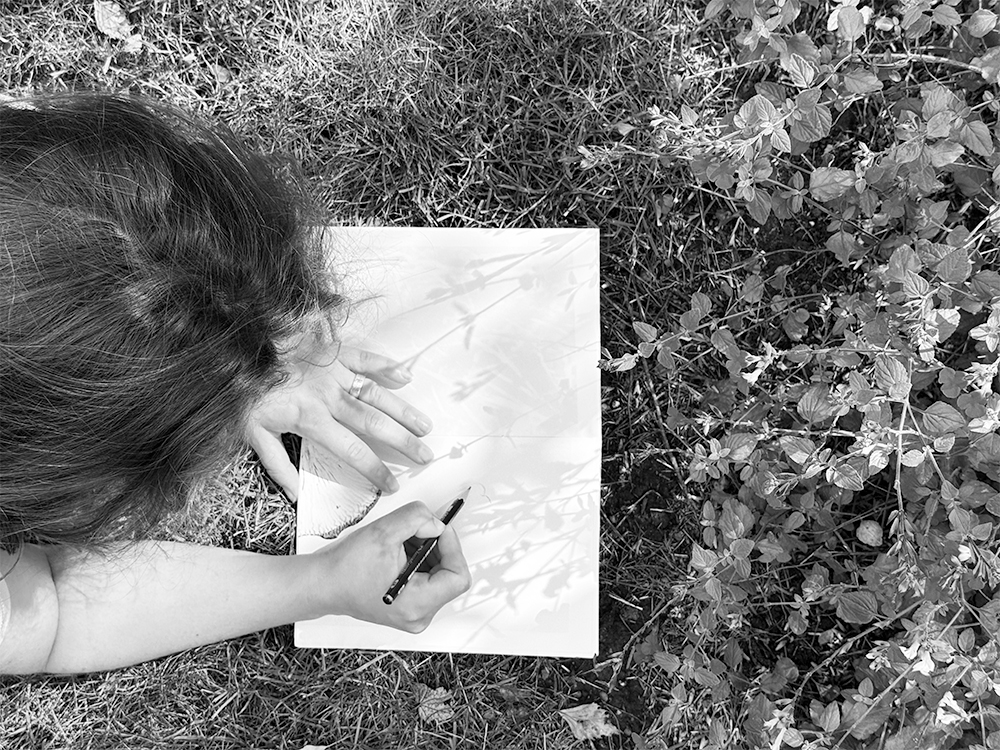




Linocut workshop
by Elisa Verkoelen
Fully booked!
The garden of Marres was the source of inspiration for the linocut that Elisa Verkoelen created a few years ago. “In the Marres garden, I saw how light and shadow alternated, and how the garden was made up of layers.”
On Sunday, August 24, 2025, she will lead a linocut workshop. Discover the Marres garden in a new way: work with negative space and let shadows and shapes tell new stories, which you will then translate into blind drawings and black-and-white linocuts.
No prior experience with linocutting is necessary to participate in the workshop. It is recommended to wear clothing that can get dirty.
Date:
Sunday 24 August 2025
Time:
You can sign up for one of the two workshops:
12—2PM (Fully booked)
3—5PM (Fully booked)
Admission:
€5,00 per person
Language:
Dutch
Group size:
Maximum of 8 persons per workshop
Location:
Marres
Capucijnenstraat 98, Maastricht
Materials included
Information
The workshops will take place in all weather conditions—please dress and equip yourself accordingly!
Questions? Email receptie@marres.org
Would you also like to visit Vultures & Fireflies? You can with a valid admission ticket.
Museum Card holders, ICOM members, children under 18, students of the Maastricht Institute of Arts / Jan van Eyck Academy / Maastricht Academy of Performing Arts / Maastricht Conservatory, and Friends of Marres always receive free admission.
Partners / thanks
Marres receives structural support from the Ministry of Education, Culture and Science, the Province of Limburg and the Municipality of Maastricht.
In addition, Marres thanks Hans Engelbrecht, our volunteer Thuur, as well as everything that grows and flourishes in the garden.
Workshop Marres x @ease
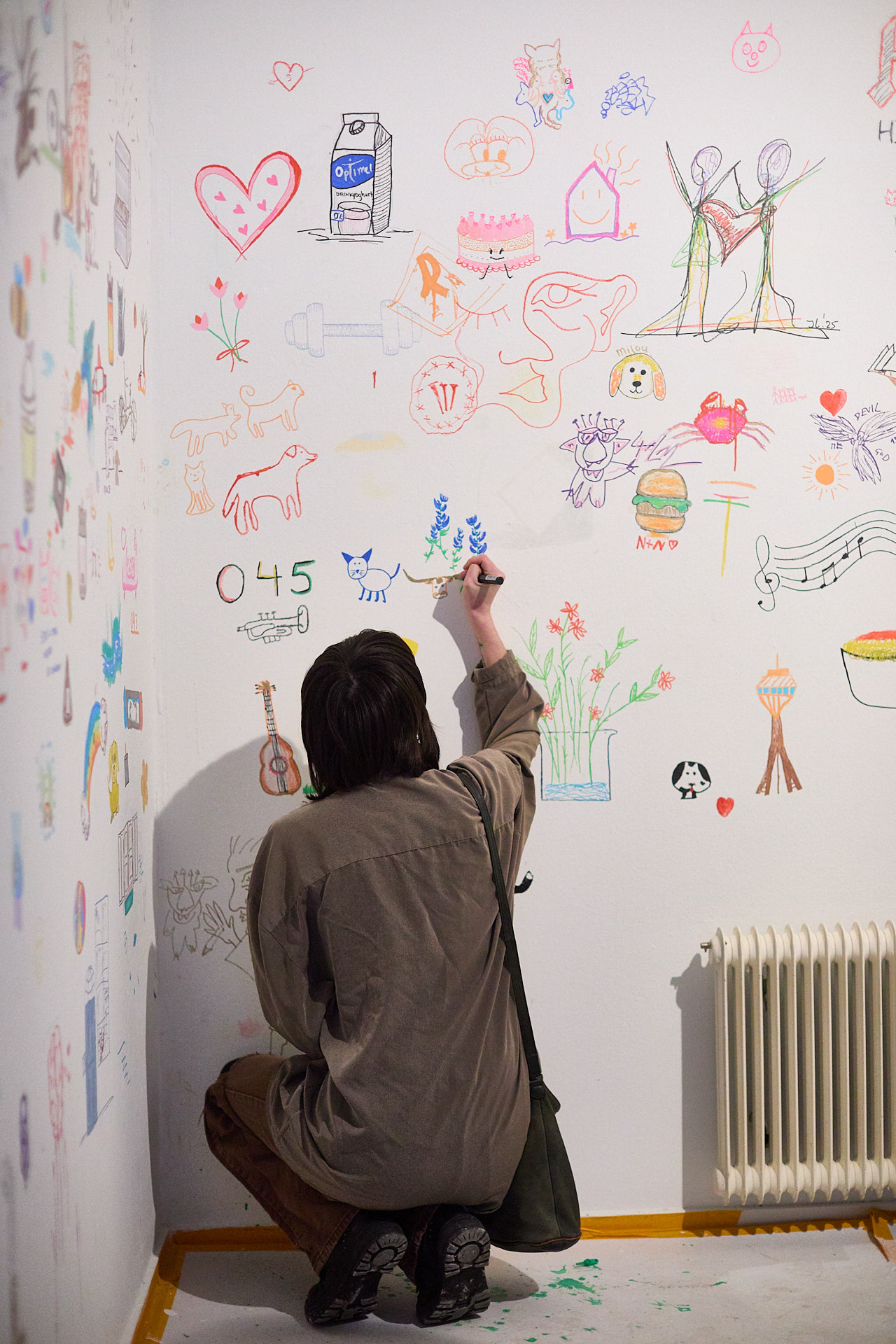
Workshops
Marres and @ease are joining forces! In June, we’re excited to collaborate on two engaging workshops once again. @ease is a place for young people from 12 to 25 years old where they can simply walk in or chat online: anonymously, without an appointment and for free.
Join us, share your story and explore your cultural identity through creative visualization.
Dates & locations:
- 17 June 2025
@ease in Maastricht
16:00-17:30 - 24 June 2025
Marres in Maastricht
16:00-17:30
Want to participate? Sign up by emailing signupeasemaastricht@gmail.com.
Please include:
- Your name
- Your email address
- The project name: Cultural Identity
These workshops are open to anyone aged 12–25 years. We can’t wait to see you there!
Read more about Alejandro Galváns ‘Vultures & Fireflies’Workshop Marres x @ease

Workshops
Marres and @ease are joining forces! In June, we’re excited to collaborate on two engaging workshops once again. @ease is a place for young people from 12 to 25 years old where they can simply walk in or chat online: anonymously, without an appointment and for free.
Join us, share your story and explore your cultural identity through creative visualization.
Dates & locations:
- 17 June 2025
@ease in Maastricht
16:00-17:30 - 24 June 2025
Marres in Maastricht
16:00-17:30
Want to participate? Sign up by emailing signupeasemaastricht@gmail.com.
Please include:
- Your name
- Your email address
- The project name: Cultural Identity
These workshops are open to anyone aged 12–25 years. We can’t wait to see you there!
Read more about Alejandro Galváns ‘Vultures & Fireflies’Visit from Broeklandcollege

For the third time, Marres welcomed a 3rd-year VMBO-T class from Broeklandcollege in Hoensbroek, as part of a five-lesson program.
Earlier at school, the students listened to The Invisible Collection, learned about the work of artist Alejandro Galván, and started making a personal artwork with symbols about their cultural identity.
At Marres, they took it a step further: they got an interactive tour of the exhibition Vultures & Fireflies, imagined their alter ego with the help of a classmate, and helped create a large group mural.
Workshop Studio SUFI

Friday Night Openings
We’re so glad you’d like to join! Unfortunately, this workshop is already fully booked.
On Friday evening, July 4, Dutch designer and tailor Sophie Nelissen—the creative mind behind Studio SUFI—will lead a workshop. Inspired by the Marres garden, you’ll create a fabric bookmark and learn how to use local flowers to print or dye the fabric.
Sophie is a passionate researcher who works with locally sourced materials such as sheep’s wool and natural dye plants, creating designs that tell a story of sustainability and craftsmanship.
Date:
Friday, 4 July, 2025
Time:
Start 6:30PM
Location:
Marres
Capucijnenstraat 98, Maastricht
Workshop Maastricht University Premium team

In this workshop, you will engage your senses to explore how sensory knowledge is used in the workplace. The Premium team and Marres are very excited to see you there and hope you discover something new about yourself.
Each year, students from Maastricht University’s Premium program join Marres’ research to explore sensory culture through immersive exhibitions, training, and education.
Marres education: Kindcentrum Dynamiek

Photo: Dagmar van Wersch
Throughout the 2024/2025 school year, Marres will be organizing workshops for all grade levels at Kindcentrum Dynamiek. These tailor-made workshops align with the school’s CNAL (Creative Curious Active Learning) themes.
Building and Living
This series of interactive workshops takes young students on a sensory and creative journey through the themes of building and living. Through play, observation, movement, and imagination, they will explore their surroundings and materials in new and engaging ways. All workshops are inspired by the work of Alejandro Galván, which the students will also experience firsthand during a visit to Marres.
SenseSquared
In recent years, Marres has developed a method through the international collaboration project SenseSquared to encourage an artistic approach to education. This method will be part of the collaboration with Dynamiek.
Workshop Ebru
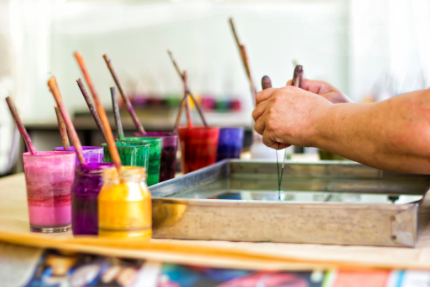
Refugee Project Maastricht and Marres, House for Contemporary Culture, invite you to a creative evening.
On Friday, April 4th, Şerife Keskinkılıç will give a presentation and interactive workshop on ebru, the traditional Turkish art of paper marbling and painting on water.
This will be an open and participatory space for cultural exchange, knowledge sharing, and artistic exploration.
Questions? Contact us at info@refugeeprojectmaastricht.nl
Date: Friday, April 4, 2025
Time: 17:30 – 19:00
Location: Marres
Capucijnenstraat 98, 6211 RT Maastricht
Marres is open every Friday evening until 20:00, with free admission from 17:00. The Ebru workshop is a free event, and all materials are provided.
Due to high demand, this workshop is unfortunately fully booked. Keep an eye on our web agenda or socials for a new date!
Amparo González Sola – Gestures as Portals
Gestures as Portals is a research and ongoing performance that expands the questions of the project While Taking Shape by choreographer and dancer Amparo González Sola.
The month-long performance takes place during the dismantling of the exhibition Vultures & Fireflies by Mexican artist Alejandro Galván. Visitors encounter the performers in a house where remnants of the exhibition remain visible, alongside traces of its deconstruction and empty spaces.
Amparo González Sola resumes the questions and choreographic methods explored in While Taking Shape,* extending them into a durational, site-responsive format. For Marres, she develops a continuous performance that unfolds over four weeks, inviting visitors to spend as much time as they wish in the space. The work evolves daily, allowing the choreographic materials—and the space itself—to transform gradually through repetition, presence, and interaction.
Gestures are central to González Sola’s practice. She approaches them as portals to memory and connectors between bodies, shaped by context, inherited through generations, and always relational. During her time at Marres, she works with the gestures found in the rooms: those of the performers, the visitors, the workers, and traces from the former exhibition Vultures & Fireflies. These gestures are echoed, held, stretched in the space, repeated, reversed, reshaped: building a vocabulary of movement that slowly accumulates meaning.
The performance emerges from a growing sense of detachment in a world where terrible events are constantly projected onto our retinas through the media—an endless stream of images moving at high speed and stripped of context, seemingly freezing our ability to feel. How close does something need to happen before we feel a connection or a sense of responsibility? By focusing on small gestures, González Sola invites us to reconsider the dynamics of gaze, distance, and proximity as we reflect on what it means to bear witness.
*While Taking Shape is a dance performance created by Amparo Gonzalez Sola, premiered at SPRING Performing Arts Festival 2025.

What to expect

Dance and movement by performers Amparo González Sola and Leandro de Souza, accompanied by video, light, and sound.
There is no fixed program: each day unfolds differently. González Sola creates a daily score indicating what takes place in each room, at what time, and for how long. This information is shared at the entrance each day. The floor managers and volunteers of Marres explain the daily program and guide you through the different spaces.
Visitors are invited to participate in small experiments that engage body and senses. Sometimes these involve simple actions, such as moving at a certain pace or walking backwards in slow motion. At other times, visitors are asked to hold a posture, gaze, or gesture for a longer time. In this way, an alternation of looking, listening, moving, and slowing down emerges, allowing visitors to become part of an ongoing process of exploration. Simply watching is also welcome!
In the screening room, the film Holding Gestures plays continuously, once again placing gestures and movement at center stage — this time on screen.
Workshops
On Friday evenings and at selected times during the week, González Sola invites you to join her in participatory workshops. Here she shares elements of her choreographic research, encouraging participants to experiment with movement scores and instructions in an open and collective way.
Artist talks
In a series of talks, González Sola discusses her work and process, reflecting on how gestures, movement, and space generate meaning and connection.
Dates & events
Date:
10 Sept—5 Oct 2025
During Gestures as Portals Marres is open from Wednesday — Sunday.
Time:
Continuous performance between 12PM and 5PM.
On Friday evenings, Marres is open until 8PM. During those evenings and at various times throughout the week, González Sola offers workshops where visitors are invited to participate in her research.
Special events
Artist Talk & Performance
12 September 2025
Read more
Workshop
26 September 2025
Read more
Workshop
3 October 2025
Read more
Closing event Gestures as Portals
5 October 2025
Read more


Amparo González Sola
Amparo González Sola (Argentina, 1984) works where dance meets social listening. Her choreographic practice moves between performance and participatory experiments, shaped by feminist activism, migration, and an ongoing inquiry into reciprocity—how bodies, places, and histories respond to one another. She treats gestures as portals: held, slowed, and reshaped to reveal the memories they carry and the connections they invite. Recent works include While Taking Shape, The Conspiracy of Forms, and If Every Rock Is a Hole, presented at SPRING Performing Arts Festival, alongside the long-term project Exploring Reciprocity, which convenes communities across generations and disciplines. From 2025 to 2028 she is an associate artist at Dansateliers.
Credits Gestures as Portals
Concept and direction: Amparo González Sola
Performance and research: Leandro de Souza, Amparo González Sola
Sound: Nahuel Cano
Light: Vinny Jones
Dramaturgical advice: Bek Berger
Video: Jesus Serrano Huitron
Co-production: Dansateliers
Gestures as Portals is part of While Taking Shape, a co-production of Dansateliers, SPRING Performing Arts Festival, Frascati Producties.
Leandro de Souza (Brazil, 1981) is a choreographer and dance maker. His work moves across artistic languages, bringing together knowledge, perspectives, and voices in new ways. He explores unusual approaches to movement, and develops methods and strategies for artistic research and performance-making. Recurring concepts in his practice include escape, opacity, and entanglement, with a strong focus on the shifting possibilities of words, voice, body, and objects. His works include Musa Insistente (Insistent Muse), Eles Fazem Dança Contemporânea (They Make Contemporary Dance), and Sismos e Volts (Seisms and Volts), the latter awarded by the Association of Art Critics of Sâo Paulo.
Vinny Jones (Australia) is a light designer who uses light as a performative medium to shape the relationship between audiences and space. Her work spans experimental performances, large-scale site-specific projects, and collaborations on the stages of national theatres in the Netherlands, the UK, and the Czech Republic. She is drawn to light’s ability to create atmospheres, shift perception, and reveal hidden dimensions within a performance. Recent collaborations include works with Arno Schuitermaker, Lotte van den Berg and the artist duo Andrea Božić and Julia Willms.
Nahuel Cano (Argentina, 1982) is a sound experimenter, theater maker, and performer whose work explores the intersections of ecological collapse, grief, and colonial histories. He weaves together sound, film, storytelling, song, and poetry to create performances that center the transformative power of listening. His recent projects, including Ways to Listen to a River, invite deep connections between audiences, places, and histories. Since 2022, he has been an invited artist at Residenties in Utrecht, engaging with communities and institutions on themes of ecology and Dutch colonial pasts. His work has been supported and presented by local and international platforms such as Het Huis Utrecht, Buitenplaats Doornburgh, Gaudeamus Muziekweek, Hellerau, and WP Zimmer.
Podcast Sensing Art, Training the Body
You can also watch this podcast at YouTube and Vimeo or listen to Apple Podcasts.
Artist talk
On Friday evening, September 12, visitors were able to attend an artist talk with Amparo & Leandro.
6—6:30 PM
Performance by Amparo González Sola and Leandro de Souza
6:30—7PM
Artist talk with Amparo González Sola, Leandro de Souza and Valentijn Byvanck
7PM – Drinks
8PM – Closing
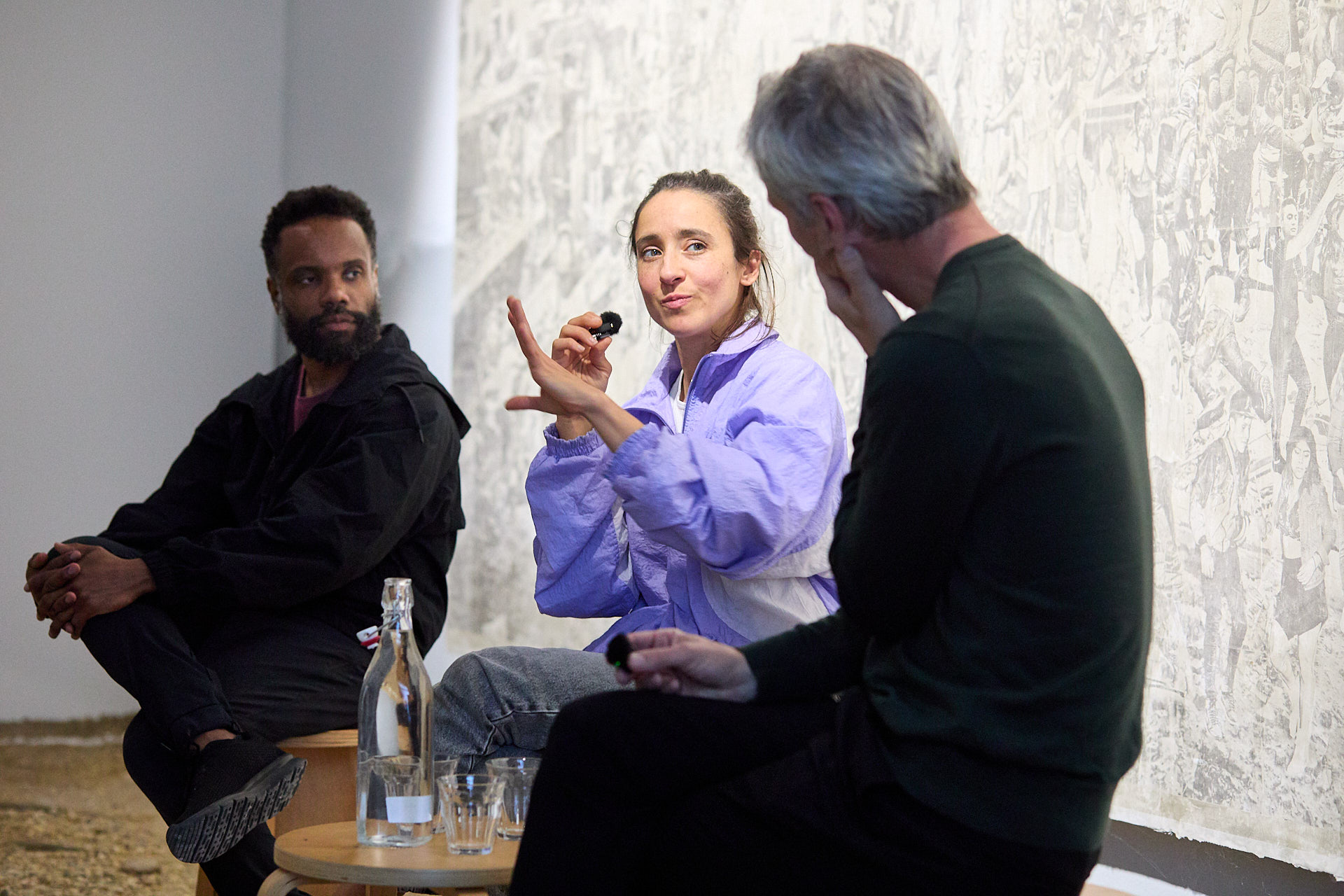
Workshops

Friday September 26, and 3 October, from 6—7PM, Amparo González Sola offers an insight into the research Gestures as Portals.
Through simple movement exercises and the activation of the senses, we will explore how gestures can open doors to new ways of perceiving and experiencing. Participation is easy and accessible: no prior experience in dance or performance is required.
Admission is free between 5–8PM and everyone is welcome!
In the film room, the film Holding Gestures will be shown continuously — where gestures and movement once again take center stage, this time on the screen.
Closing event Gestures as Portals, last chance!
On Sunday, 5 October, Amparo González Sola, together with Leandro de Souza, will present a special closing performance during the Nederlandse Dansdagen.
Program (free entrance):
12PM
Welcome with coffee & croissants
12:15—12:45PM
Performance by Amparo González Sola and Leandro de Souza
1—2PM
Gathering at the Vrijthof in Maastricht to express support for the Red Line protest in Amsterdam. Everyone who cannot travel to Amsterdam is warmly invited to join us. Together, we will show that solidarity is possible everywhere.
Marres will be closed between 12:50—2PM.
2:30—5PM
Continuation of the performance Gestures as Portals, in which dance, movement, and social engagement come together.
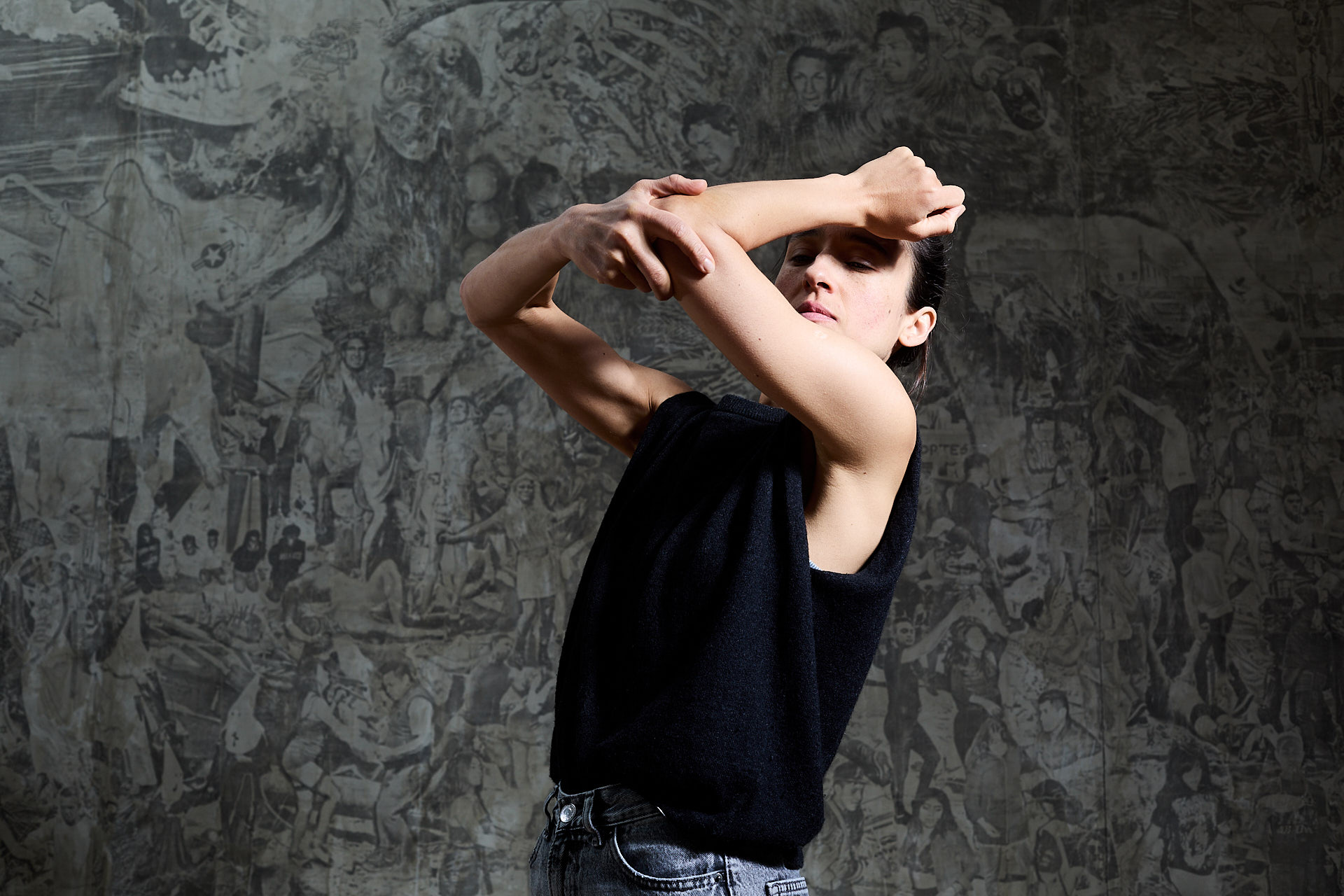
Language of the body
The diptych of Gestures as Portals by Amparo González Sola and Terms & Conditions by Ingrid Berger Myhre continues Marres’ long-standing tradition of exploring the language of the body. The Floor is Lava (2019) by artists Sander Breure and Witte van Hulzen, and Museum Motus Mori (2019) by choreographer Katja Heitmann, were also dedicated to this theme.
Press
Partners / thanks to
Co-production: Dansateliers
Many thanks to Alejandro Galván and his inspiring work Vultures & Fireflies, Lisa Reinheimer, and the team at Dansateliers, Rita Bifulco and Amador Alina Folini for their contribution in this research, FPK, BAU AIR, Greenhouse, SPRING Performing Arts Festival, Rooms Performance Festival, workspacebrussels, Tanzhaus Zürich, CAMPUS Paulo Cunha e Silva for their support.
Marres receives structural support from the Ministry of Education, Culture and Science, the Province of Limburg and the Municipality of Maastricht.

Extended: Adventures in Slumberland
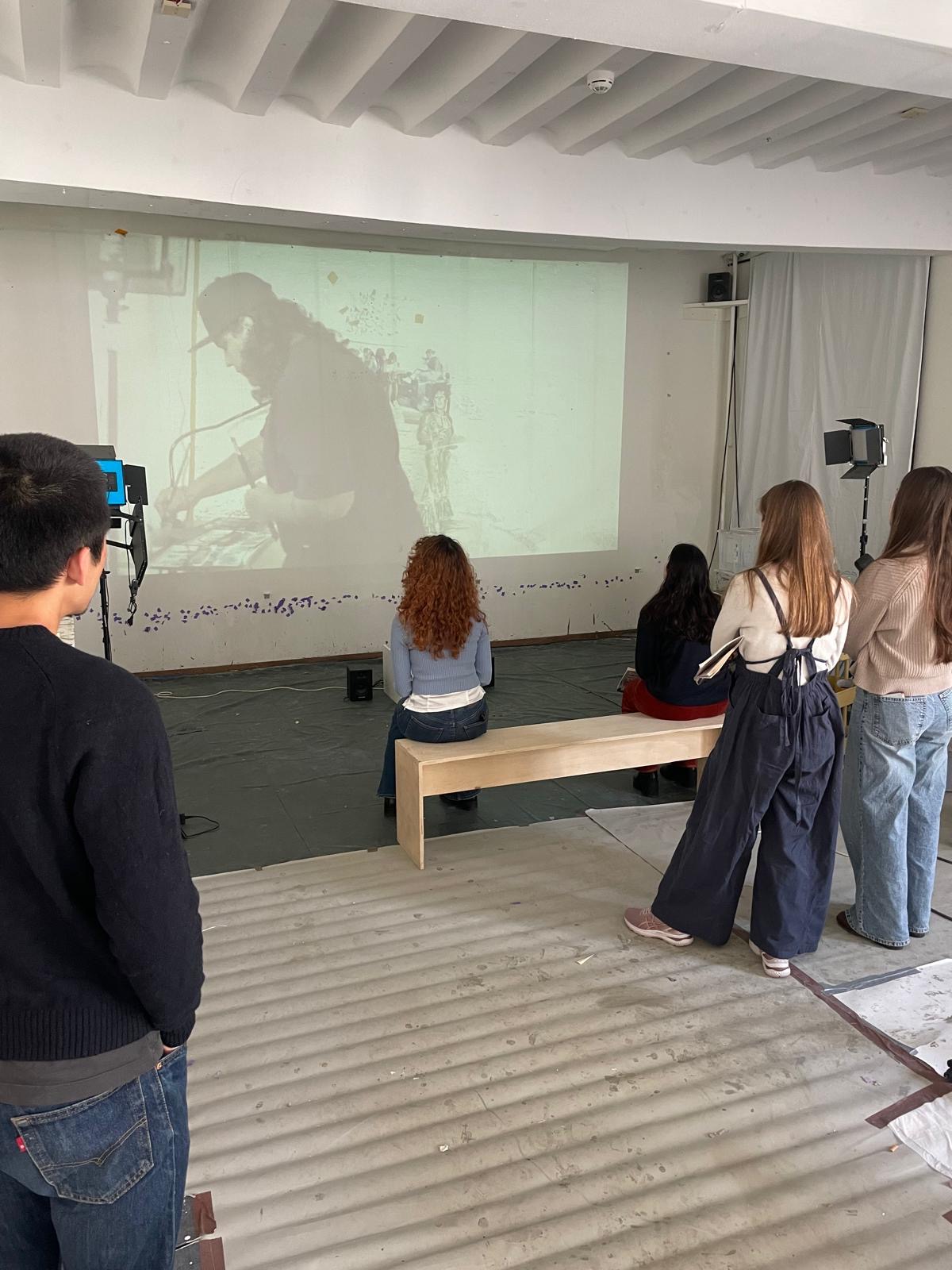
Extended started with the four-month art project Adventures in Slumberland on 15 March 2025 with a new group of members.
In this new workshop series, Extended takes young people on a creative journey of discovery. They’ll explore the magical, beautiful—and sometimes scary—world of dreams and nightmares. Dreams are more than just weird stories in your head. They let you imagine other worlds, escape the chaos of everyday life, and they can even help you come up with fresh ideas. What if you could use your imagination to actually change something?
In the spring of 2025, Extended dives deep into the world of dreams. These workshops are inspired by Mexican artist Alejandro Galván, whose exhibition Vultures & Fireflies creates a colorful dream world. His art blends stories from his neighborhood with myths, comics, and gaming culture—where fantasy and reality merge.
With the help of artists, a coach, and the facilities of Marres and the Jan van Eyck Academie, you’ll have the chance to create and shape your own dream world.
Read more about Extended Get to know more about Vultures & Fireflies by Alejandro GalvánWorkshop Marres X @ease

Workshops
Marres and @ease are joining forces! This January, we’re excited to collaborate on two engaging workshops. @ease is a place for young people from 12 to 25 years old where they can simply walk in or chat online: anonymously, without an appointment and for free.
Join us to meet Mexican artist Alejandro Galván, who is currently working on his exhibition ‘Vultures & Fireflies’ at Marres. Share your story and explore your cultural identity through creative visualization.
Dates & locations:
4 February 2025
@ease in Maastricht
16:00-17:00
11 February 2025
Marres in Maastricht
16:00-17:00
Want to participate? Sign up by emailing signupeasemaastricht@gmail.com.
Please include:
- Your name
- Your email address
- The project name: Cultural Identity
These workshops are open to anyone aged 12–25 years. We can’t wait to see you there!
Read more about Alejandro Galváns ‘Vultures & Fireflies’Workshop Marres X @ease

Workshops
Marres and @ease are joining forces! In February, we’re excited to collaborate on two engaging workshops. @ease is a place for young people from 12 to 25 years old where they can simply walk in or chat online: anonymously, without an appointment and for free.
Join us to meet Mexican artist Alejandro Galván, who is currently working on his exhibition ‘Vultures & Fireflies’ at Marres. Share your story and explore your cultural identity through creative visualization.
Dates & locations:
4 February 2025
@ease in Maastricht
16:00-17:00
11 February 2025
Marres in Maastricht
16:00-17:00
Want to participate? Sign up by emailing signupeasemaastricht@gmail.com.
Please include:
- Your name
- Your email address
- The project name: Cultural Identity
These workshops are open to anyone aged 12–25 years. We can’t wait to see you there!
Read more about Alejandro Galváns ‘Vultures & Fireflies’Workshop Training the Senses – Alter Ego: Training the Sense of Your Other Selves
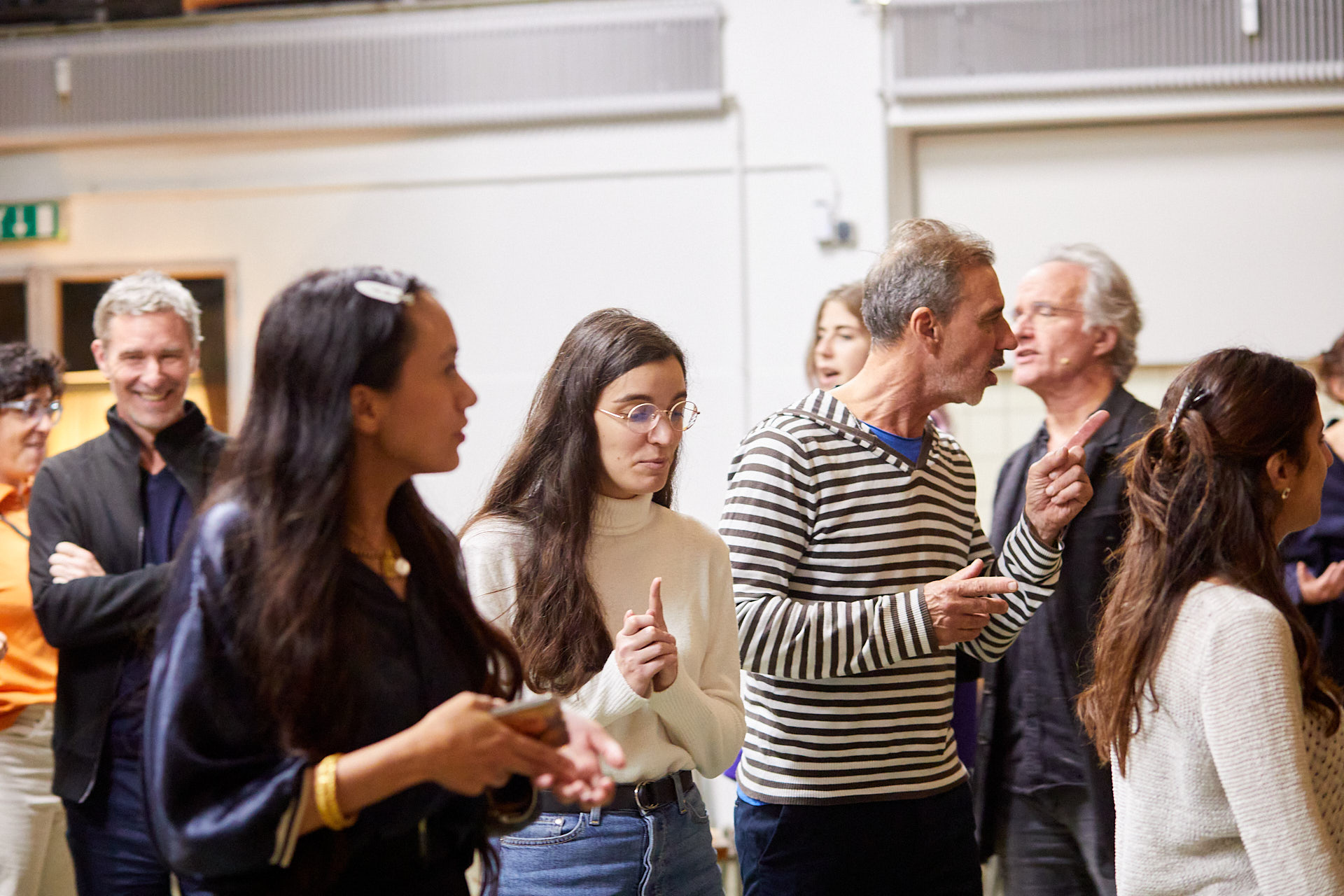

A workshop on Alter Ego’s
Artists: Ina Darakchieva, Philippine Hoegen, Sohrab Kashani and Nika van Woenzel
An alter ego is another version of you—someone you sometimes want to be. This version might look, talk, and act differently, but it’s still you! It’s like trying on a new character to see the world in a new way.
Many artists, like Beyoncé and the writer Elena Ferrante, use, or are, alter egos. Ina Darakchieva, Philippine Hoegen, Sohrab Kashani and Nika van Woenzel are four performance artists who explore this idea in different ways: as social commentary, creative expression, coping strategies, art therapy, research, or political refuge. We’ve had amazing experiences with our alter egos and find that they help us understand things better.
In the upcoming evening event, we’re excited to share this technique with anyone interested—no art experience is necessary! A safe and welcoming space is created, where you will be guided through finding and practicing your own alter ego.
Date:
29 November 2024
Time:
6 – 8PM
Location:
Marres, Maastricht
Language:
English
Ina Darakchieva
Ina Darakchieva creates an alter ego that defies traditional gender norms and challenges societal definitions. Using digital glitches and data moshing, Ina distorts their image to explore identity. They also experiment with drag makeup and bold fashion, incorporating these into daily life to see how aesthetics influence personality.
Philippine Hoegen
In her doctoral research Performing Working*, Philippine Hoegen explores the connection between work and performance. She asks who we are when we work versus when we don’t or can’t, focusing on the value of hidden and unwaged labor and the invisibility of those who do it. Previously, she used an alter ego named David to investigate different versions of the self. Now, she’s developing a new alter ego to explore work refusal and identity in a possible post-work society.
*This research is part of a Professional Doctorate project at HKU (University of the Arts Utrecht), launched in 2023.
Sohrab Kashani
Sohrab Kashani explores space, body, and perception, focusing particularly on the self in relation to others, and on themes of agency and community. His different personas include ‘Super Sohrab’, a satirical superhero who uses humor and embraces failure in everyday life, and ‘the Museum of Sohrab’, a living museum filled with objects, documents, memories, and feelings.
Nika van Woenzel
As a visual artist and game therapist, Nika van Woenzel makes connections between art and psyché. In her work, she starts from people’s singularity and investigates what a person needs to secure and develop it. Within this project, Nika explores the function of the alter ego and how it is created from a person’s singularity.
25 years of Marres – The Secluded Garden workshop

To celebrate the 25th anniversary of Marres, marked on the 25th of each month, an extra garden workshop will be organized for November 25.
Workshop: The Secluded Garden
With Hans Engelbrecht
In the urban garden at Marres, the shift from fall to winter is unfolding. We often see this as a process of fading: leaves change color and fall, plants wither, birds migrate, and other animals begin their hibernation. But much more is happening. Gardener Hans Engelbrecht will highlight the processes occurring during this period and discuss the unique plants and animals found in the garden and on its historic walls.
Bundle up and explore Marres’ winter garden with a nice hot chocolate afterwards. We look forward to welcoming you!
Time:
The workshop will be held at two different times:
11:00AM – 1:00PM
2:00PM – 4:00PM
Location:
Marres Urban Garden, please check in at the reception
Tickets:
€5,00
Tickets are no longer available
Be quick! Each workshop has a maximum of 15 participants.* The workshops will take place in all weather conditions, so please dress accordingly and wear appropriate footwear! Questions? Mail to receptie@marres.org
Attention! The workshops are conducted in Dutch

Hans Engelbrecht
Hans Engelbrecht is an ecological gardener and owner of the company De Groene Stap. His aesthetic approach to landscaping intricately weaves cultural history, ecology, and the local environment. This forges a relationship between gardens and their surrounding environments, giving prominence to nature and natural processes. In Maastricht, he has developed projects such as the city garden of Marres, Sphinxpark, and “De tuin der barmhartigheid” (Garden of Mercy).

Podcast
In this episode, you can listen to a (Dutch) interview by Petra Quadvlieg with Hans Engelbrecht, who is responsible for the development of the Marres city garden.
Hans Engelbrecht is an ecological gardener and developer of the Marres garden. Petra Quadvlieg is a journalist and writer. She recently published the book “Je hond eet je niet op” (“Your dog won’t eat you”).
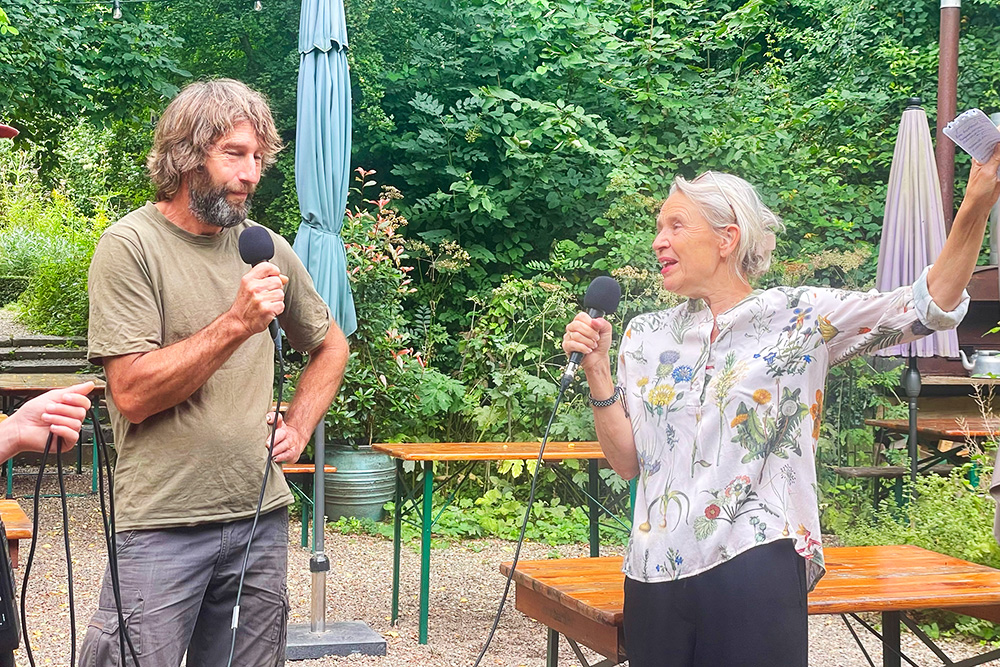
SenseSquared: An Education for the Future MANIFESTO

Photo: Rob van Hoorn
Catch a glimpse of a new paradigm for education. SenseSquareds second international conference introduces teachers, school leaders, artists and policymakers to a different view of education.
The SenseSquared MANIFESTO sheds light on how education may need to transform itself to meet the challenges of the future.
The SenseSquared collective suggests that
- the arts may offer the kind of education that our societies need.
- the arts may form the glue that connect diversity with inclusion, inclusion with understanding
- the arts offer a wealth of approaches towards an education based on the way we relate to each other and the world
Sensesquared MANIFESTO
Friday 15 and Saturday 16 November
9.30AM – 5PM
Erasmus University College Campus Kanal
Slotstraat/Rue de la Serrure 28
Brussels
Garden of Earthly Delights workshop series

Marres’ wild city garden is home to a large variety of birds, insects, butterflies, and frogs as well as fruit trees, a vegetable patch, and an herb garden. Covering approximately 1,000 m2, it is the largest publicly accessible inner courtyard in the old center of Maastricht – a marvelous place to take a break and unwind.
This August, Marres invites you to join workshops about all the beauty of this hidden piece of nature in the bustling city.
Evening Primrose Workshop
by Hans Engelbrecht and Mark Franck
Friday, Aug 16
6:00 – 8:00 PM
Explore Marres’ city garden at twilight and encounter the fruits, vegetables, herbs, and flowers that reveal themselves in all their splendor in the early evening. You will also have an opportunity to prepare a small meal using ingredients from the garden.
The tour focuses on the evening primrose and its aura of magic and mystery. Each evening, its buds take only a few minutes to unfurl into delicate, yellow flowers. Although they wither the next day, they are replaced by new flowers that perform the same glorious, nightly unfurling over several weeks. The flower is said to ward off evil spirits and is edible, as are its roots and leaves. Its oil is used to treat skin conditions.
Language: Dutch
Admission: €5
Group size: max. 20 people


Sensory Tour & Workshop
by Hans Engelbrecht and Mark Franck
Saturday, Aug 17
10:00 AM – 12:00 PM
Go on a journey through an enchanting, sensory world and experience Marres’ city garden like never before. Can you smell the garden? How does the air taste as you breathe through your mouth? If you listen carefully, do you hear more than just the birds chirping or human voices? As you stir and awaken your sight, touch, taste, smell, and hearing, you will engage in a mindful, meaningful interaction with nature.
After the sensory tour, you will use the garden’s fruits, edible flowers, medicinal plants, and herbs to mix drinks and prepare small bites.
Language: Dutch
Admission: €5
Group size: max. 20 people
Creating a Seed Bank
by Hans Engelbrecht and Mark Franck
Sunday, Aug 18
10:00 AM – 12:00 PM
Marres’ city garden features large fig trees, flowering shrubs like hawthorn and philadelphus, ferns, and flowers such as tulips and daylilies. Hans Engelbrecht and Mark Franck will give an inspiring talk on the concept behind Marres’ city garden, followed by a guided tour to discuss the garden’s unique flora and fauna. You will have the opportunity to get hands-on maintaining and expanding the garden by collecting seeds in their own pots and creating a seed bank in the historic ice house, located to the rear of the garden. At the end of the workshop, you will be given seeds to plant at home as a souvenir of the city garden.
Language: Dutch
Admission: €5
Group size: max. 20 people


Sound creatures in the garden
by Matteo Marangoni
Sunday, Aug 18
4:00 PM – 6:00 PM
During this workshop in the garden, you will explore how people can use sound and music to share space and interact with different life forms: plants, animals, and humans. Leading the workshop is Matteo Marangoni, developer of Komorebi: a swarm of “sound creatures” inspired by a broad range of animals that exhibit “chorusing” behaviors (group vocalizations), such as frogs, crickets, cicadas, and many species of birds.
Samples from Karen Bakker’s book The Sounds of Life will demonstrate how artificial intelligence and bioacoustics are providing new insights into animal communication. BirdNET, an artificial neural network, will be used to identify birds based on their songs and calls. You will also practice adjusting the acoustic environment to create a balance between the different habitats.
Language: English
Admission: €5
Group size: max. 20 people
Information
The workshops will take place in all weather conditions, so please dress accordingly and wear appropriate footwear!
Questions? Mail to receptie@marres.org
Visit Limburg Biënnale: show your ticket for the garden program at the reception and receive a €5 discount on admission to the exhibition.
Free admission for: Museum Pass (Museumkaart) holders, ICOM members, children under 18, students of the Maastricht Institute of Arts / Jan van Eyck Academie / Maastricht institute of performative arts (Toneelacademie) / Conservatorium Maastricht, and Friends of Marres.
Hans Engelbrecht
Hans Engelbrecht is an ecological gardener and owner of the company De Groene Stap. His aesthetic approach to landscaping intricately weaves cultural history, ecology, and the local environment. This forges a relationship between gardens and their surrounding environments, giving prominence to nature and natural processes. In Maastricht, he has developed projects such as the city garden of Marres, Sphinxpark, and “De tuin der barmhartigheid” (Garden of Mercy).


Mark Franck
Since 2013, Mark Franck has dedicated himself to creating sustainable and edible green spaces at the creative consultancy Landmark Green Consciousness. Franck offers mindfulness training, coaching, and consultancy services, each of which draws inspiration from nature. With a background in garden and landscape design, he possesses extensive experience and knowledge in public green spaces and understands the social, educational, and ecological needs of society.
Matteo Marangoni
Matteo Marangoni is an artist specializing in sonic rituals, DIY media, and applied utopianism. His artistic practice focuses on exploring the relationship between humans and things, nature, and technology. Together with Dieter Vandoren, he created Komorebi: a swarm of artificial creatures that generate music in response to the shadows of trees moving in the wind. He is eager to explore how artificial intelligence can facilitate connections with other forms of intelligence on our planet. Marangoni is a co-founder of the instrument inventors initiative (iii) in The Hague.

Partners / thanks to
Marres receives structural support from the Ministry of Education, Culture and Science, the Province of Limburg and the Municipality of Maastricht.
In addition, Marres thanks Hans Engelbrecht, Mark Franck, and Matteo Marangoni, our volunteer Thuur, as well as everything that grows and flourishes in the garden.
The Invisible Collection at school

On May 17, 24 and 31, Marres hosts a workshop series of The Invisible Collection at Sint Jozef Elementary School in Merkelbeek, with talent group 6, 7 and 8 participating.
The workshops are Limburg Biënnale themed. Students listen to a story of the artwork 50-50 that can be seen in Odapark, Venray. In the group we discuss what we hear and what the artwork could look like. Students use their imagination. After this they design their own artwork based on the story.
The next lesson they will elaborate their drawing into a 3D sculpture. They actually create their own sculpture park, like in Odapark. The students work out their own ideas with various materials (clay, wood, iron wire, cork, cardboard, wool, bubble wrap, etc.). The process and discovering new materials and combinations are key.
On the third workshop they create a story about their own artwork, this they then also voice. When describing the artwork, they involve all the senses.
The Invisible Collection at school

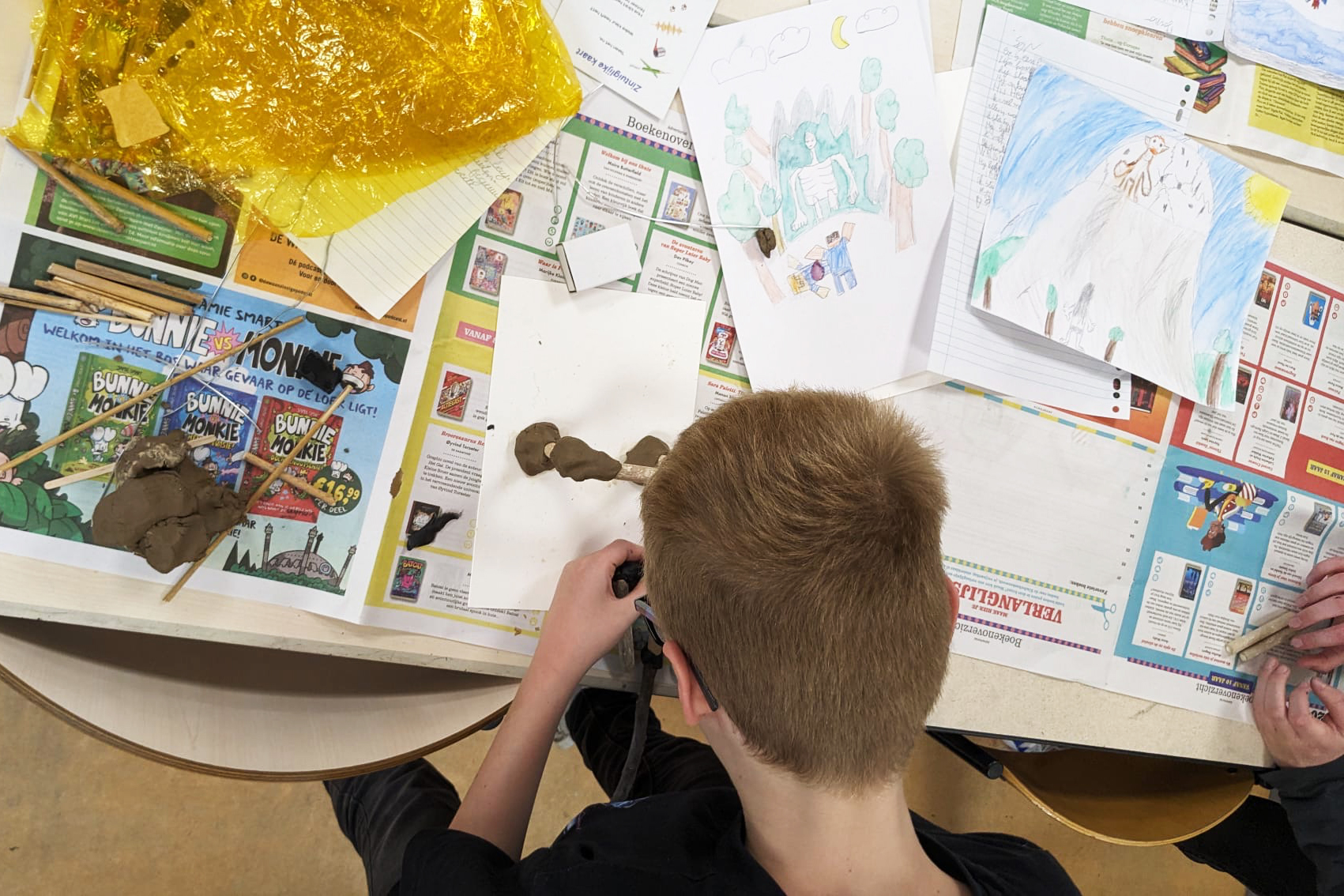
On May 17, 24 and 31, Marres hosts a workshop series of The Invisible Collection at Sint Jozef Elementary School in Merkelbeek, with talent group 6, 7 and 8 participating.
The workshops are Limburg Biënnale themed. Students listen to a story of the artwork 50-50 that can be seen in Odapark, Venray. In the group we discuss what we hear and what the artwork could look like. Students use their imagination. After this they design their own artwork based on the story.
The next lesson they will elaborate their drawing into a 3D sculpture. They actually create their own sculpture park, like in Odapark. The students work out their own ideas with various materials (clay, wood, iron wire, cork, cardboard, wool, bubble wrap, etc.). The process and discovering new materials and combinations are key.
On the third workshop they create a story about their own artwork, this they then also voice. When describing the artwork, they involve all the senses.
The Invisible Collection at school

On May 17, 24 and 31, Marres hosts a workshop series of The Invisible Collection at Sint Jozef Elementary School in Merkelbeek, with talent group 6, 7 and 8 participating.
The workshops are Limburg Biënnale themed. Students listen to a story of the artwork 50-50 that can be seen in Odapark, Venray. In the group we discuss what we hear and what the artwork could look like. Students use their imagination. After this they design their own artwork based on the story.
The next lesson they will elaborate their drawing into a 3D sculpture. They actually create their own sculpture park, like in Odapark. The students work out their own ideas with various materials (clay, wood, iron wire, cork, cardboard, wool, bubble wrap, etc.). The process and discovering new materials and combinations are key.
On the third workshop they create a story about their own artwork, this they then also voice. When describing the artwork, they involve all the senses.
The Invisible Collection at primary school Sint Aloysius




Photo: Gert Jan van Rooij
For four weeks, the students of primary school Sint Aloysius in Maastricht participated in the project The Invisible Collection.
Children described their favorite artwork, sharing their feelings when they see or smell it, what they fantasize about, and what they think about it. The project teaches children to reflect on their own perceptions and the experiences of others. Teachers can use this story archive to explore themes such as identity, culture, society, language, and history in their own way.
Following an audio story about the ‘cockroach world’ by Peruvian artist Arturo Kameya, featured in the exhibition Opaque Spirits, the students created their own stories and crafted models of their fantasy worlds using various materials.
Until Sunday 12 May, their creations will be exhibited in the ice house at the back of the Marres garden. Visitors can also listen to their recorded stories for The Invisible Collection. Our city garden and the ice house are free to visit for everyone. Children under 18 always get free entrance to the exhibition.
Are you interested in an educational project at your school? Please send an email to education@marres.org.
Workshop for special education
Special Plantiarchy tour & workshop

Special Plantiarchy tour & workshop
On Friday, July 14 at 02:00PM members of Sunflower Soup will give a tour and workshop at Marres.
Learn more about the story and special creation of Plantiarchy and then make a plant or flower out of paper pulp in the studio room.
Help grow the Plantiarchy and stop by!
If you have an entrance ticket to Plantiarchy, you’re welcome to join the tour and workshop. Children under 18 are free.
Floriography

Can we speak in flowers?*
During the workshop at Marres participants are invited to create flower arrangements and discover the secret language of the flowers by using a ‘Flower Dictionary’ to translate the flowers into words.
The workshop will focus on the ‘secret language of flowers’; Floriography. The use of this language was customary amongst a certain class of Victorians to present gifts consisting of flowers and plants arranged into bouquets to convey a coded message. Upon receiving one of these ‘Nosegay’ one could reference a Victorian society flower dictionary to de-code the message. Within these dictionaries, the language of the flowers is described in detail. Small conversations were exchanged with speaking bouquets.
Thank you for your interest in our workshop. At this time, all available seats are already taken.
*title of the workshop is a poem by Nayyirah Waheed

Sanne Vaassen
Sanne Vaassen is interested in how flowers have been used as carriers of messages for cultures, religions and nations. She investigates how these symbols have been developed, interpreted, taken over or adapted and forgotten.

Training the Senses: Body Language
Date: June 8th
Time: 8 – 10 PM
With: Ike Kamphof and Ruud Hendriks
Location: Misericordeplein, Maastricht
Language: English spoken
How can we attain knowledge of our bodily action and reflexes through the study of people who are extra sensitive to the wordless behavior of others? Ike Kamphof presents various possibilities of sensory existence and co-existence by exploring rhythms, mimetic mirroring and sensory details. These all play a large role in our daily, largely silent and subconscious interaction. Ruud Hendriks studies clowns specializing in dementia care, who seek to help people with this condition retain their sensory and emotional being in the world. He focuses on clowning as a technique to become extra-sensitive to the subtle, wordless expressions of persons with dementia. Training the Senses helps the clown go along with the patients and become attuned to their ways of being in the world. The clown also tries to find access to hidden capacities in people with dementia to stay sensitive and receptive to outside stimuli.

Ruud Hendriks
Ruud Hendriks (1961) is an Assistant Professor of Philosophy in the Faculty of Arts and Social Sciences at Maastricht University in the Netherlands. He studies artistic projects pertaining to people suffering from dementia and Parkinson’s disease. For this research, he was trained as a miMakkus clown, which involved learning to make contact with very simple gestures, body language and mimicry on a ground zero-based experience or expectation level.
Ike Kamphof
Ike Kamphof (1959) is a philosopher and works in the Faculty of Arts and Culture at Maastricht University. She studies the role of media and technologies in care networks. In her recent book, Iedereen Voyeur (Everybody is a Voyeur, 2013), she explores our relationship to the world and to each other as expressed in ways of looking. Countering dominant views of the human being as a detective-scientist who strives to map the world by overseeing it, she focuses on embodied, multisensory ways of perceiving the world. The latter do not separate the viewer from what she sees, but transform them both.
Thanks to
Maastricht University
Ike Kamphof
Joeri Bruyninckx
Anna Harris
Rob van Duyn
Arie van der Lugt
Emilie Sitzia
Annelies Jacobs
Training the Senses: The Knowing Body
Date: May 11th
Time: 8 – 10 PM
With: Tim Ingold
Location: Van Eyck Academie, Academieplein 1, Maastricht
Language: English spoken
Tim Ingold’s wide-ranging studies encourage us to re-appreciate alternative knowledge or, put differently, things our bodies know but we do not always act upon, such as acquired skills, sudden reflexes and marked intuition. With a focus on alternative ways to find knowledge, Ingold offers imaginative workshop tutorials that include weaving baskets and flying kites with students. Tim Ingold’s writings cover themes as far apart as humans and animals, sensing, education, skill, perception, making, materials and becoming. His most recent book, The Life of Lines, is a wonderful example of his achievements and a poetic narrative that interlaces bodies, minds, landscapes, topographies and perceptions through a correspondence of lines.

Tim Ingold
Tim Ingold has taught at the University of Helsinki, the University of Manchester and the University of Aberdeen, where he currently holds a chair in social anthropology and directs the Knowing From the Inside group. His work emphasizes embodied skills of perception and action within social and environmental contexts of human development. This has led him to examine the use of lines in culture and the relationship between anthropology, architecture, art and design. His works include Lines: A Brief History (2007), The Perception of the Environment (reissued in 2011), Being Alive (2011), Making: Anthropology, Archaeology, Art and Architecture (2013) and The Life of Lines (2015). In collaboration with the Van Eyck Academy.
Thanks to
Maastricht University
Ike Kamphof
Joeri Bruyninckx
Anna Harris
Rob van Duyn
Arie van der Lugt
Emilie Sitzia
Annelies Jacobs
Training the Senses: The Body Here and There
Date: March 30th
Time: 7 – 9 PM
With: Jenny Slatman and Kenneth Meijer
Location: Kunstkwartier 6211, Misericordeplein, Maastricht
The perception of heat, cold and pain, of being touched or moving our body, causes us to experience our bodies as inalienably ours. Yet other sensory experiences may cause us to suddenly perceive our body as strange and question the boundaries between our own and someone else’s body. Experiments demonstrate that we can easily fool ourselves into experiencing a fake hand as if it were part of our own body. Drawing on her own research, Jenny Slatman discusses various ways of experiencing one’s body, including illusionary ones, and explains them in terms of a dual sense of localization. Our embodied existence is open and confined at the same time because of its simultaneous being “here” and “there”. These concepts also provide input for new rehabilitation therapies. Kenneth Meijer presents some of the rehabilitation lessons learned at the new virtual reality lab(CAREN), where illusions are used to probe the human muscle-skeletal sensory system for basic research and diagnosis.

Jenny Slatman
Jenny Slatman (1969) is a philosopher interested in sensory phenomena related to the body, including body image disturbances, bodily integrity, blemishes and disfigurement. She has worked with bodies, both as a physiotherapist and a philosopher, in Amsterdam and Paris. She currently works as an Associate Professor in the Department of Health, Ethics and Society at Maastricht University. A recent work by Slatman is Our Strange Body. Philosophical Reflections on Identity and Medical Interventions (2014).
Kenneth Meijer
Kenneth Meijer (1968) is Associate Professor op dKenneth Meijer (1968) is an Associate Professor in the Department of Human Movement Sciences and Human Biology at Maastricht University and Director of the Human Performance Laboratory. His research focuses on the neuro-mechanics of human movement and identifies how humans balance stability and economy during locomotion. New technologies, including the new virtual reality lab, are essential to the understanding of ways in which the sensory system contributes to this balance.
Training the Senses: Sculpting Flavor
Date: 30 March
Time: 8 – 10 PM
With: Peter Klosse and Garmt Dijksterhuis
Location: Kunstkwartier 6211, Misericordeplein, Maastricht
We live in a time in which we have higher and higher expectations of our food. We expect to be able to eat everything all year round. Food stores and restaurants offer exquisite dishes, rare combinations and stunning flavors to satisfy our curiosity for new culinary adventures. To make all this possible, the agri-food industry is developing increasingly sophisticated techniques for processing our food. Often, this food has already undergone a series of treatments before reaching the final stage: the preparation, presentation and development of taste. Large food companies have taste laboratories where scientists work on specific properties, flavors, fragrances and colors of the food in order to provide the consumer with a maximum experience. Despite the growing demand for pure food, authentic recipes and real herbs, much of our food still has a manufactured taste. Peter Klosse, professor of Gastronomy and owner of the famous hotel-restaurant De Echoput near Apeldoorn, provides insight into the science behind taste. Garmt Dijksterhuis, who has a lot of experience in the field of food-related perceptual science in academia and industry, explains how taste is shaped by both the eaten and the eater.

Peter Klosse
Peter Klosse (1956) is owner of Hotel Gastronomique De Echoput (Apeldoorn) and founder of the Academy of Gastronomy. In 2004 he wrote his dissertation on taste classification. He also published several books on taste, gastronomy, wine and food, including The Essence of Gastronomy: Understanding the Flavor of Foods and Beverages and Het Nieuwe Proefboek. Klosse teaches Gastronomy at the Hotel Management School Maastricht and is a member of the Google Food Innovation Lab.
Garmt Dijksterhuis
Garmt Dijksterhuis (1961) is Associate Professor of Psychology and Methodology at the University College Roosevelt of Utrecht University and honorary professor at the Faculty of Food Science at the University of Copenhagen. His field of expertise is sensory perception (in particular taste and smell) and consumer behavior and experience, both theoretical and applied. He has carried out a wide range of projects in the field of food perception, consumer science and related fields, and is (co-)author of numerous publications on sensory and consumer science, statistics and psychology.
Training the Senses: Warming-up for Your Senses
Date: February 24th
Time: 8 – 10 PM
With: Anna Harris and Peggy Olislaegers
Location: Kunstkwartier 6211, Misericordeplein, Maastricht
All of our cognitive abilities have a recognizable source: language, mathematics, music, schooling in a pedagogical rhythm of small incremental steps. But how do we train our senses? One can argue that we see colors by following conventions about what is blue, red or green. We develop our taste by practicing and talking about flavors in tasting sessions of wine or olive oil. Senses are like crafts in that you can learn to master them only by practicing. And yet we cannot quite put our finger on where and how we learn with our bodies. Or can we? This session starts with a physical warm-up to stimulate the senses. Peggy Olislaegers talks about methods for exploring artistic questions physically and ways in which dancers archive their physical experiences. Anna Harris’ presentation deals with different resources we use to teach and learn sensory awareness in contemporary life, from cookbooks and wine tasting smelling kits to mindfulness workshops and the lessons that doctors learn to train their sensory skills of clinical examination.
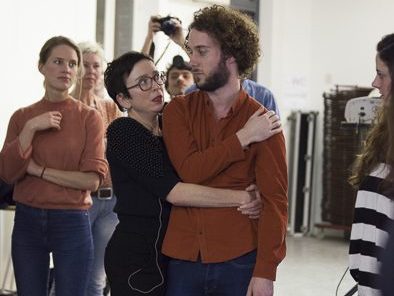
Peggy Olislaegers
Peggy Olislaegers (1966) was recently appointed Artistic Associate of Rambert, Britain’s national dance company, in London. Formally trained at the Tilburg Academy of Dance, Peggy Olislaegers has acquired broad experience both as a creator and as a dramaturge in dance, theatre and music productions. She has staged three-minute operas (Yo-Opera Festival 2007), co-created Kamp Holland (Theatre Company Orkater 2008) and staged and directed the work of composer Harry de Wit (Red Sound Festival 2009). Olislaegers initiated the European project Act Your Age (2011-2014) and was one of the leading mentors of the European project Performing Gender (2013-2015). Between 2010 and 2016, she was director of the Dutch Dance Festival/Nederlandse Dansdagen.
Anna Harris
Anna Harris (1977) was first trained as a doctor, then an anthropologist, in Australia. She now works as a researcher, studying technological medical practices, especially concerning questions of the sensory, embodiment and learning. She has held research posts at Maastricht University, the University of Exeter and the University of Melbourne, and has been a visiting researcher at the University of Amsterdam, McGill University, RMIT, Brocher Foundation and the Max Planck Institute for the History of Science. Her work appears in academic journals, newspapers, her own and others’ blogs and she has co-authored an upcoming book called CyberGenetics.
Training the Senses: The Performing Audience
Date: November 15th
Time: 7 – 9 PM
With: David Helbich and Rudi Laermans
Location: De Brandweer
How do we experience our body when we are at the theater, listen to a concert or attend a lecture? And how do we experience the entire body of an audience, in relation to ourselves and the work or the act? How do they all influence each other? We discipline ourselves, sit still, focus our hearing and view the performance. Yet, we are also distracted, fidgety, whispering to partners, and playing with candy wrappers. David Helbich’s long-term project Audience Observations plays with this interaction. By echoing this happenings, he demonstrates its performative qualities and thus ponders on the relationship between public spaces and audience participation.

David Helbich
David Helbich (b.1973) studied composition and philosophy in Amsterdam and Freiburg and lives and works in Brussels. His works take place on the theatre stage, on paper, online and in public spaces. They have been recently presented a.o. at Martin-Gropius-Bau (Berlin), Palais de Tokyo (Paris) and UnionDocs (New York). Helbich teaches at the International Summer Courses for New Music Darmstadt. He is the author of the bestselling photo books Belgian Solutions. A recurrent interest is the understanding of an audience as active individuals and the search for an opening up of experiences in an artistically restricted space.
Rudi Laermans
Rudi Laermans (b.1957) is professor of social theory a the University of Leuven, where he previously directed the Centre for Sociology of Culture. He is also involved in the theoretical program of the international dance school P.A.R.T.S. (Brussels) and was a regular guest lecturer at several art academies (a.o. in Rotterdam (the Netherlands), Malmö (Sweden) and Copenhagen (Denmark)). His current research focuses on the notion of the subject and the theme of agency, related to the concept of anonimity. In 2015 he published Moving Together, a study on contemporary dance.
Training the Senses: The Hearing Body
Date: October 4th
Time: 7 – 9 PM
With: Ana Tajadura-Jiménez and Paul Devens
Location: De Brandweer
Through our senses we form mental representations of our own body and the space and events around it. These mental representations have an impact on our emotional, social, and motor functioning. Ana Tajadura-Jiménez’s research focuses on showing that these mental representations are not fixed. Her project The Hearing Body investigates how sensory feedback changes people’s experiences of their body and the surrounding space. The project has shown that real-time alteration of walking sounds results in a changed perception of one’s represented body size, and contributes positively to a person’s walking behavior and emotional state. Sound artist Paul Devens is interested in ways in which sound conditions behave. He will offer an artistic interpretation of the subject with practical examples and sound experiments.

Ana Tajadura-Jiménez
Ana Tajadura-Jiménez (b. 1979) is a Ramón y Cajal research fellow at the Human Neuroscience Lab of the Universidad Loyola Andalucía (ULA) and an Honorary Research Associate at the Interaction Centre of the University College London (UCL). Tajadura-Jiménez has published extensively. Her work has been featured in the public media worldwide and presented at events in the London Science Museum, Wellcome Collection and the Being Human Festival. A highlight is the article on her project The Hearing Body that appeared in 2015 in the magazine New Scientist.
Paul Devens
Paul Devens (b.1965) studied at the Academy of Fine Arts and the Jan van Eyck Academy in Maastricht. Currently, he runs a research-based sound practice that links designed space to socio-historical backgrounds. His site-specific installations, architectonic interventions, music performances and CD- and vinyl albums address questions about value, preconception and codes in our civil society. His work has been installed, performed and screened in many places, including Diapason Gallery, New York (2011), Radio Art Festival, Tallinn (2011), Stimulating Synapse, EMAA, Nicosia (2015), Galerija Umjetnina, Split (2015), Hacking Habitat, Utrecht (2016), and bb15, Linz (2016).
Training the Senses: Touch, Taste and Embodied Knowing
Date: September 20th
Time: 7 – 9 PM
With: Roger Kneebone, Jozef Youssef and Dusia Kneebone
Location: De Brandweer
Touch and the ‘knowledge of the hand’ are essential to surgery, cooking, science and the arts. This interactive event will explore how experts from diverse backgrounds can share insights in unexpected ways. Roger Kneebone (surgeon and educator), Jozef Youssef (leading chef and gastronomic researcher) and Dusia Kneebone (marine geologist, art historian and hat maker) have been investigating how the culinary concept of ‘mise-en-place’ – how experts organise their work at the intersection between hands, tools and materials – can play out in different disciplines. They will illustrate some of the techniques they use, invite the audience to experience ‘hand knowledge’ and to contribute their own perspectives.

Roger Kneebone
Roger Kneebone (b. 1954) is a clinician and educationalist, who leads the Centre for Engagement and Simulation Science at Imperial College London and the Royal College of Music–Imperial Centre for Performance Science. Aa an academic and innovator, Kneebone has built an unorthodox and creative team of clinicians, computer scientists, design engineers, social scientists, historians, artists, craftsmen and performers. He is a Wellcome Trust Engagement Fellow and in 2011 became a National Teaching Fellow. Kneebone presents Countercurrent, a fortnightly iTunes podcast featuring 30-45-minute conversations with people whose interests and careers cross boundaries.
Dusia Kneebone
Dusia Kneebone (b. 1954) was trained as a marine geologist, but changed careers to become an art historian. She has engaged in handicrafts including lacemaking, sewing, knitting with colour, ceramics and hat-making. Dusia and Roger have collaborated for many years on the simulation-related engagement work, which he has pioneered at Imperial, integrating perspectives from clinical practice, science, art, craft and performance.
Jozef Youssef
Jozef Youssef (1981) is the creative force behind Kitchen Theory, a platform for experimental dining events and corporate sense explorations. The multi-sensory experiences are an extension of his research, carried out with a cross disciplinary team of collaborators including scientists, academics, designers, and artists into the fascinating areas of sensory perception and the future of Gastronomy. Prior to pursuing his passion for a more experimental form of gastronomy, Jozef worked in some of the London’s top restaurants and 5 star deluxe hotels including Helene Darroze at the Connaught and The Dorchester Hotel.
Training the Senses: Sensing Nature
Datum: 3 mei
Tijd: 19:00 – 21:00 uur
Met: Natasha Myers, Espen Sommer Eide en Thought Collider
Locatie: De Brandweer
We denken doorgaans aan natuur als iets dat buiten onszelf ligt, als een brede verwevenheid van dingen die stilletjes onze acties en observaties ondergaan. Maar wat als we onszelf als onderdeel zien van een omgeving die ons ervaart, net zo goed als deze door ons wordt ervaren? Wetenschappers vinden steeds meer bewijs van communicatienetwerken – relaties tussen planten, dieren en mensen – waarvan slechts enkelen van ons zich bewust zijn. Planten communiceren een aanval van rupsen aan andere planten, die daarop meteen chemisch verdedigingsgif produceren. Bomen communiceren met elkaar via hun wortels. Zelfs mensen lijken te communiceren in een zintuiglijke omgeving waaraan gelijktijdig ook planten en dieren deelnemen. Natasha Myers verkent de “affective ecologies” die vorm krijgen tussen planten en mensen. Espen Sommer Eide volgt het zintuiglijke gedrag van dieren. Thought Collider onderzoekt de relatie tussen geur en gedachteprocessen door moleculen te traceren die betrokken zijn bij de verspreiding van ziektes.

Natasha Myers
Natasha Myers (geb. 1974) is universitair docent aan de afdeling Anthropologie van York University, organisator van de werkgroep Politics of Evidence, directeur van het Plant Studies Collaboratory, co-organisator van Toronto’s Technoscience Salon en medeoprichter van het Write2Know Project. Haar eerste boek won de 2016 Robert K. Merton Prize van de American Sociological Association in de categorie Science, Knowledge and Technology. Rendering Life Molecular: Models, Modelers, and Excitable Matter (Duke UP, 2015) is een etnografie van een interdisciplinaire groep wetenschappers, die op moleculair niveau levende materie tot stand brengt. Myers’ huidige projecten omvatten onderzoek naar kunst en wetenschap op het gebied van zintuiglijke ervaringen en bewustzijn van planten, politieke en esthetische aspecten van tuinomheiningen in het tijdperk van klimaatverandering, en meest recentelijk een langlopende etnografie, die experimenteert met ecologisch bewustzijn in kunst met betrekking tot een eeuwenoude eikensavanne in een groot stadspark in Toronto. De film Becoming Sensor maakte zij samen met de prijswinnende danser en filmmaker Ayelen Liberona.
Espen Sommer Eide
Espen Sommer Eide (geb. 1972) is een muzikant en kunstenaar uit Tromsø, die momenteel in Bergen woont en werkt. Met de projecten Alog and Phonophani en een reeks aan werken uitgebracht op het label Rune Grammofon bevindt hij zich onder de meest prominente vertegenwoordigers van experimentele elektronische muziek uit Noorwegen. Hij had de solotentoonstellingen Dead Language Poetry in Bergen Kunsthall (2013) en The Weed Archive in Nikolaj Kunsthal (2015). Eide was ook betrokken bij een serie kunstprojecten rondom onderwerpen met betrekking tot de Barentsz- en poolregio’s van Noord-Noorwegen en Noord-Rusland, waaronder projecten in opdracht van het Neiden museum (Language Memory), de Universiteit van Tromsø (Material Vision – Silent Reading) en Dark Ecology (Sonic Acts).
Thought Collider
Thought Collider is een kunst-, design- en onderzoekspraktijk die metabolische processen, lichamen en ruimten onderzoekt. Mike Thompson (VK, 1981) en Susana Cámara Leret (SP, 1982) realiseren experimenten en procesgebaseerde kunstwerken die verschillende media omvatten, en waarin ervaringsgewijs inzichten worden opgedaan vanuit het anekdotische of het absurde: geleefde ervaringen die de norm bevragen door tegen de ding-achtige aard van organismen, objecten en plaatsen in te gaan. Hun werk krijgt gestalte in de vorm van actieve workshops, lezingen en tentoonstellingen met vaste samenwerkingspartners, waaronder het Laboratorium voor Entomologie van Wageningen University Research Centre en International Flavours & Fragrances.
Training the Senses: Mixing the Senses
Date: June 21st
Time: 7 – 9 PM
With: Jamie Ward and Christine Söffing
Location: De Brandweer
People with synesthesia experience the ordinary world in extraordinary ways. To some, each letter has its own distinct color; to others, images are directly related to taste, the sequence of numbers glide through space, or music is an animated spectacle. Scientists are struggling to find a good explanation for this mixing of the senses. This explanation may help for instance to discover in exploring ways in which blind people can be made to see again by using their other senses? In his research, Jamie Ward explores the workings of the synaesthetical mind and brain. Christine Söffing collects observations about synaesthesia and uses her own color-hearing-synesthesia and her color-scent synaesthesia for her work in experimental music and sound- and scent-installations.

Jamie Ward
Jamie Ward (1972) is a Professor of Cognitive Neuroscience at the University of Sussex. He is one of the world’s leading authorities on synesthesia and his research methods draw on experimental psychology and human neuroscience. He has published over 40 scientific papers and several books, the latest The Frog who croaked blue focuses on synesthesia and the mixing of senses. In addition, he has contributed to the public understanding of science through numerous talks and media coverage in newspapers, radio and television, including documentaries produced by the Discovery Channel and BBC Horizon.
Christine Söffing
Christine Söffing (1964) is an artist and synaesthete, based in Neu-Ulm, Germany. She is the artistic consultant and coordinator of the center for music & art, Ulm university and heads the group “experimental music and art” (EMU-Ensemble), in Ulm University since 2010. Söffing is giving workshops on artistic techniques and is working as a museum educator. She is involved in art workshops with synesthesia in children and adults since 1992, gives educational classes about synaesthesia for teachers and kindergarden teachers, gives lectures and talks on synaesthesia-conferences, collects observations about synaesthesia and uses her own color-hearing-synesthesia and her color-scent synaesthesia for her work in experimental music and sound- and scent-installations.
Training the Senses: The Sense of Movement
Date: April 19th
Time: 7 – 8 PM
With: Sara Wookey
Location: Marres, House for Contemporary Culture
Movement is the primary sense with which we explore our environment and give meaning to it. Building on her 20-year long experience, American choreographer Sara Wookey will engage in a public dialogue about the ways in which dancers and choreographers can provide new perspectives on space and movement. Wookey’s presentation will focus on the experiential being in the museum and aspects of the social and spatial conditions her work approaches and tests out. In addition, she will do a short experiential movement exercise.

Sara Wookey
Sara Wookey (1972) is a dancer, choreographer and creative professional currently based in London. She is the director of Wookey Works, a business offering creative services in collaboration with cultural organizations, educational institutions and government agencies. Wookey Works creates platforms of exchange and interaction between artists, institutions and cultural organizations in the UK and the US. Its mission is to contribute to the cultural landscape and to promote dance as a valuable art form. Parallel to her creative and professional practice, Wookey writes about economy, labor and value in the arts. She is founding director of reDANCE and a square dance caller.
Training the Senses: Painting as a Sensory Experience
Date: March 30th
Time: 7 – 9 PM
With: Gijs Frieling and Aukje Dekker
Location: Marres, Capucijnenstraat 98, Maastricht
Painting is such an obvious visual phenomenon that we rarely experience it as a call to sensory action. Instead of acting upon them, we read and try to understand paintings. We contemplate their themes and meanings. We discuss expression, gesture, emotion, and even the rules of representation. We don’t smell the paint, touch or lick it. We don’t allow our bodies to follow the brushstrokes. We rarely lie down and find new perspectives. We don’t imitate figures or animals in paintings. Paintings are thus radically emancipated from bodily movement or broad sensory perception. Why is that? Many will say that the body is not needed in the appreciation of painting. Today we are going to explore the opposite.

Gijs Frieling
Gijs Frieling (1966) was educated at the Rietveld academie (1986-1991) and the Rijksakademie (1994-1996) both in Amsterdam, He won the Royal prize for painting in 1994, the Prix de Rome in 1999 and the Cobra art prize in 2009. Frieling makes permanent and temporary wall paintings related to ornamental and decorative traditions. From 2006 – 2010 he was director and chief curator of W139 art space in Amsterdam. Currently he works as the art advisor for the Dutch Chief Government Architect. He is a supervisory board member of the Mondrian Fund and a member of the jury for the Dutch Royal prize for painting. Gijs Frieling is director of the colossal mural exhibition The Painted Bird in Marres.
Aukje Dekker
Aukje Dekker (1983) is a visual artist educated at the Rietveld Academy, the Sandberg (2002-2006) and the Central St Martins, London, UK (2006-2008). She is co-founder of the Eddy the Eagle Museum that features a subversive, fearless and outrageous collection of exhibitions and initiatives by all kinds of makers, artists and innocents. Her works were exhibited nationally and internationally in the UK, Germany, Russia and Japan. Her latest project Societeit Sexyland (2016) received funding from the Amsterdams Fonds Voor de Kunst.
Training the Senses: Talking Smell
Date: November 14th
Time: 7 – 9 PM
With: Saskia Wilson-Brown, Laura Speed and Emma Crebolder
Location: De Brandweer
Smells form part of our knowing, but they are elusive, often disappearing before they can be pinned down with speech. Scents can bring us strong memories of places and events, yet we find it hard to identify even quite strong smells, including bleach, rosemary and lavender. Research shows that people growing up in some non-western cultures have a more developed vocabulary for scents. And that Europeans find it easier to identify scents, the more they talk about these scents. What is it that makes scents so significant yet difficult to grasp? In this session, we will be identifying and expressing smells with director of the Institute for Art and Olfaction Saskia Wilson-Brown, reading about scent with poet Emma Crebolder and analyzing the relationship between smells and words with neuro-scientist Laura Speed.

Saskia Wilson-Brown
A producer and curator for visual art and film, Saskia Wilson-Brown directed the seminal Silver Lake Film Festival, ran international outreach and development for Al Gore’s Current TV, and has consulted on a number of arts, film and transmedia projects. In 2012, her interest in unorthodox practices led her to create The Institute for Art and Olfaction, a non-profit arts organization devoted to experimentation and education in perfumery.
She has worked with international institutions including the Pulitzer Foundation for the Arts, Getty, Hammer Museum, Natural History Museum, Danish Film Institute, and Watts Gallery. In 2013, she launched the Art and Olfaction Awards, an awards mechanism for independent, artisan and experimental perfumers. See also: artandolfaction.com
Emma Crebolder
After having lived in Tanzania for several years, Emma Crebolder studied African languages and Bantu studies at the universities of Leiden and Cologne, majoring in Swahili. In 1993 Crebolder was the first to become the official honorary poet of a Dutch-speaking city – the city of Venlo. She has published in literary journals such as De Gids, Maatstaf, Tirade and Het Liegend Konijn. She has been a regular staff member of Hollands Maandblad since 1994. Her publications include Zwerftaal (1995) and the trilogy Vergeten (2010), Vallen (2012) and Verzoenen (2014). In 2015 she received the Leo Herberghs Poetry Award. 2018 saw the release of Opsnuiven. See also: www.emmacrebolder.com
Laura Speed
Laura Speed is an experimental psychologist, currently working in the Department of Psychology at the University of York (UK). She completed her PhD in Experimental Psychology at University College London in 2014. Laura’s current work focuses on the interaction between language and perception, and the contextual factors that affect this interaction. Recently, she has been investigating the relationship between language and olfactory perception. She also explores how odor language and cognition recruit resources from other perceptual modalities to aid in meaning. Speed’s latest co-authored publications include An exception to mental simulation: No evidence for embodied odor language in Cognitive Science and Superior olfactory language and cognition in odor-color synaesthesia in Journal of Experimental Psychology: Human Perception and Performance.
Training the Senses: Skins
Date: October 10th
Time: 7 – 9 PM
With: Katja Heitmann
Location: De Brandweer
Our skin keeps us from seeping into the world. The skin holds our insides together, and stops the outside world from coming in. Even though we notice our skin only with damage or signs of age, it is a unique organ, a tender, stretchy, soft, and ultimately porous boundary. It is the elastic and adaptable place of encounter, a territory where the inner fluid breathing landscape of the bodyself meets the outer changeable environment that we share with other humans, animals, plants, rocks and water. We learn through cultural codes to conform and adapt our bodily experiences to what seems appropriate to specific situations. Katja Heitmann is interested in how to choreograph the skin. In this workshop, we will zoom into the skin as a physical element. What is the role of the skin for the body? What are the smallest movements underlying it?

Katja Heitmann
Katja Heitmann (1987, Hamburg/Germany) explores the intersections of dance, visual arts, performance and installation. With her team Katja creates performance-installations and theatrical exhibitions exploring the ambiguous question ‘Who (or what) moves who.’ In autumn 2019, Katja and her team created Museum Motus Mori at Marres, exposing the growing collection of endangered human movements. She gave a hint of what this will become in an extraordinary session of the Marres series Training the Senses session (Skins, October 2018). For an impression, click here. In 2016, Katja was awarded the Prize of the Dutch Dance Festival for outstanding choreographic talent.
Training the Senses: Silence
Date: September 12th
Time: 7 – 9 PM
With: Emilie Sitzia, Wiel Kusters, Joachim Junghanss and Kim Reijntjens
Location: De Brandweer
More than a lack of sound, silence can be meditative, transgressive, religious, bored, manipulative, rhythmical, reticent, aesthetic, respectful, rebellious and much more. In this workshop we will bring together a range of specialists to discuss and experiment with the audience their experience of silence. Drawing on various perspectives (such as philosophy, literature, visual arts, psychology, performance art, music, etc.) we will explore the impact of silence. We will test its boundaries, investigate its moods, and map its sensory forces in behavior, reflexes and sound.

Emilie Sitzia
Emilie Sitzia (1978) is an art and literature historian and art writer, and an associate professor at the Department of Arts and Literature at Maastricht University. She studied art history and literature in France, Germany, Finland and New Zealand. She regularly publishes on art, literature and museology in academic journals and recently published a book: Art in Literature, Literature in Art in 19th century France (Cambridge Scholars Publishing, 2012). Emilie’s interests include 19th century and modernist art and literature, museology, post-punk music, contemporary art, hiking, ice-skating, snorkeling, travelling, and eating chocolate.
Joachim Junghanss
Joachim Junghanss (1978) is director of the Conservatory in Maastricht. As a jazz pianist and composer he has collaborated with jazz legends like Dave Liebman, and as an educator he has taught at the Manhattan School of Music in New York. In 2015, Junghanss was appointed Dean and later Chief Academic Officer of the True School of Music in Mumbai. Junghanss holds both a Doctor of Musical Arts and a Master’s degree from the Manhattan School of Music. With a passion for social activism and a belief in the power of music to transform lives, Mr Junghanss launched the social entrepreneurship project Music Works, in West Africa in 2010. Junghanss participates in this workshop with a special performance of 4’33 by John Cage (1912-1992), an American composer and pioneer of indeterminacy in music, electroacoustic music, and non-standard use of musical instruments.
Wiel Kusters
Wiel Kusters ( 1947) is a Dutch poet, emeritus professor of literature at the University of Maastricht. Kusters diverse publications comprise In en onder het dorp, mijnwerkersleven in Limburg (2012), Zielverstand (2007) and Koolhaas’ dieren – over de biologie van een schrijver (2008). In collaboration with Benno Barnard and Huub Beurskens, he made the extensive anthology Nee, Plato, nee uit de poëzie van W.H. Auden (2009). In 2010, Kusters published a voluminous biography about poet Pierre Kemp: Pierre Kemp. Een leven and in 2014 Mijn versnipperd bestaan: een biografie van Kees Fens. His most recent publication is Leesjongen. verzamelde gedichten 1978-2017 (2017).
Kim Reijntjens
Kim Reijntjens (1993) lives and works in Maastricht. She recently graduated from the Academy of Fine Arts and Design Maastricht. Recent shows include her solo exhibition ‘The Everyman’ at Greylight Projects in Brussels, ‘Playtime 2017’ at the 11e K_nstvl___Festival of Experimental Art and ‘Who’s afraid of Virginia Woolf’ at the Mediahuis Eindhoven. Focusing on performance and theater within the realm of the visual arts, Reijntjens brings together elements of various disciplines in her work, including film, settings, props, sound and live-performance.
Training the Senses: Fieldnotes
Date: July 11th
Time: 6 – 8 PM
With: Joeri Bruyninckx, Kristen Haring and Ulrike Scholtes
Location: De Brandweer
Translation of experience into language is one of the most formidable challenges of learning. Thousands of cookbooks seem to explain how to prepare exquisite meals. Yet, their success greatly depends on the author’s resourcefulness in finding a language that makes readers understand exactly how to handle kitchen equipment, apply cutting techniques, make their timing precise and know what it is they should taste. By focusing on how sensory vocabularies are shared, and how sensory experience is recorded, this session on fieldnotes targets some of these large gaps in our understanding about learning. How do we record observations, share them with others and acquire a skill? This session explores techniques of recording and coding the sensory ranging from tracking bird sounds, drawing yoga positions to knitting in morse code.

Joeri Bruyninckx
Joeri Bruyninckx (1985) is Assistant Professor at the Department of Society Studies of Faculty of Art and Social Sciences in Maastricht. His research focuses on the relations between technology, sensory experience and scientific knowledge. Specifically, his work is concerned with the relation between modes of listening and scientific conceptions of auditory perception, and how these have been mobilized in modern knowledge practices. His book Listening in the Field: Recording and the Science of Birdsong, on the history of sound recording and listening as a scientific practice in field ornithology, has just been published with MIT Press.
Kristen Haring
Kristen Haring (1970) is a historian who studies science and technology in relationship to community and culture. Her book Ham Radio’s Technical Culture (MIT Press, 2007) examined amateur technical activities, particularly the hobby of two-way radio communication in the United States. Her teaching, most recently at Stanford University, focuses on hands-on lessons developed to enrich students’ understanding of history. Her research has been supported by, among others, the Stanford Humanities Center (Palo Alto, California), the Max Planck Institute for the History of Science (Berlin), and the Smithsonian Institution (Washington DC).
Ulrike Scholtes
Ulrike Scholtes (1986) is een sociaal wetenschapper die praktijken bestudeert waarin Ulrike Scholtes (1986) is social scientist and artistic researcher studying practices in which bodies train sensitivities. She studied somatic practices in Europe and Asia – such as somatic movement, yoga, pilates, butoh dance, mime, Laban Movement Analyses, various massage techniques – and became a practitioner and teacher. Deriving from this background in arts, social science and movement practices, she conducts her PhD research (University of Amsterdam) on techniques that articulate and mediate sensitivity and ways in which people employ sensory media to teach feeling.
Training the Senses: Walking
Date: June 13th
Time: 7 – 9 PM
With: Mami Izumi and Emmanuelle Wackerle
Location: De Brandweer
Much of human movement is on foot. We need our body to bring us to work, school and the supermarket. But there is also a long tradition that relates walking to thought. The peripatetic school in ancient Greece derived its name from its habit to converse while walking, and Kant’s daily tour became famous as ‘the philopher’s walk.’ Robert Walser presented his walking as a philosophical object, Baudelaire invented ‘the flaneur’ and Stanley Brouwn turned walking into art. More than the simple body movement of shifting our weight from one foot to another to move forward, walking, then, is a tool to create, reflect and meditate. But how do our predispositions, handicaps and environment influence our sensory perception to bring about this contemplative shift?

Mami Izumi
Mami Izumi (1987) joined Homura Tomoi Ballet Company in Japan in 2005. In 2012, she entered the professional dance program at SEAD dance academy in Austria. She was simultaneously selected to work in the BODHI project, where she danced in several pieces, including the piece Sens Interdit by Anton Lachky which has been performed since 2013. Izumi also created the solo Cotton, which premiered in Musica Sacra Festival in 2015. In 2017, she worked with Anton Lachky Company (BE) on the piece Cartoon, which is on international tour. Recently, Izumi is working on her personal and participatory project ‘Blind Walk.’
Emmanuelle Wackerle
Emmanuelle Wackerle is a London based artist and academic that uses performative strategies (live and mediated) and writing to explore the poetics of survival and resistance. Emmanuelle studied Photography and Fine Art, lectured at the Kent Institute of Art and design and was appointed reader in photography and relational practices in Visual Communication at the University for the Creative Arts in Farnham. Wackerle develops collaborative projects both at local and international levels, in academic and non academic contexts. Her work is in various collections, including the Bibliotheque Nationale de Paris, Tate Britain, V & A, and the Poetry Library in London.
Training the Senses: Space
Date: May 23rd
Time: 7 – 9 PM
With: archigraphus
Location: De Brandweer
What is space? We all have a conception of it, but if we compare notes, everyone views it differently. We perceive space usually as the volume that surrounds us. We have ways of looking at specific spaces, whose boundaries we can mark visually: a rectangular room, a round hall, a small gallery. And we have a general concept about space with psychological qualities: breathing space, space of movement. We think of spaces as comfortable, haunting, hollow, warm or smelly. And some of them we sense to be unwelcoming and eerie. Today’s session with archigraphus is aimed at our awareness of all these routines, feelings, and intuitions of space. How do we perceive space and what vocabulary do we use to measure and map it? This will be a thoroughly practical workshop: we’re going to walk, do exercises, execute commissions, and share footage of unknown perspectives: watch, taste and imagine space!

Archigraphus
Archigraphus is an interdisciplinary network for architecture and spatial concepts started by Markus Ulrich and Joachim Schmidt. Trained as architects their expertises space in building, urban space, landscaping, light and space installations, new media, photography, participation and didactics. Next to their main activities archigraphus develops excursions, city discoveries and interactive actions in urban space, which have been part of the cultural programs of the Institut français, Belgisches Haus Köln, the festival ‘across the borders’, EuRegionale 2008, region Aachen, city of Aachen, professional corporations like BDA, BDB, SRL … in Aachen, Brussels, Cologne, Lens, Liège, Lille, Mons, Paris, Reims, Sittard …
Training the Senses: Voices
Date: April 25th
Time: 7 – 9 PM
With: Roderik Povel, Bernadette Jansma and Poetry Slammers: Loukia Hadjiyianni, Charis Hoffman, Sophie Malon and Alfie Marsden Smedley
Location: De Brandweer
The voice is our most formidable instrument for expression. The voice speaks, sings, moans, coughs, stammers, hesitates, recites, and sneezes. It helps us to communicate ideas, connect to other people, vent our moods and enthusiasms, sing songs, recite poetry, and command armies. Yet, even though the voice is an unquestioned instrument with which we express our identity, it seems also alien to us. We listen to our own recorded voice as if it belongs to another person. We can hear voices of people that are absent. Unsuspected things can cause us to have a failing voice, one that stammers, falls silent, or is temporarily lost. With help of poetry slammers, a jazz vocalist and a neurologist, we will explore in this event the ways in which our voices constantly mediate between our inner selves and the external world.

Roderik Povel
RodRoderik Povel (1976) is a lecturer in Jazz Vocals at the Conservatorium Maastricht. He studied Jazz Vocals at the Royal Conservatoire of The Hague and Conservatorium Maastricht with, among others, Rachel Gould and Fay Claassen. As a vocalist and composer Povel likes to explore the progressive outskirts of the musical landscape and has a great predilection for the song from all eras and continents. As an actor, musical theatre maker and composer, he plays, writes and directs for companies including Het Laagland, De Noorderlingen (Groningen) and Toneelgroep Maastricht.
Bernadette M. Jansma
Bernadette Jansma (1965) is an expert in brain research and the psychology of language processing. She is professor and member of the “Brain and Language Group” at the University of Maastricht. Bernadette received her PhD in 1997 at the Max Planck Institute in Nijmegen on language production and was fellow at UCSD San Diego. Bernadette’s core research focuses on bridging the disciplines of perception and attention with language production, using advanced neuro-imaging to explore the ways in which outside stimuli affect speech.
Poetry Slam Maastricht
Poetry Slam Maastricht: Loukia Hadjiyianni, Charis Hoffman, Sophie Malon, Alfie Marsden Smedley. In a poetry slam, meaning literally to slam (throw, smash) with poetic words, poets battle each other in several rounds with poetry. In each round the slammers have 3 minutes to perform their poems. The content and the performance of the poetry are equally important. The challenge is to make the crowd enthusiastic. The poetry slammers have the senses as a theme fort his event.
Training the Senses: The Wild
Date: March 21st
Time: 7 – 9 PM
With: Christopher Fitch and Mattijs van de Port
Location: De Brandweer
Language: English spoken
We tend to see the wild as something that belongs to deep nature: unbridled growth, primary impulses, animal behavior. Bears, wolves, lions are wild. And humans see it as their task to tame them. Animals are captured and brought to nature reserves and zoos, wild forests are developed as national parks. We create a wide gulf between what is human and what is ‘nature’, only to be uncomfortably bridged when we, as result of war, deprivation or sheer madness are confronted with the wild in ourselves or in the people around us. In the meantime, we also need as Henry David Thoreau passionately argued ‘the tonic of wildness.’ The wilderness reminds us of beautiful worlds that are remote and exotic, full of mysteries and unanswered questions. It also brings us into contact with the uncontrolled wildness that lurks deep inside us. In the context of the Marres exhibition Dreaming Awake, author Christopher Fitch and anthropologist Mattijs van der Port evoke, with the help of soundscapes and filmclips, the wild in our environment and ourselves.

Mattijs van de Port
Mattijs van de Port (1961) is a visual anthropologist working at the University of Amsterdam and the VU University. At the latter institution he holds a chair in the study of Popular Religiosity. He performed research in Serbia, and since 2001 in Brazil. He is the author of monographs on Gypsy musicians and their Serbian customers (1998), contract killings in the Netherlands (2003), and global encounters on the threshold of candomblé temples in Bahia, Brazil (2011). His first documentary is called Saborear Frutas Brasileiras (on eating Bahian fruits). The essay film The Possibility of Spirits, using footage from 6 years of filming in Bahia, was completed in 2016.
Chris Fort
Christopher Fitch (1988) obtained a BA in Geography and Science Communication from Royal Holloway, University of London. He is the author of the book Atlas of Untamed Place, nominated for an Edward Stanford Travel Writing Award. In the same year he contributed to the Wellcome Collection exhibition A Museum of Modern Nature. From 2014 he is Senior staff writer at Geographical, the official magazine of the Royal Geographical Society (with IBG). His contributions include stories on London becoming the world’s first National Park City, and the de-extinction movement. His current thematic interests include the preservation of modern wildernesses, enhancing biodiversity, large-scale rewilding, long-term sustainable/holistic living, and the role of ethnic and gender equality in preventing the worst impacts of climate change. Moreover, he is keen to explore how aural and immersive art can bring sensory experiences of the wild into society’s sanitized spaces, as poignant reminders of how far removed modern humans are from their biological and ecological past.
Training The Senses: Building Music
Time: 7 – 9 PM
With: Espen Sommer Eide, Mari Kvien Brunvoll, Martin Taxt
Location: Marres, House for Contemporary Culture
Language: English spoken
Inspired by the novel The Waves by Virginia Woolf, the Norwegian composer Espen Sommer Eide makes an eponymous spatial music album for Marres, which will ‘live’ inside the house during the exhibition, and will be printed on vinyl. In the year preceding the opening of The Waves, Sommer Eide recorded in the different rooms of Marres in the night, in collaboration with the voice of Mari Kvien Brunvoll, and Martin Taxt on microtonal tuba. Jochem Vanden Ecker was invited to capture the entire process. With these recordings, Sommer Eide composes a series of works that succeed each other in space and to be listening to either separately or jointly. In taking this Training The Senses session Sommer Eide, Kvien Brunvoll and Taxt guide you through the entire creation of the exhibition.
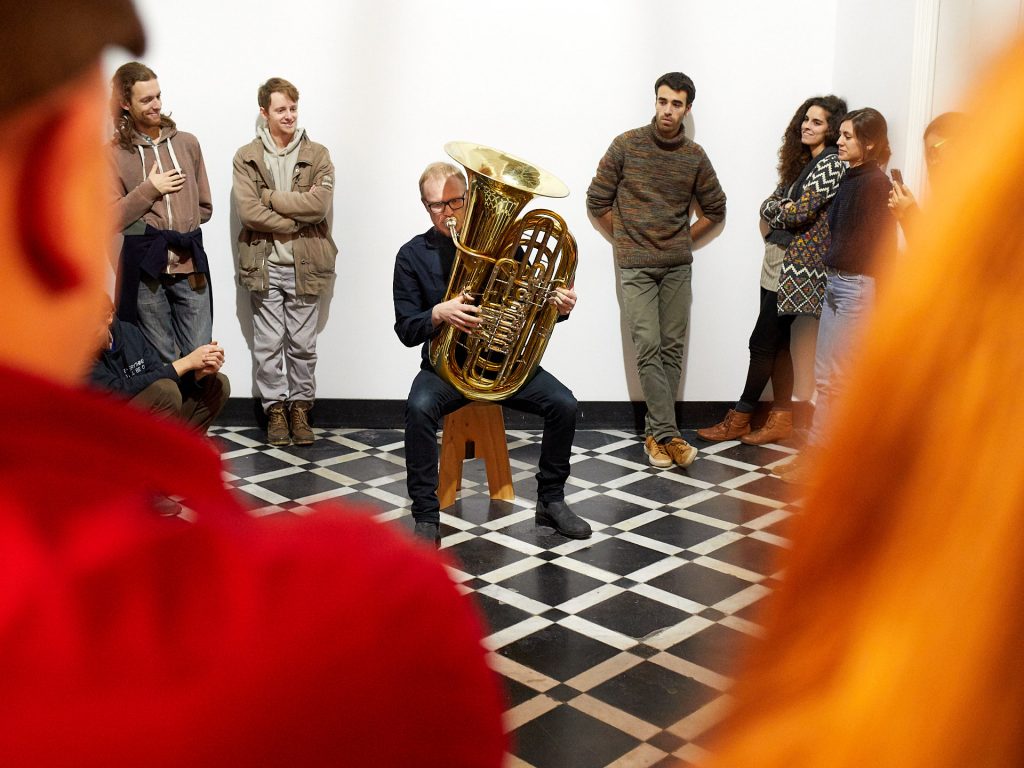
Espen Sommer Eide
Espen Sommer Eide (1972) is a composer and artist based in Bergen, Norway. Using music and sound as both method and medium, his artistic practice involves long term engagement with specific landscapes, archives, languages, and rhythms, with an experimental approach to local and embodied knowledge. In addition to installation and performances, he has been a prominent representative of experimental electronic music from Norway, with main projects Alog and Phonophani, and a string of releases on the labels such as Rune Grammofon, FatCat and Hubro.
Marie Kvien Brunvoll
Mari Kvien Brunvoll (1984), is one of Norway’s leading improvisers in song and various eclectic instruments. A graduate of Grieg Academy in Bergen, Brunvoll has performed solo and in groups at some of Europe’s best jazz clubs and festivals and released twisted albums on labels like Jazzland Recordings and Hubro. Mari Kvien Brunvoll is also part of the trio Building Instrument.
Martin Taxt
Martin Taxt (1981), born in Trondheim, Norway, finished his studies at the Academy of Music in Oslo and CNSMDP in Paris in 2006. Since then he has established himself in the international experimental music scene. He is releasing albums and touring with groups such as Koboku Senjû and Microtub. Since 2013 he has been a part of the awardwinning art collective Verdensteatret.
Training The Senses: Smell Dating
Time: 7 – 9 PM
With: Klara Ravat and Anna D’Errico
Location: De Brandweer
Language: English spoken
People are unaware of the power of their olfactory system in making life changing decisions. Smell is crucial in determining good food from bad food and detecting dangerous gases, but it also plays an essential role in choosing a partner. In this smell dating session, we will explore body odors. The smells of the participants are collected after an aerobics session. After being put in glass jars and numbered, the samples are passed around enabling everyone to find their match. In the meantime, participants converse with smell artist Klara Ravat and neurologist Anna D’Errico about the attraction of smells and the relationship between our brain, nose and hormonal system. What happens after this session, is up to you…

Training The Senses: Sounding Bodies
Date: September 5th
Time: 7 – 9 PM
With: Aart Strootman and Genevieve Murphy
Location: De Brandweer
Language: English spoken
We are used to defining music as the product of bodies and instruments. As we train our body to play and listen, our bodies train the instrument to produce sound. The idea of mastery in music lies in the seamless match between body and instrument. We rarely discuss the requirements of a seamless match, or how it can be achieved, which means we need to search for the handicaps and exceptions to experience it.
What if the body does not function well enough to train the instrument, the instrument needs specific care, or different ways of playing it can affect the sounds of the instrument? What if we take the body itself as an instrument, tune it, and join it with other bodies? These questions are central at the first Training the Senses Fall Session, Sounding Bodies, with Aart Strootman and Genevieve Murphy.
Podcast
Genevieve Murphy
Genevieve Murphy (1988, Scotland) combines visual art performances with contemporary classical music, her concepts frequently based on psychology and disability. After having studied piano and composition at the Royal Conservatoire of Glasgow, Royal Birmingham Conservatoire and The Royal Conservatory of The Hague, she has collaborated and performed with free improvisers and choreographers as well as toured internationally with London based visual artist Martin Creed. Murphy became a member of Standplaats Utrecht (2018), a performance/interdisciplinary platform supported by a number of companies including Utrecht SPRING Festival and Het Huis Utrecht. On September 7th 2019, the composition They Move Differently Here, was commissioned by and premiered at the Gaudeamus Muziekweek in Utrecht.
Aart Strootman
Guitarist and composer Aart Strootman (1987) is a pioneer on the stage of contemporary music. He studied classical guitar, music theory and musicology, and currently is a PhD candidate at the University of Leiden via the DocArtes program. He researches the physical modifications of instruments to find new sounds, starting from the acoustic foundation. Aart teaches music history, (advanced) ear training, analysis, philosophy and performance studies at the Fontys School of Arts in Tilburg. As a result of winning the Gaudeamus Award in 2017, he wrote W.A.L.L and made custom instruments for it. The premiere of this piece will take place on the 4th of September 2019. Strootman received the prestigious Matthijs Vermeulen Prize at the Gaudeamus Music Week in 2019 for his work Shambling Emerge – after after party.
Training the Senses: Sounds of Homes & Cities
Date: June 12th
Time: 7 – 9 PM
With: Elise ‘t Hart, Soundtrackcity, Annelies Jacobs, Marc Alberto
Location: De Brandweer
Language: English spoken
Sounds of Homes & Cities
What sounds frame our daily existence?
We register our daily existence as visual. Yet, our orientation is just as much dependent on sound. We listen carefully to sounds of cars, bicycles, busses, and subways when we navigate through the city, and we listen perhaps even more subtly to sound of coffeepots, laundry machines and moving chairs when we’re at home. These sounds are so intimately known to us, that they don’t reach our consciousness. Yet, when they fall away, we miss something. In this session, Marres explores the sounds of the everyday with artist Elise ‘t Hart, researcher Annelies Jacobs, artist initiative Soundtrackcity and musician Marc Albert.

Elise ‘t Hart
Alberto
Elise ‘t Hart is a sound artist who combines music, sound and visual arts. In 2013, she founded The Institute for Household Noise. It was the beginning of a large collection of domestic sounds that she registers, manipulates, imitates, imagines and describes: a creaking floor, a buzzing fridge, a ticking heater, the clattering shower water, a blowing extractor hood, chirping birds or a ringing doorbell.‘t Hart also visualizes sounds in films, photos, and installations. People interested in her collection can purchase a weekly sound subscription.
Annelies Jacobs
Trained as architect, software designer, and social scientist, Annelies Jacobs is interested in the relationship between (built) environment, technology, social practices, and cultural beliefs. She draws upon urban and environmental history and sound studies to explore the relationships between urban sound, the appropriation of public space and perceptions of city life. Her research has been used for an interactive sound installation in the Amsterdam Museum.
Soundtrackcity
Soundtrackcity is the name under which Renate Zentschnig and Michiel Huijsman have been making, producing and distributing sound art since 2009. The projects of Soundtrackcity mark joint explorations of the public sonic space, under the guiding idea that participants engage with the city through listening. Soundtrackcity collaborates with local initiatives and institutions, including the Amsterdam Public Library. Examples of their projects are Urban Sound Lab, Sonic West and Crowdsourcing Mr. Visserplein.
Marc Alberto
Marc Alberto is in variable order a composer, saxophonist, and sound artist. From a characteristic combination of tradition in media and technology combined with experimental techniques and processes, his fascination with timbre and texture becomes very clear.
Training the Senses: Authentic Movement
Date: May 30th
Time: 10:30 AM – 1:30 PM
With: Alexis Blake
Location: Theater aan het Vrijthof
Language: English spoken
Special Workshop – Max 15 people.
Do you trust your body?
Do you know where in your body you store your different emotions?
What is your nervous system telling you?
Do you allow your body to process your daily thoughts and past traumas?
What is your body communicating to you that your mind refuses to listen to?
In this workshop Alexis Blake aims to guide our bodies to a state where they can move and respond honestly without filters. In doing so, we will be able to locate emotions held within the body and move towards creating space for expression and reflection. The workshop is part of the artist’s large-scale project, Anthology of Anger. In this project, she explores how culture, history and DNA influences one’s expression or suppression of emotions versus the body’s authentic movements of these emotions.

Alexis Blake
Alexis Blake has a multidisciplinary practice in which visual art, movement and performance are combined. She explores the way in which the body is represented and is treated as an archive, which she then critically examines, disrupts and re-negotiates. Her work directly engages with the representation and the subjectification of the female body whilst activating it as a site and an agent for socio-political change. In this process, she creates spaces in which systems of representation and power can be exposed and avoided.
Blake received an MA in Fine Art from Piet Zwart Institute, Rotterdam (2007) and she was an artist-in-residence at the Delfina Foundation, London (2016) and at the Jan van Eyck Academie, Maastricht (2014–15). Her work has been presented at numerous locations, such as: Riga Biennial 2018, BOZAR (Brussels), Performatik19 (Brussels), Rijksmuseum (Amsterdam), British Museum, Block Universe Performance Festival (London), ExtraCity (Antwerp) and La Triennale di Milano XXI (Milan).

Training the Senses: Beyond Taste
Date: May 29th
Time: 7 – 9 PM
With: Katja Gruijters and ArtEZ Product Design Arnhem
Location: De Brandweer
Language: English spoken
Can we overcome the boundaries of taste?
In this session, we explore the associations and boundaries of the sensory world through a multitude of questions. How do we store sensory impulses in our memory archive? What is the meaning of sensory overload? Are food sensations comparable to other sensations, including for instance those of sex?
Supervised by food designer Katja Gruijters, students at ArtEZ Product Design Arnhem address these and other questions in a spectacular hands-on evening full of experiences.

Katja Gruijters
After studying at the Design Academy Eindhoven in the Netherlands, Katja Gruijters decided to specialize in food and drink design. Since 2001, she has worked in her own studio in Amsterdam, designing food experiments, concepts and products. Katja makes use of long-term trends based on human desires. She has developed projects for companies in the Netherlands and elsewhere – Iglo, Mora, Albron PP, RBV Leaf, Heinz, Seafood Partners, Sara Lee DE, Riedel Drinks, De Bijenkorf, Sorbo, Unipro and Servex. Gruijters developed a new course called Food Design and Innovation at the HAS Den Bosch agricultural college in the Netherlands, where she also teaches.
Additionally, she writes a monthly column about her vision on food design in Food Magazine, a trade journal for the Dutch food industry.

Training the Senses: Motus Mori
Date: 17 April
Time: 7 – 9 PM
With: Katja Heitmann
Location: De Brandweer
How can we preserve movements that are in danger of extinction?
A choreography for the collarbone, a dance of belly button, belly fat and rib cage, the anatomy of a sigh. In September 2019, the German choreographer Katja Heitmann (1987) opens Museum Motus Mori with her dancers: a museum for the endangered movements. For six weeks, five hours a day, ten dancers take up the challenge of preserving dying movements. Every day they translate these into their bodies through choreographic sculptures. They zoom in on human motor skills and unravel them into anatomical patterns, structures, seemingly perpetual loops.
In this training session they take us into the process of creating this continuous moving exhibition.

Katja Heitmann
Katja Heitmann (1987, Hamburg/Germany) explores the intersections of dance, visual arts, performance and installation. With her team Katja creates performance-installations and theatrical exhibitions exploring the ambiguous question ‘Who (or what) moves who.’ In autumn 2019, Katja and her team created Museum Motus Mori at Marres, exposing the growing collection of endangered human movements. She gave a hint of what this will become in an extraordinary session of the Marres series Training the Senses session (Skins, October 2018). For an impression, click here. In 2016, Katja was awarded the Prize of the Dutch Dance Festival for outstanding choreographic talent.

Training the Senses: Staging an Ordinary Day
Date: May 1st T
ime: 7 – 9 PM
With: Sander Breure and Witte van Hulzen Location: Breulingstraat 18, 6211 SC Maastricht
Workshop – Max participants: 35
Staging an Ordinary Day
What is an everyday experience? Can it be grasped into text or theater? The artist duo Sander Breure and Witte van Hulzen will give a presentation about their performance at Utrecht Central Station titled How can we know the dancer from the dance?. This presentation will provide a short training for participants to go outside and make their own detailed observations of theatrical events in everyday life. The results of these observations, in text, video and performances, will be shared afterwards. Breure & Van Hulzen

Sander Breure & Witte van Hulzen
Sander Breure and Witte van Hulzen both live and work in Amsterdam. Breure graduated from the Royal Conservatory, The Hague, and Van Hulzen graduated from ArtEZ in Arnhem. Their multidisciplinary work is based on research about body language and its interpretation. They are represented by tegenboschvanvreden, Amsterdam. In the spring of 2019 the solo exhibition The Floor is Lava was on view at Marres.

Training the Senses: Human Experience
Date:
7 April 2022
Time:
19:00 – 21:00
With:
Anna Nina Runa Essendrop
Location:
De Brandweerkantine
Capucijnenstraat 21, Maastricht
Language:
English
Fee:
€5 (regular), €2.50 (students)
Please note: this workshop will be recorded via photography and film
A coproduction with iii
Human Experience is a physical, immersive live action role play (LARP) about the sensations we get from movement, touch and sensory experience. The LARP is played by two groups. One group is called Ancient Consciousnesses. They are floating minds that have existed in our world forever and understand basic concepts (like the concept of a human or a flower), but they have never tried to be physically in contact with anything. For the duration of the play, they materialize into human bodies in order to carefully experience the nuances in the way humans move and sense and to try to understand what it is like to be human and experience through a body.
This is where the second group enters the story. This group consists of the audience that is part of the fiction of the LARP. They are there to aid the Ancient Consciousnesses in their exploration by showing movements or describing sensations to them. The purpose of this LARP is to create a sensory awareness of what it is to experience everything anew.

Nina Runa Essendrop
Nina Runa Essendrop is a Danish artist and designer of LARPs with a focus on movement, sensory experiences and the meaning of physical action. She is an active player in the Nordic LARP community. She has designed and produced LARPS, freeform games, workshops, performances and interactive theatre at, among others, Transmediale 2016 (Berlin, Germany), Momentum: The 8th Nordic Biennial of Contemporary Art (Moss, Norway), Athens Biennale 2018 (Athens, Greece), The Flea Theatre (New York, US), Dome of Visions (Århus, Denmark) and Ormston House (Limerick, Ireland).
Training the Senses: Operation Mango
Date:
17 May 2022
Time:
19:00 – 21:00
With:
Anna Harris, Kaisu Koski, Bart Schrier
Location:
De Brandweerkantine
Capucijnenstraat 21, Maastricht
Language:
English
Costs:
€5 (regular), €2.50 (students)
Please note: this workshop will be recorded via photography and film
Today, medical students practice their dissecting, stitching and carving skills on highly advanced materials and protheses. In the past, they had to work with simpler materials. In this context, fruit was both practically and metaphorically essential: oranges were used to learn how to inject and a peach served as a children’s skin.
In the workshop Operation Mango you will pick up the scalpel yourself and get started with these materials and techniques. Under the guidance of physician-anthropologist Anna Harris, surgeon Bart Schrier and artist Kaisu Koski, you will gain insight into a series of surgical practices. In turn, by attending closely to the fruit’s sensory qualities, we may discover comparative vocabularies that doctors might never have thought of before. A first-aid kit is provided!
Listen to the podcast episode here (or on Apple Podcast).

Anna Harris
Anna Harris first worked as a doctor in Australia and the UK before learning anthropology and turning her ethnographic gaze back to the medical profession. Missing the hands-on element of clinical practice in academia, her work endeavors to find creative and practically engaging methods for studying questions of embodiment, learning, materiality and infrastructures of medical practice. She currently works with a great team of anthropologists and historians at Maastricht University on the European Research Council funded project Making Clinical Sense.
Kaisu Koski
Kaisu Koski is a cross-disciplinary artist and humanities scholar with a background in performance and screen-based media. She is an Associate Professor of Art and Design at Sheffield Hallam University. Kaisu’s work explores climate crisis, human-nonhuman relationships, and empathy. She has conducted research fellowships in various medical schools and created films for medical curricula. Her work has been exhibited and performed in multiple gallery shows and theaters and received awards in the film festival circuit.
Bart Schrier
Bart Schrier studied medicine in Groningen. After his military service he started training as a urologist at the Isala clinics in Zwolle and the Radboud Umc in Nijmegen and studied surgery for two years at the Canisius Wilhelmina Hospital in Nijmegen. After graduating, he went to work at the Jeroen Bosch Hospital in ‘s-Hertogenbosch. He holds a PhD in bladder cancer and has been named best urologist in the Netherlands several times. He now provides national and international operation training and guides medical specialists during robot operations.
Training the Senses: Catching Your Eye
Date:
30 June 2022
Time:
19:00 – 21:00
With:
Rachel Warr and Will Houstoun
Location:
De Brandweerkantine
Capucijnenstraat 21, Maastricht
Language:
English
Costs:
€5 (regular), €2.50 (students)
Puppeteers and magicians are masters in directing your attention. They make you focus on one part of their performance and lose sight of the rest. This shows their skillful mastery of techniques, but also tells us something about our own way of perceiving.
In this session, we explore both angles. Puppetry director Rachel Warr and close-up magician Will Houstoun will share techniques they use to steer our perception and create illusions. In addition, we question the ways in which we focus and divide attention in relation to the outside world.
Listen to the podcast episode here (or on Apple Podcast).

Rachel Warr
Rachel Warr is a puppetry director and dramaturg from the United Kingdom. Her work has been presented at venues across the UK from The Barbican Centre to Little Angel Theatre and at festivals in Singapore, Turkey, Czech Republic, Germany, France and Canada. Warr is engaged in a number of cross discipline research projects. These include projects with surgical teams and clinicians comparing skillsets of medical doctors and puppeteers; with a bio-scientist and magician exploring ways of communicating embodied knowledge and a fashion designer on a runway show with 1.9-meter-tall puppets.
Will Houstoun
Will Houstoun is a Member of The Inner Magic Circle and winner of The European Magic Championships. He has a PhD in magic history as well as a Literary Fellowship from The Academy of Magical Arts in Los Angeles. His one-man show Dr Houstoun’s Conjuring leaves audiences astonished by the magic they have seen and fascinated by the stories they have heard. Houstoun is Magician in Residence at the Royal College of Music/Imperial College London Centre for Performance Science, a Research Associate in Imperial College’s Faculty of Medicine, and a Research Fellow at The Victoria and Albert Museum Research Institute.
Training the Senses: Social distancing
Date:
23 September 2020
Time:
19:00 – 21:00
With:
Suze Milius and Maribel Ortega
Location:
to be confirmed
Language:
English
Costs:
€5 (regular), €2.50 (students)
Online ticket sale only, it is not possible to buy a ticket at the door at the night of the event
In March 2020, social distancing rudely and unannounced entered our ‘new normal’ and radically changed our way of interacting with each other. But in fact, this concept has been part of our codes of physical behavior for a long time. In this session you will explore what those codes entail and what they do: how near can we come to another body? Where are we allowed to touch? And how do we read the body language of others? We’ll investigate the changing manners in our society with director Suze Milius, coach and mentor Maribel Ortega and a performer.

Maribel Ortega
Maribel Ortega is a professional coach, mentor, keynote speaker and confidence ambassador. Originally from the Dominican Republic, Maribel has lived in Germany for 18 years. She is fascinated about culture, leadership, body language, and psychology and is especially interested in emotional and cultural intelligence. She has a master’s degree in philology – the study of language preserved in written sources – from the University of Erlangen, is a certified neuroleadership coach and a business cultural trainer. Ortega is currently pursuing the Executive Master of Business Administration (EMBA) program at Quantic School of Business and Technology.
Suze Milius
The plays by director Suze Milius are characterized by awkward behavior and uncomfortable encounters. With her love for absurd humor and stylized aesthetics, she puts seemingly mundane worlds under tension. She is currently working on a project based on fables about human and animal behavior.
Milius studied directing at the Drama Academy in Maastricht. Her graduation performance Collection (2012) was nominated for the Ton Lutz Prize (NL). In 2018 she won the director’s prize for exceptional talent: the Erik Vos-prijs. With Stefan Jakiela, Milius founded House Crying Yellow Tears, an art house in Brussels. She made performances for de Brakke Grond, Desingel Antwerp, Kaaitheater Brussels, Festival Cement, Orkater, Toneelgroep Maastricht, Productiehuis Rotterdam and Het Zuidelijk Toneel.
Training the Senses: Modes of Imagination
Date:
Wednesday 27 October 2021
Time:
19:00 – 21:00
With:
Roel Heremans, Louis Schreel
Location:
De Brandweerkantine
Capucijnenstraat 21, Maastricht
Language:
English
Fee:
€5 (regular), €2.50 (students)
Please note: this workshop will be recorded via photography and film
Our first step in making the possible real is to imagine it. Our imagination has the peculiar power to constantly create, invent or enable new possibilities. By virtue of this peculiar power, we can all lead a kind of double life: an actual life led by our ego in a real and shared world, and an invented live led by our imaginary ego in our own private, fictive world. How do we invent these new possibilities, questions, and lives? And what in the world is imagination exactly?
For this Training the Senses-workshop, artist Roel Heremans and philosopher Louis Schreel join forces to explore different modalities of imagination. During the event Roel will present some of his interactive imagination compositions and you will explore the blurry borders between the real and the unreal. Together, they will dive into the phenomenology and neurophysiology of aesthetic experience, to see how the senses, emotion, and imagination together animate the mind.

Roel Heremans
Roel Heremans is a transdisciplinary artist working with sound, visualization, and neurofeedback. In most of his works he composes fragments of audio that trigger the imagination of visitors in order to create immersive group experiences. Visitors simultaneously become actors, witnesses, performers and reenactors of mental and physical processes of thought and movement, where collective performances encounter individual reactions and vice versa. By activating people in this way, Heremans generates a simulation of the contemporary world. Past exhibitions of his work include, amongst others, S.M.A.K, Ghent (B), Sale Docks, Venice (IT), De Brakke Grond, Amsterdam (NL).
Louis Schreel
Louis Schreel works and teaches at the Department of Philosophy and Moral Sciences at Ghent University. His research focuses on the relation between life and mind, the origins of intentionality in bodily movement and affectivity, and the relation between metabolism, cognition and the emergence of self. He obtained his PhD in Philosophy and concurrently with his doctoral research he has also been a visiting lecturer in philosophy at KISD – Köln International School of Design and Heinrich Heine University Düsseldorf.
Training the Senses: The Body as a Score
Date:
Saturday 25 September 2021
Time:
10:00 – 13:00
With:
Yun Ingrid Lee, Karina Dukalska
Location:
De Brandweerkantine
Capucijnenstraat 21, Maastricht
Language:
English
Costs:
€5 (regular), €2.50 (students)
A coproduction with : WORM Rotterdam and iii
Scores are used in music, dance and performing arts as a way of recording or triggering compositions and choreographies. They can be read, interpreted and performed by the artists themselves, or by other performers. This workshop will look at how to make and read different kinds of scores using your body and voice.
We’ll be diving into topics such as: how can you develop a notation system that both captures what you want to communicate and can easily be interpreted by performers? What elements of a performance do we choose to include and leave out in a score?
In The Body as a Score-workshop we’ll be using text, speech, and graphic elements in our scores, and our bodies and voices as instruments. Please bring your own texts to work with (a recipe, a poem, a novel, etc.). No previous experience in any form of score-making is required.

Yun Lee
Yun Lee is an artist and curator mostly working with text, sound, scores and performance. Much of their work is concerned with how our filtered ways of sensing both limit and extend the ways we understand, categorize, archive and compose the world. Yun curates the lecture-performance series BARTALK in The Hague and organizes workshops at the intersections of art, music, and technology at iii (the instrument inventors initiative).
Karina Dukalska
Karina Dukalska is a Rotterdam-based graphic designer, researcher and dance-educator. She particularly enjoys working on projects that focus on cultural diversity, differences in perspective and social awareness. Her fascination with movement, rhythm and fluidity can be found in a wide range of projects, including typography, editorials, books, branding, event art-direction and teaching.
Training the Senses: Echo location and multi-sensory interactions
Date:
23 November 2022
Time:
19:00 – 21:00
With:
Britt Hatzius & Thomas Tajo
Location:
Marres, House for Contemporary Culture
Capucijnenstraat 98, Maastricht
Language:
English
Max participants:
12
Costs:
€5 (regular), €2.50 (students)
During this workshop we will make photos and video recordings.
In this two-hour workshop, both sighted and non-sighted participants are invited to join us in an exploration of our non-visual senses. It will include an introduction to Echolocation (or Click Sonar), but more broadly consider how we collectively experience both each other and the spatial environment through our auditory and tactile senses. The idea is to try and articulate what these experiences ‘feel like’, what they ‘do’ to us or what they might trigger in us individually. Through exercises and intuitive explorations, we might discover potentially under-used or underdeveloped sensorial skills for use in our everyday lives.
Listen to the podcast episode here (or on Apple Podcast).

Maastricht Tracks

Maastricht Tracks takes you on a trip to some very special places in the middle of the city. They are invisible to most visitors, but less than an arm’s length away. Take this active and slightly absurd audiotour to travel through a parallel universe of senses and imagination.

This audio walk by artist David Helbich is a collection of eleven audio tracks for the ears, the eyes and the rest of the body, performed in collaboration between you and the city. Maastricht Tracks consists of a book and eleven audio files that give the participant a series of instructions. Maastricht Tracks is €14,95 and only available in English.

Wanderbuch

Tred into the footsteps of the traveling craftsman with this Wanderbuch, connected to the almost forgotten German tradition of the Wanderschaft. This walk takes you through the Dutch-German border region, where you will become acquainted with local techniques and traditions. Discover unique stories along the way that takes you to the Catharina chapel, Oud Lemiers and the Benedictine monastery Mamelis.

A Guide for the Senses

This subjective, transverse and associative A Guide for the Senses maps a series of special scents, sounds and flavors in the city: from a wide view over the ENCI-quarry to a greasy snack at the market, a waiting room filled with art and more.
Composer Hanne Hagenaars invited local artists and writers to map out a series of rare sensual experiences, such as Joep Vossebeld, Keetje Mans, Cécile Narinx and Kiki Niesten. A Guide for the Senses is available in both Dutch and English for €19,95.

Scent walk: In Search Of Lost Time

Our memories are strongly linked to scent that can instantly bring us back to a different time and place: a former lover, the house of your grandmother or the gym at your old school. Could we also evoke the past of a city by scent?

Visual artist Sanne Vaassen designed the walk In Search of Lost Time, that takes you back to the history of the city of Maastricht. During this walk you will discover parts of the city’s past by smelling herbs, flowers, and extracts. The detailled guide consists of a map and a set of scent sticks that you can take on your trip.
In Search of Lost Time costs 14,95 and is only available in Dutch.

Training the Senses: Performing work
This event has been postponed from October 5 to November 9.
Date:
9 November 2022
Time:
19.00 – 21.00 uur
With:
Philippine Hoegen, Nirav Christophe and Carolien Stikker
Location:
De Brandweerkantine, Capucijnenstraat 21 Maastricht
Language:
English & Dutch
Max participants:
20
A lawyer who is defending her client, and an instrument maker who is tuning a violin will most probably refer to their activity as work, while the musician playing the same violin or a belly dancer taking the stage will probably refer to their work as performance. Most of us would not find it hard to see the performance of the latter two as work, but we might not have considered that most of the work we all do is in some way a performance, and that we tend to call upon different versions of ourselves to perform that work.
This Training the Senses session we will train the sense of ourselves, looking at who we are when we perform work. It is devoted to the working practices and gestures of everybody and anybody in whatever form of work they do. In the session, we will search for, and give the stage to, one or more of our working selves, using techniques including voice dialogue and polyphony, performative exercises, embodiment and interaction. In the course of the session, we will pay special attention to the collection, storing and sharing of these selves in writing, image and movement.

Philippine Hoegen
Philippine Hoegen is a visual artist living in Brussels. Recent activities include a research residency and series of presentations at Kunsthal Gent titled What is Work? (03/2021-04/2022); the publication In these circumstances: On collaboration, performativity, self-organisation and transdisciplinarity in research-based practices (editor: launch May 2022) by/about a.pass Brussels; and the presentation of her book ANOTHER VERSION: Thinking Through Performing (publisher Onomatopee, Eindhoven) at the Beursschouwburg in Brussels (01/2020). She is currently a researcher at the Professorship Performative Creative Processes, HKU, Utrecht, and Caradt, Avans University, Breda, with the project Performing Working. Working mostly with performance, Hoegen explores the ways in which we continuously create versions of ourselves and what their existence means for our understanding of ‘self’.
Nirav Christophe
Nirav Christophe writes theater texts based on improvisations by actors, libretti for opera and texts for music and dance theatre. In his research, he has specialized in creative processes in which multiple disciplines and media work together. As professor in Performative Making Processes at HKU Utrecht School of the Arts, his emphasis in recent years has been on projects in which artists also collaborate with non-artistic domains. With his recent book Ten Thousand Idiots (2018), he has developed a model from the concept of ‘polyphony’ to describe and analyze these kinds of practices. Learning to distinguish your inner voices, playing with them and switching between them at lightning speed, is for him the basis of the creative process.
Carolien Stikker
Carolien Stikker was trained as an artist specialized in photography in London (1982) and New York (1986) and worked as an artist and art teacher before she started a practice for psychotherapy in 2015 in Brussels and the Maastricht area. She is trained as an integrative humanistic therapist, with a specialization in Voice Dialogue. This method is based on the idea that we all have different aspects and “voices” that are part of how we function. The therapy is directed at investigating which voices are prominent, when they were developed and which voices have been able to show themselves less. Through self-examination, clients gain insight into the individual system that they have (unconsciously) formed.
Der Raufbold Tour

The Maastricht art collective Dier in Bedrijf, known for its many performative actions in Maastricht and Utrecht in the late 90s, wrote a book about the legendary Maastricht artist, writer, inventor and bon vivant Louis C. Smeets (1931-2000?). For the exhibition Marres Tourist Office, artist Frank Koolen made an audio city walk along the most important places in the life of one of Maastricht’s most controversial intellectuals.

Unfortunately, Der Raufbold Tour is not available anymore in the shop.
Training the Senses: Listening as Intervention
Date:
27 September 2022
Time:
19:00 – 21:00
With:
Davide Tidoni & Simone Evangelisti
Location:
De Brandweerkantine
Capucijnenstraat 21 Maastricht
Language:
English
Max participants:
12
Costs:
€5 (regular), €2.50 (students)
During this workshop we will make photos and video recordings.
Since 2009, Davide Tidoni has created listening scores exploring the active role of the listener and their agency to act within an acoustic field. Starting from the subjective experience of acoustic phenomena, such as filtering and reflection, the scores highlight the interaction among the physical nature of sound, its behavior in space, and the modulation of sound through body and movement.
In this workshop Davide Tidoni, together with dancer Simone Evangelisti, will invite participants to explore and investigate their own capacity to touch, filter, absorb, and block sound when realizing the performative potential of the scores. Through guided sequences and improvisational moments, participants will experiment in new ways to approach sound and listening as resources for developing movement and body awareness.
This event is in partnership with iii.

Davide Tidoni
Davide Tidoni is an artist working from the boundaries of physical, perceptual, and affective dimensions of sound. His work addresses questions regarding interactions with acoustic space, intersubjectivity, and impermanence. His practice also includes interests in the use of sound in counter-cultures and social contexts of struggle. In 2018 he published The Sound of Normalisation, a field research on the ultras group Brescia 1911.
Simone Evangelisti
Simone Evangelisti studied theatre and dance with Raffaella Giordano and the Fondazione Pontedera Teatro. He has performed with different companies (Dom, Strasse, Teatro delle Briciole) often bridging diverse fields and formats: from shows intended for children to dance theatre, in-situ performances, and urban interventions. He’s also politically active and documents his experiences in this arena in graphic stories published in fanzines and magazines.

